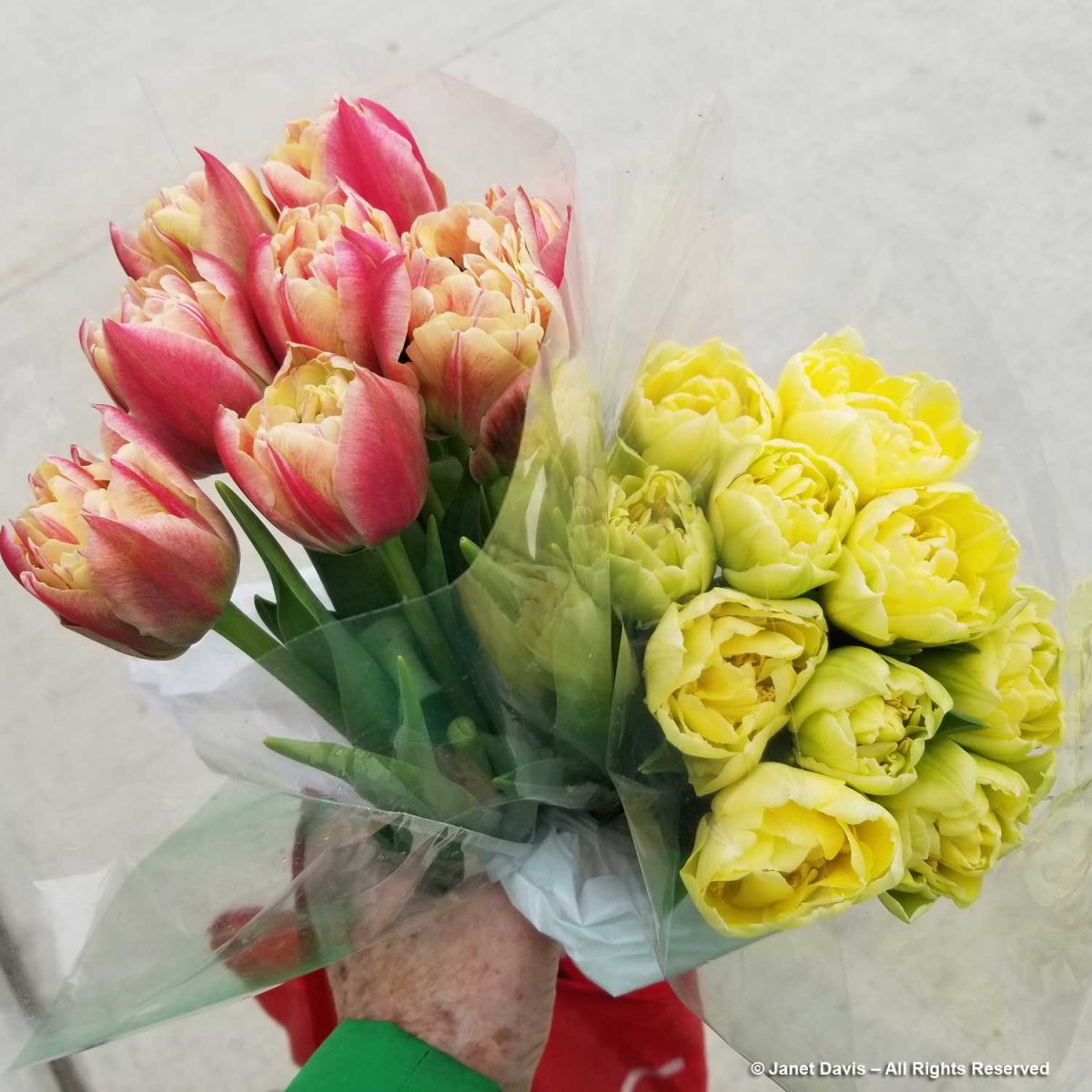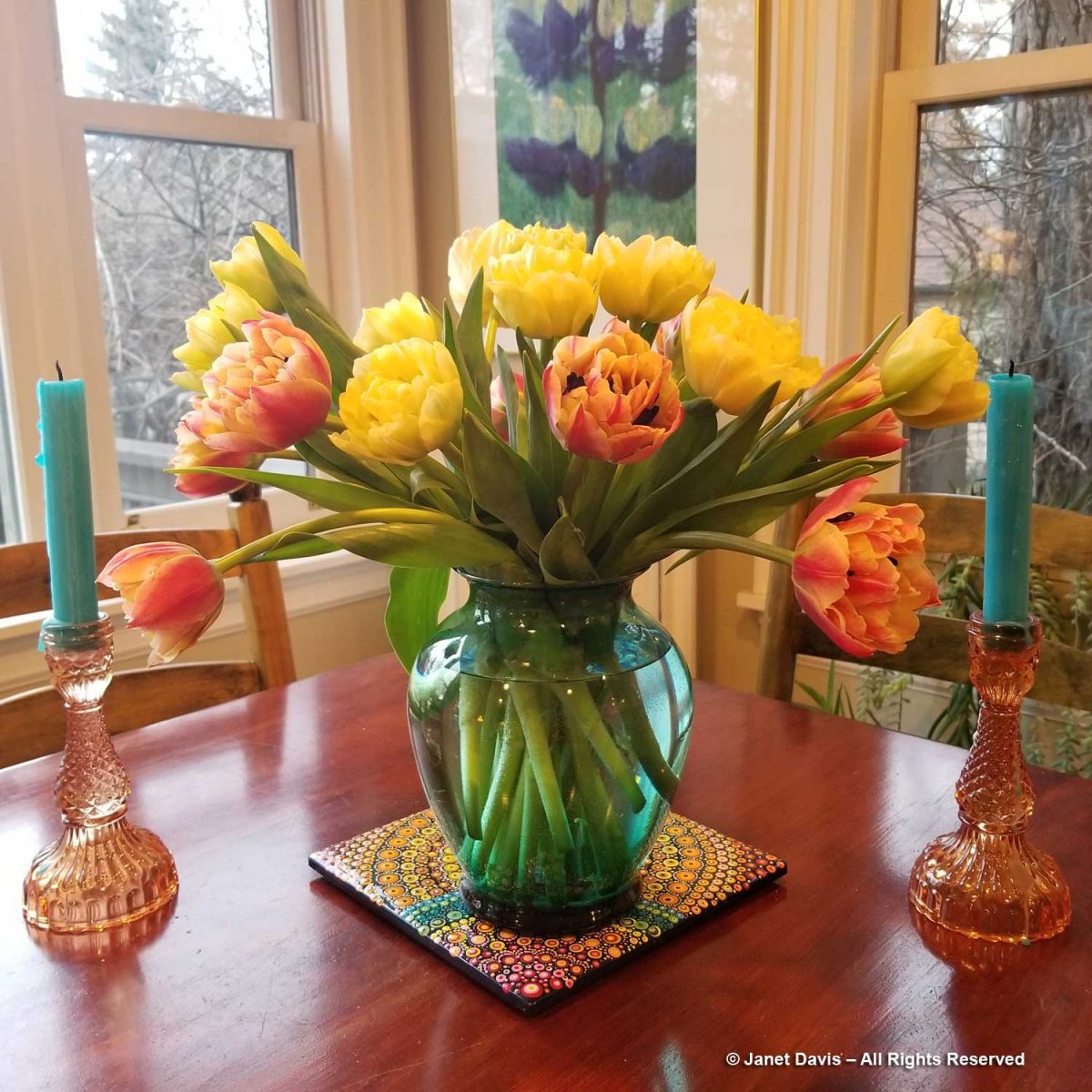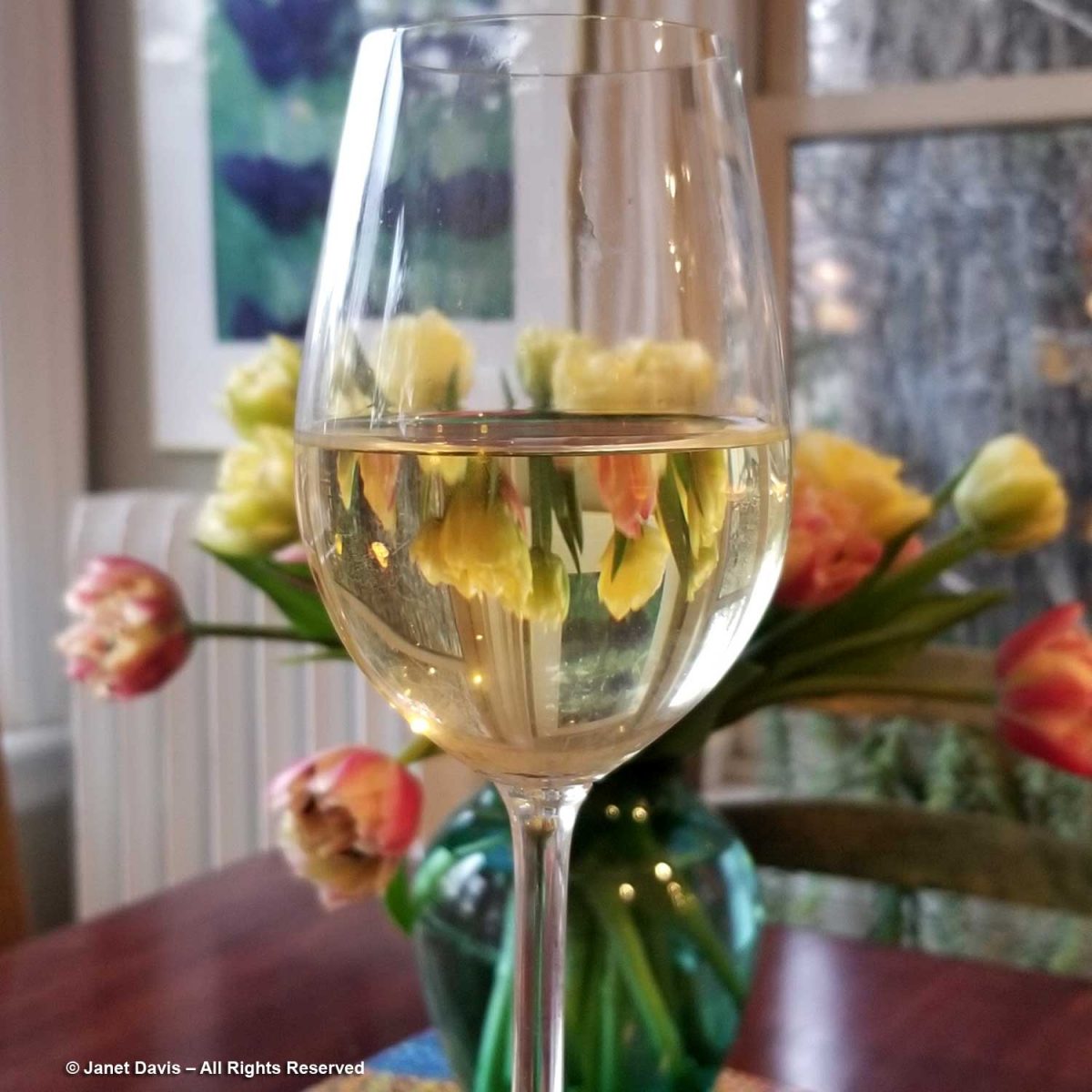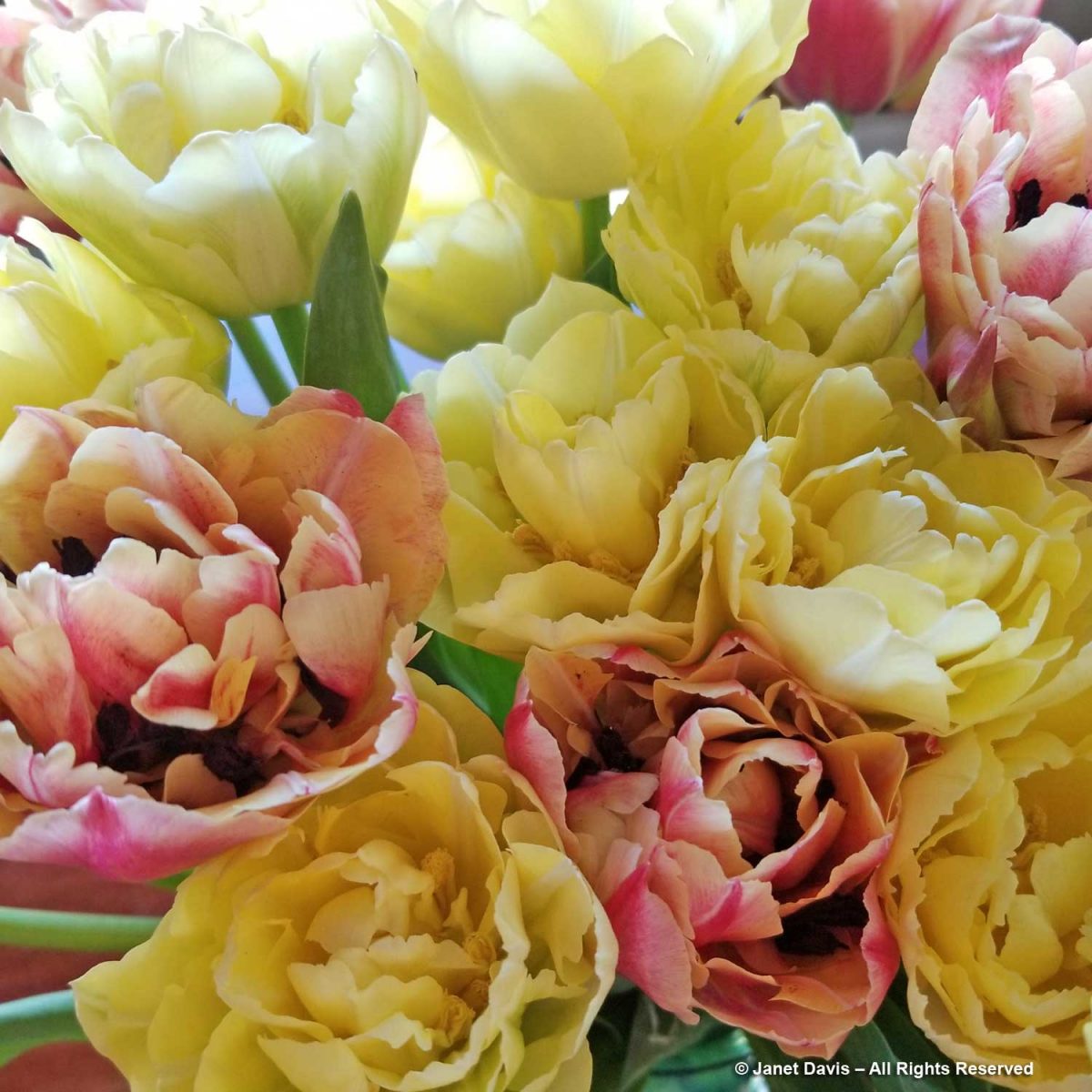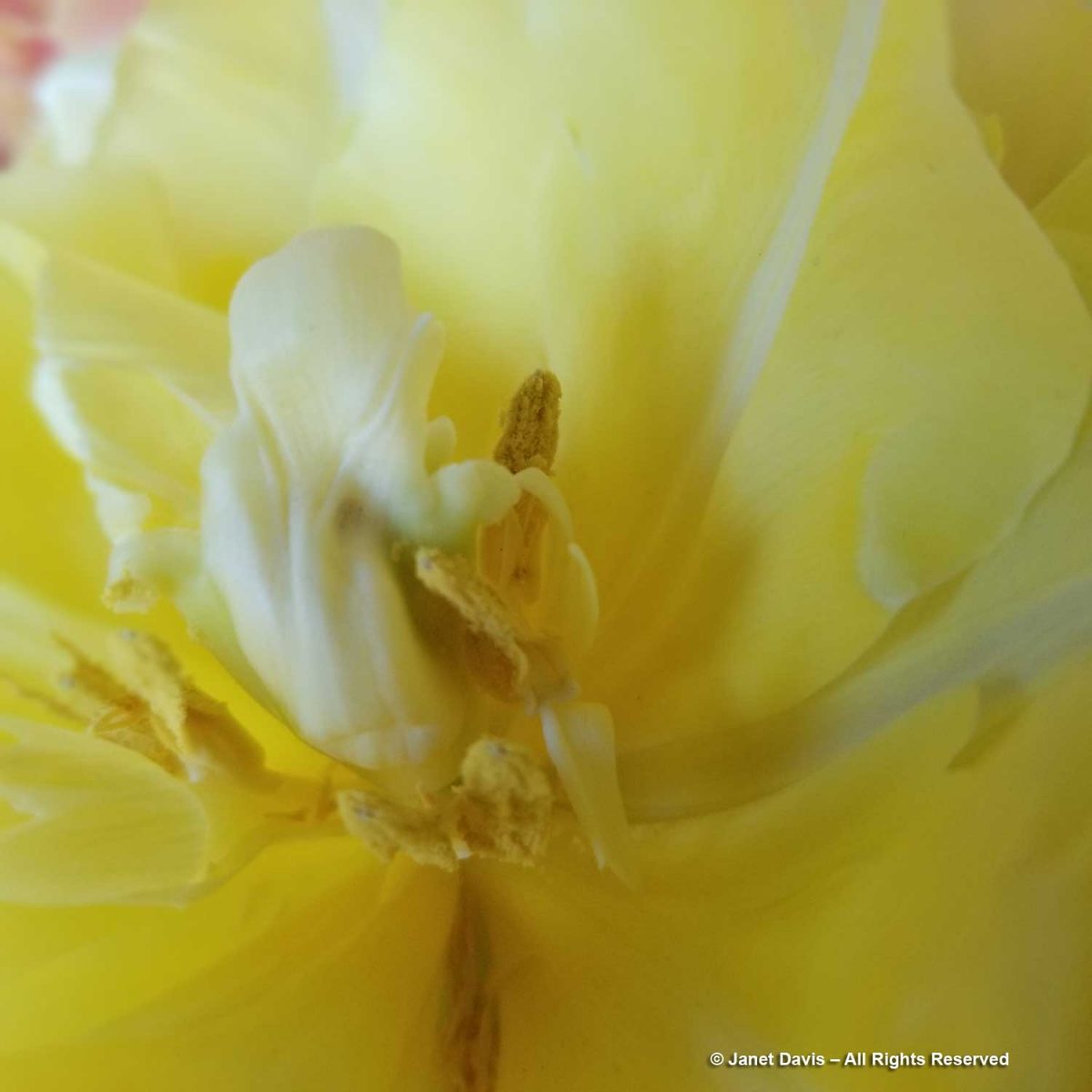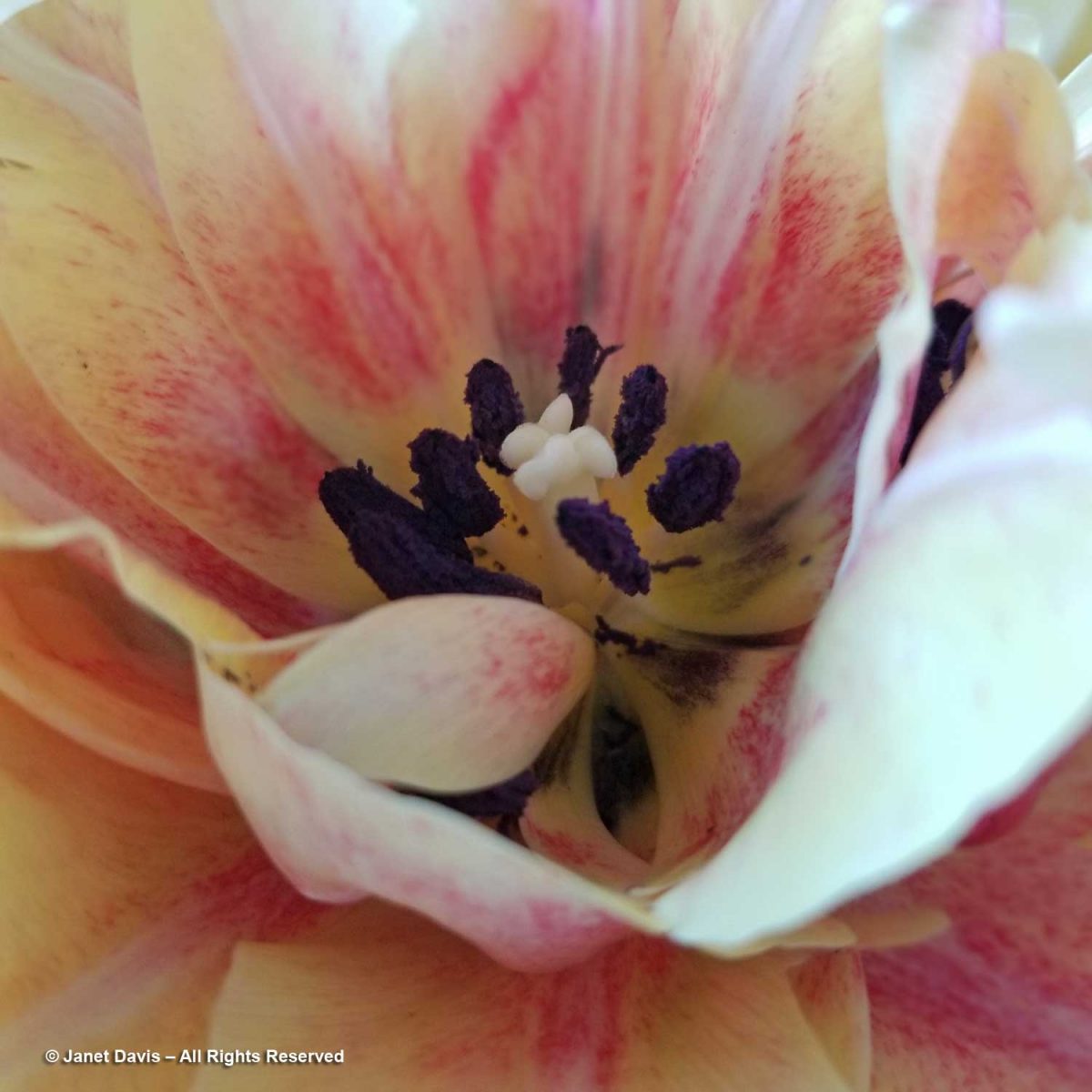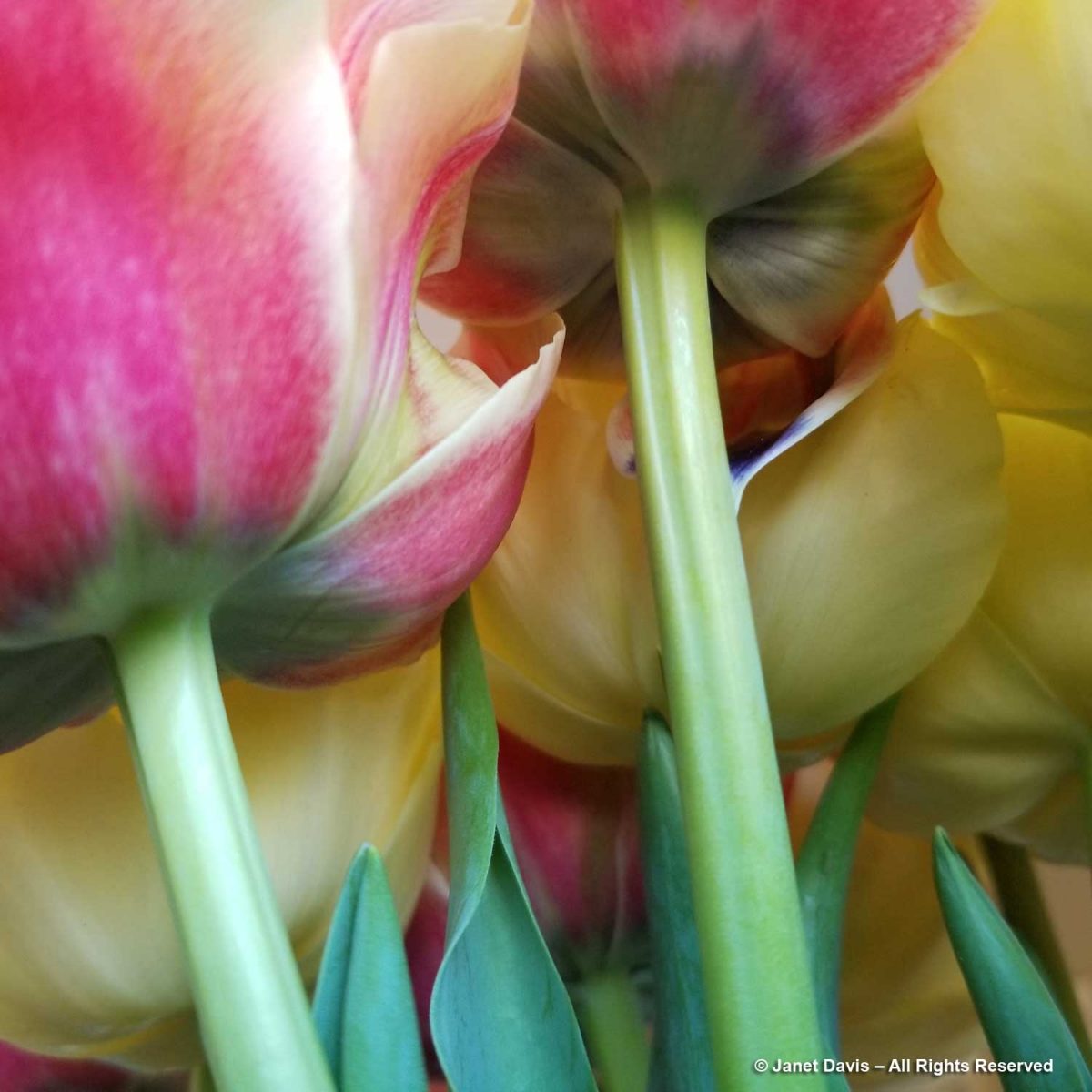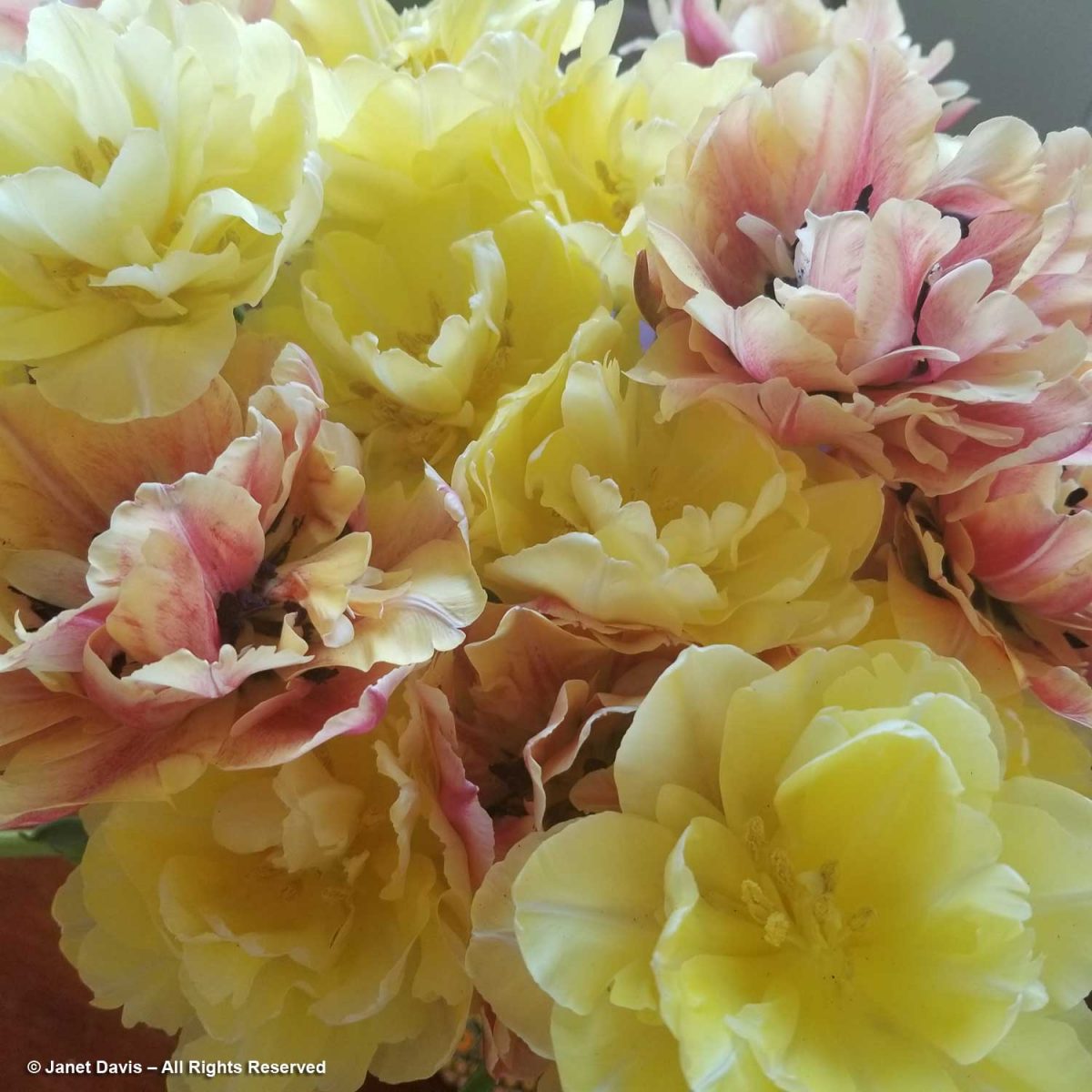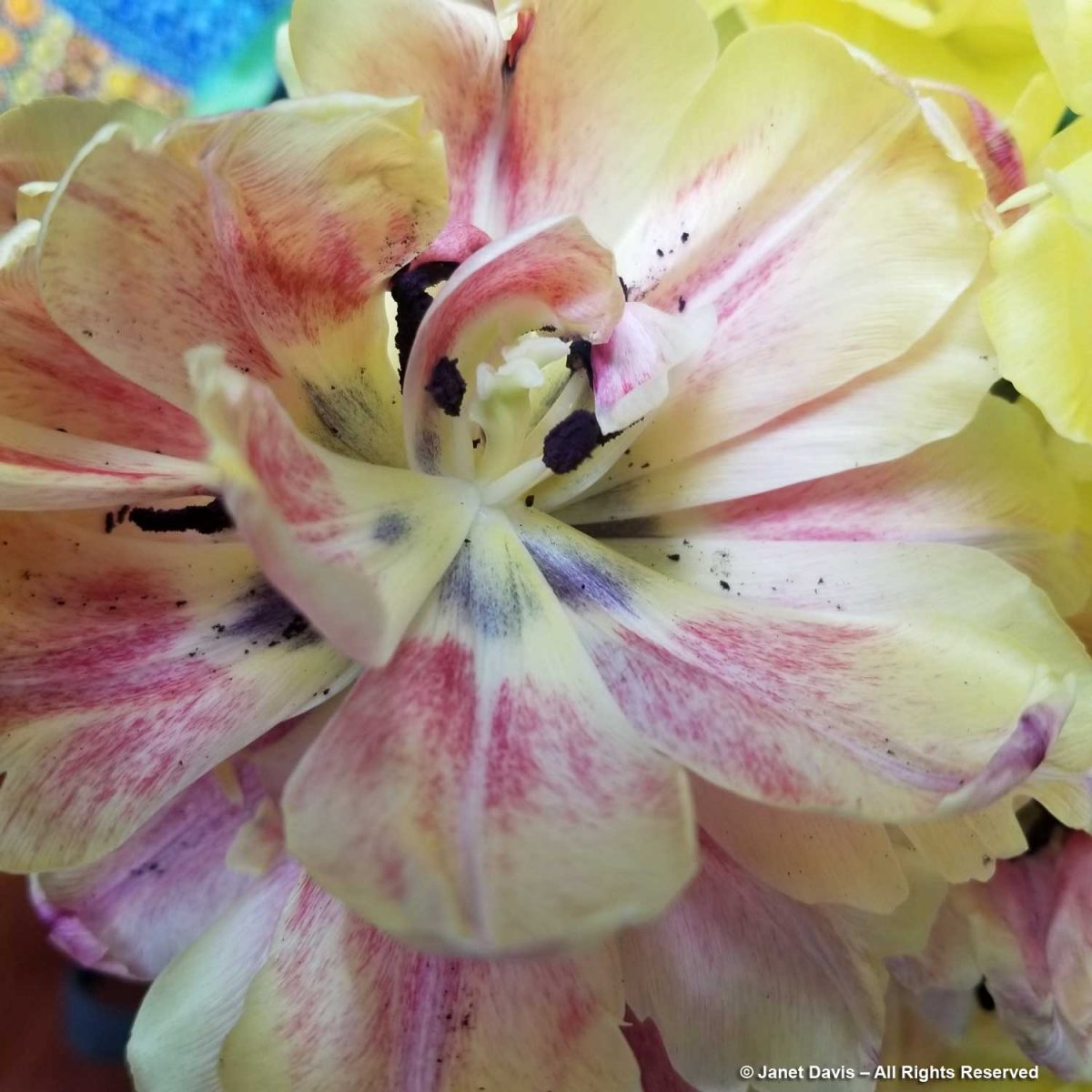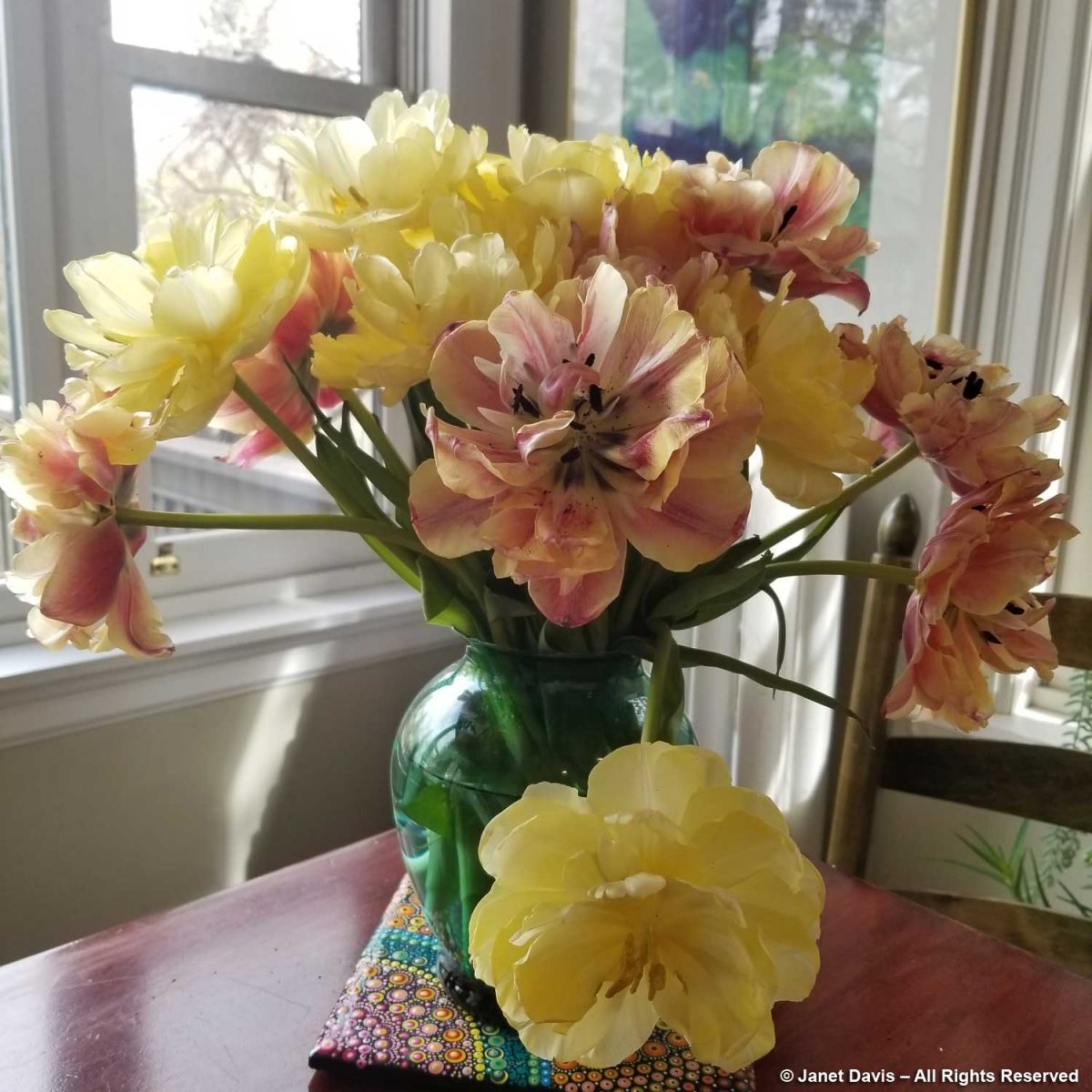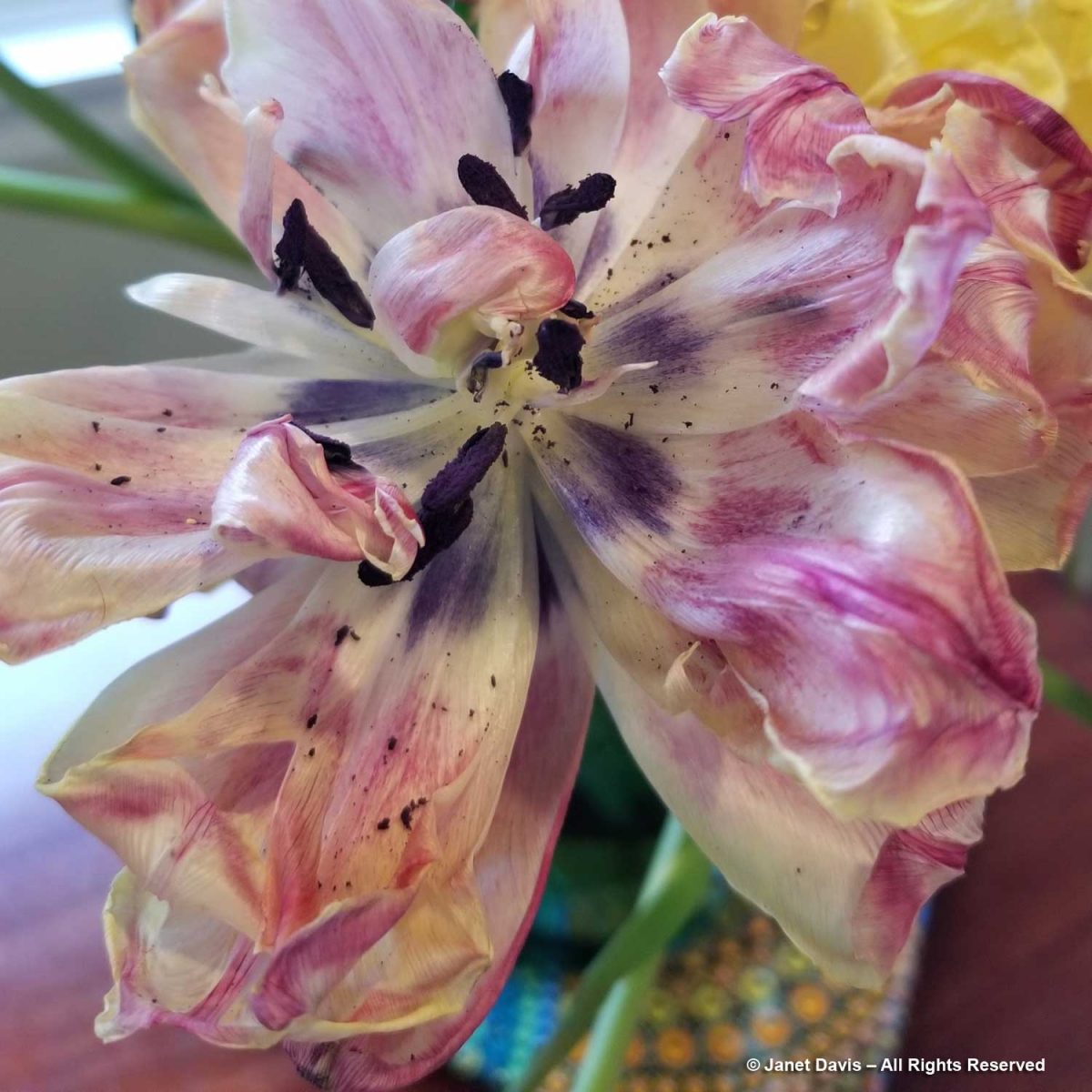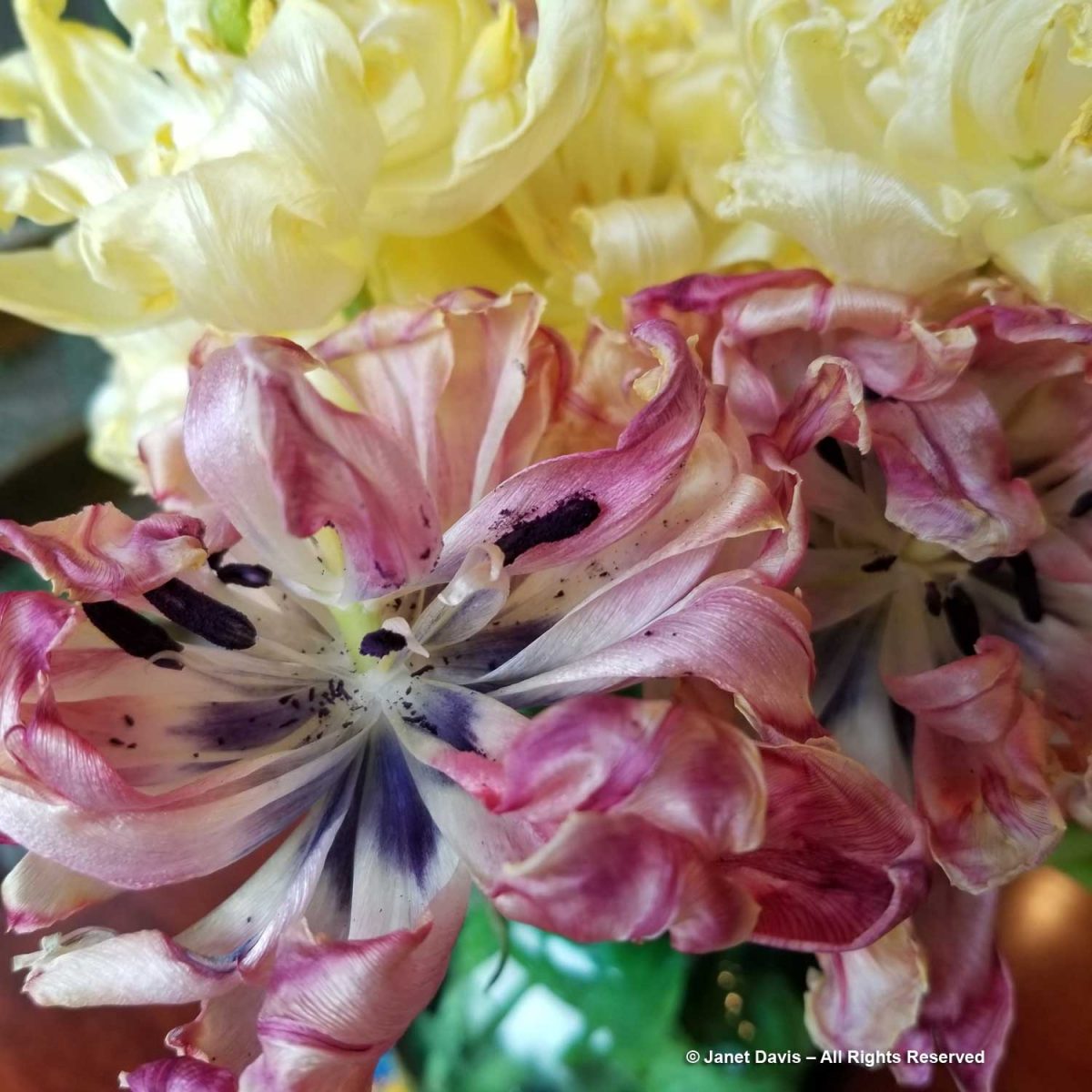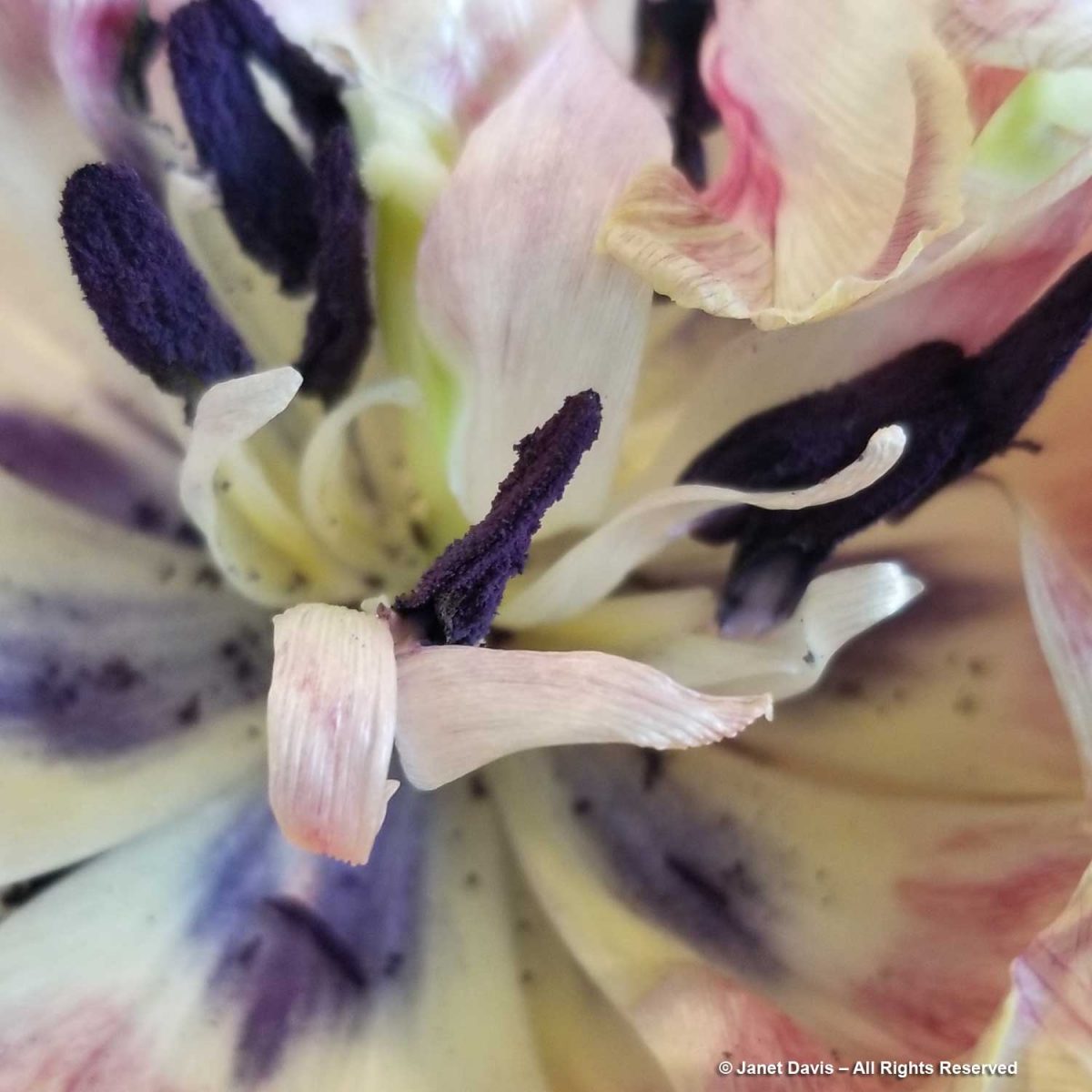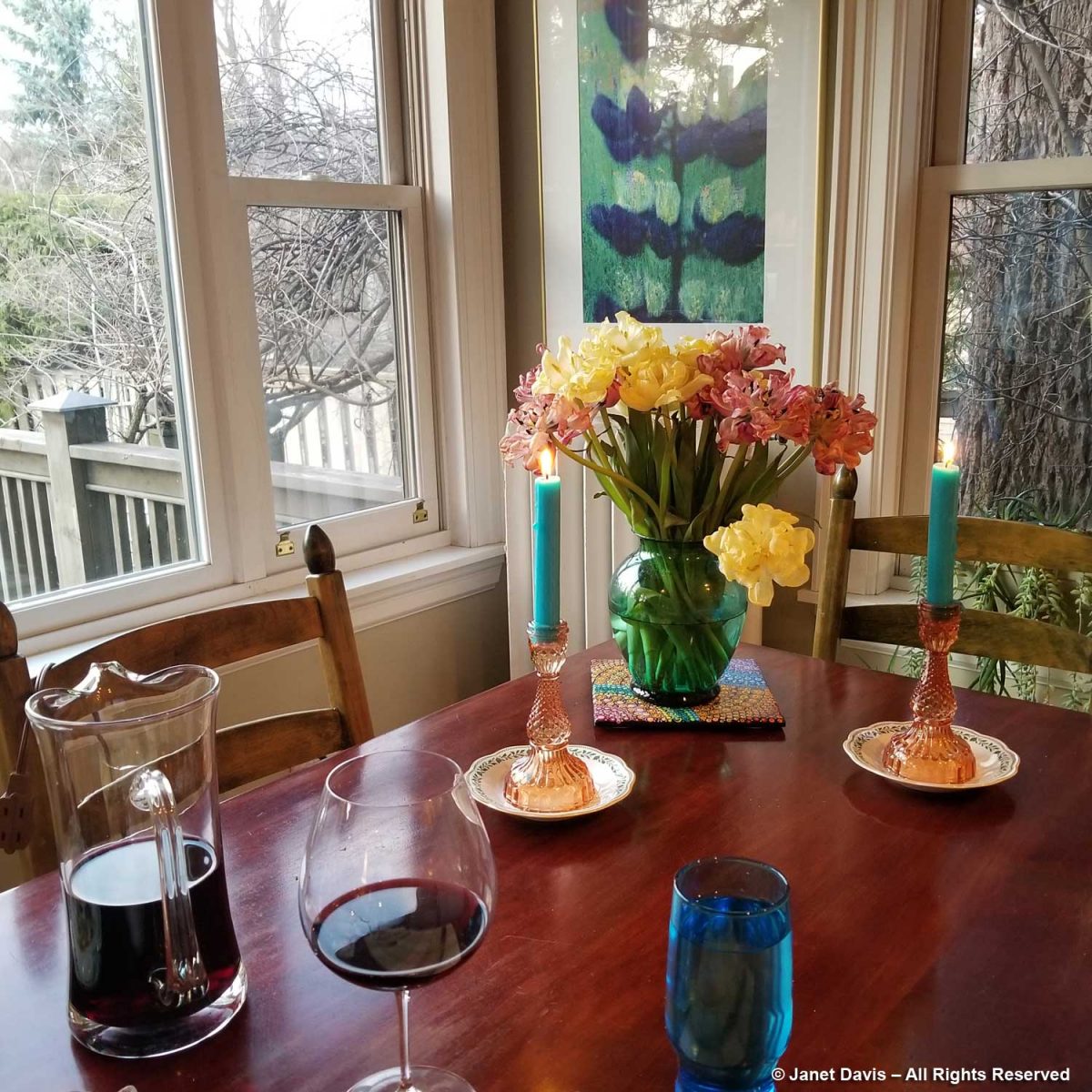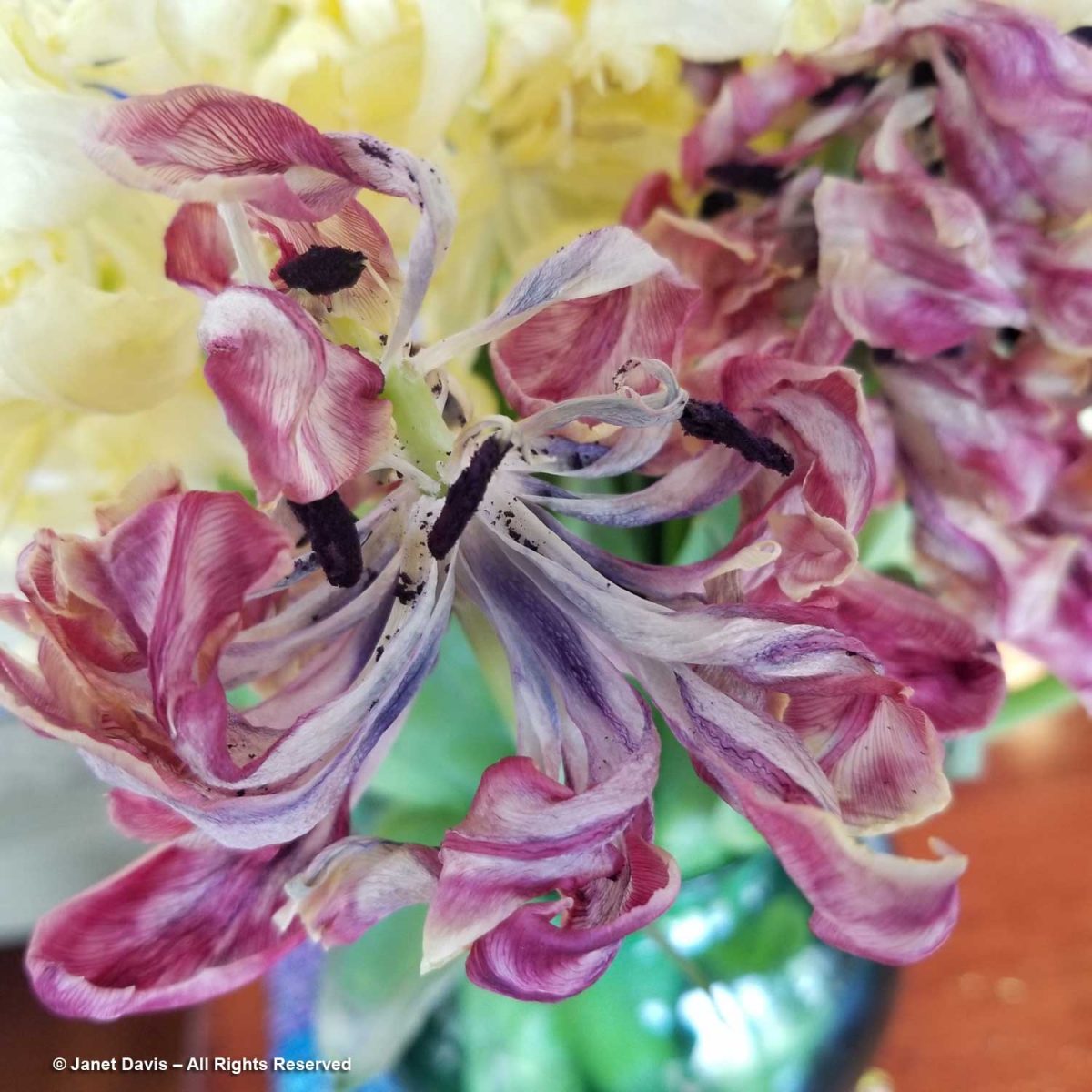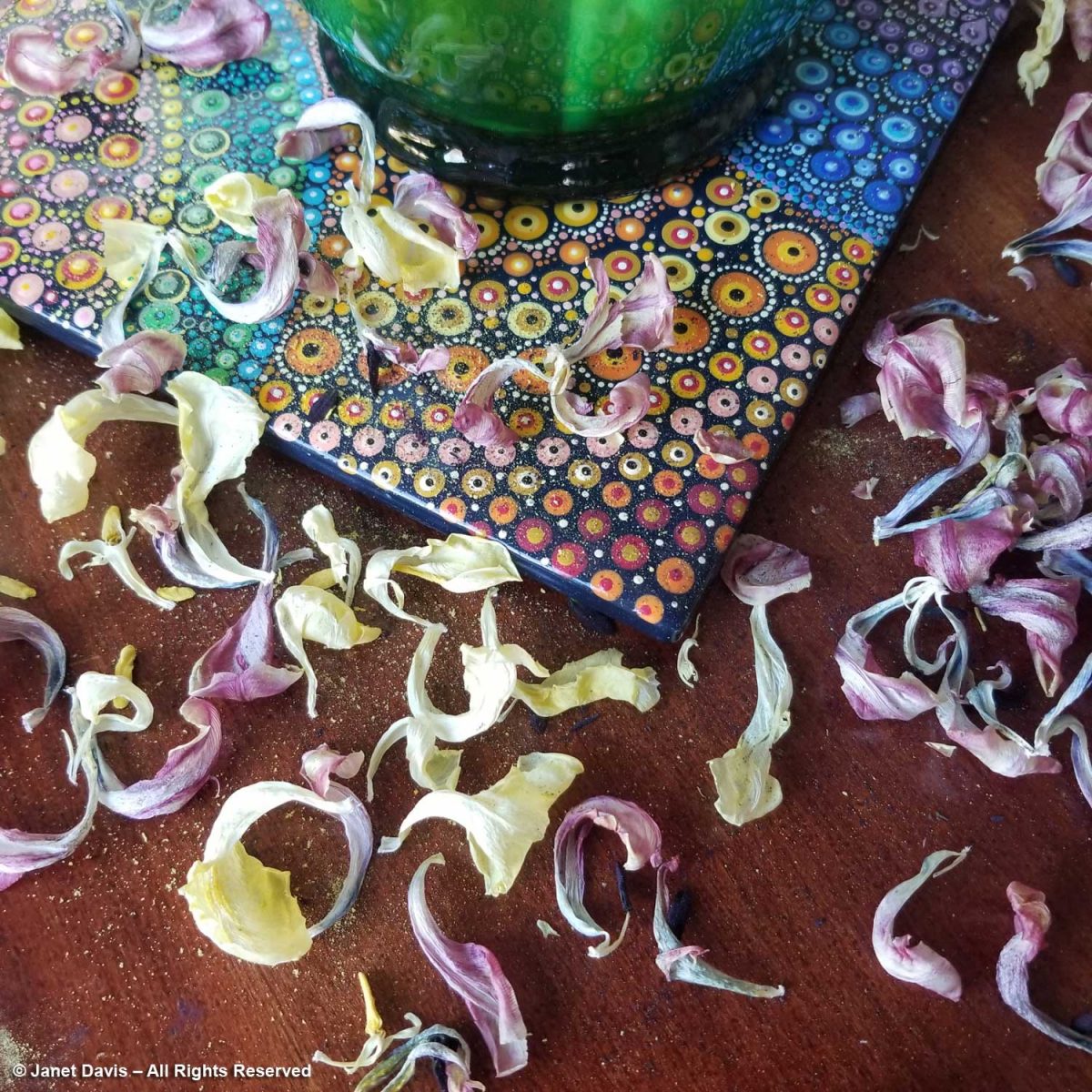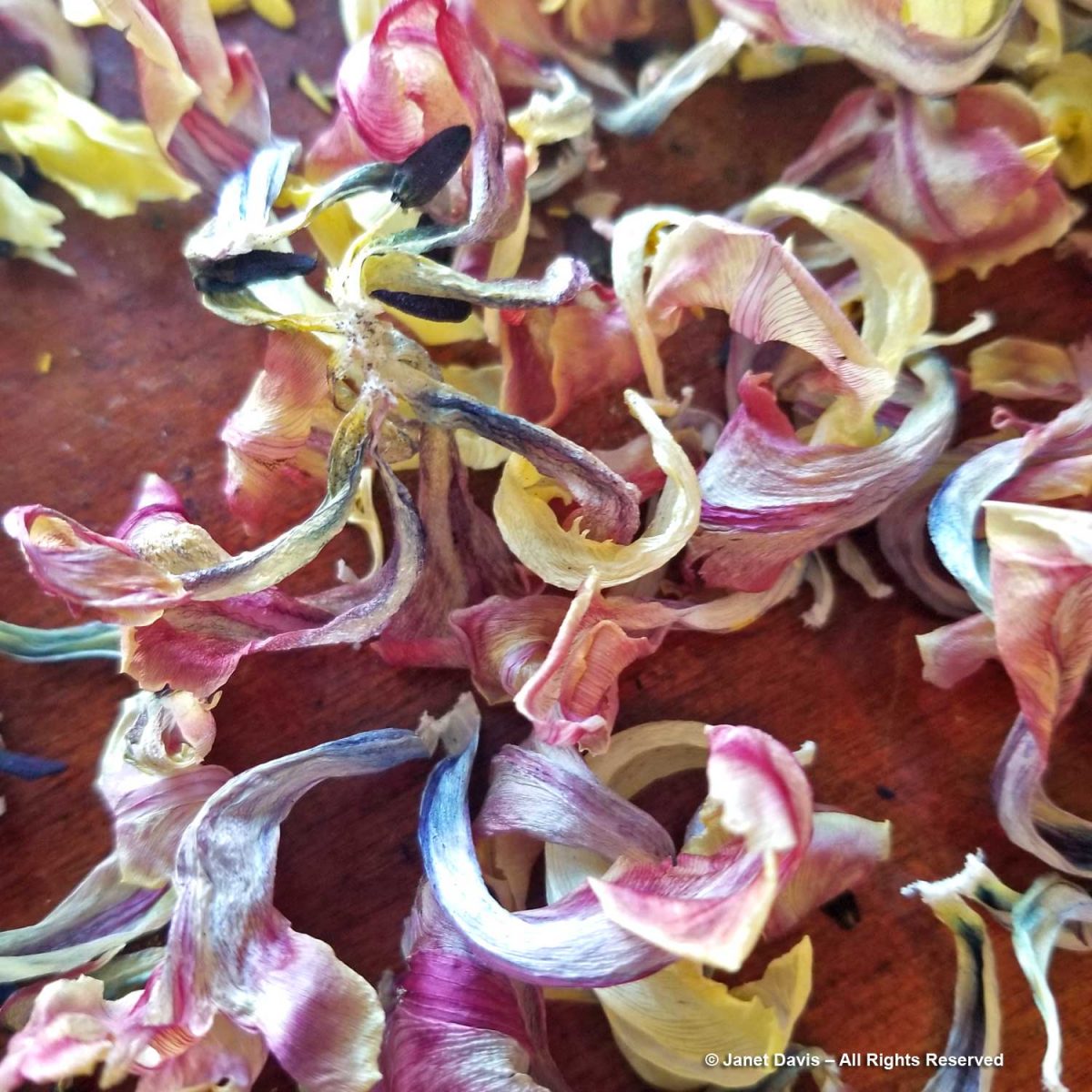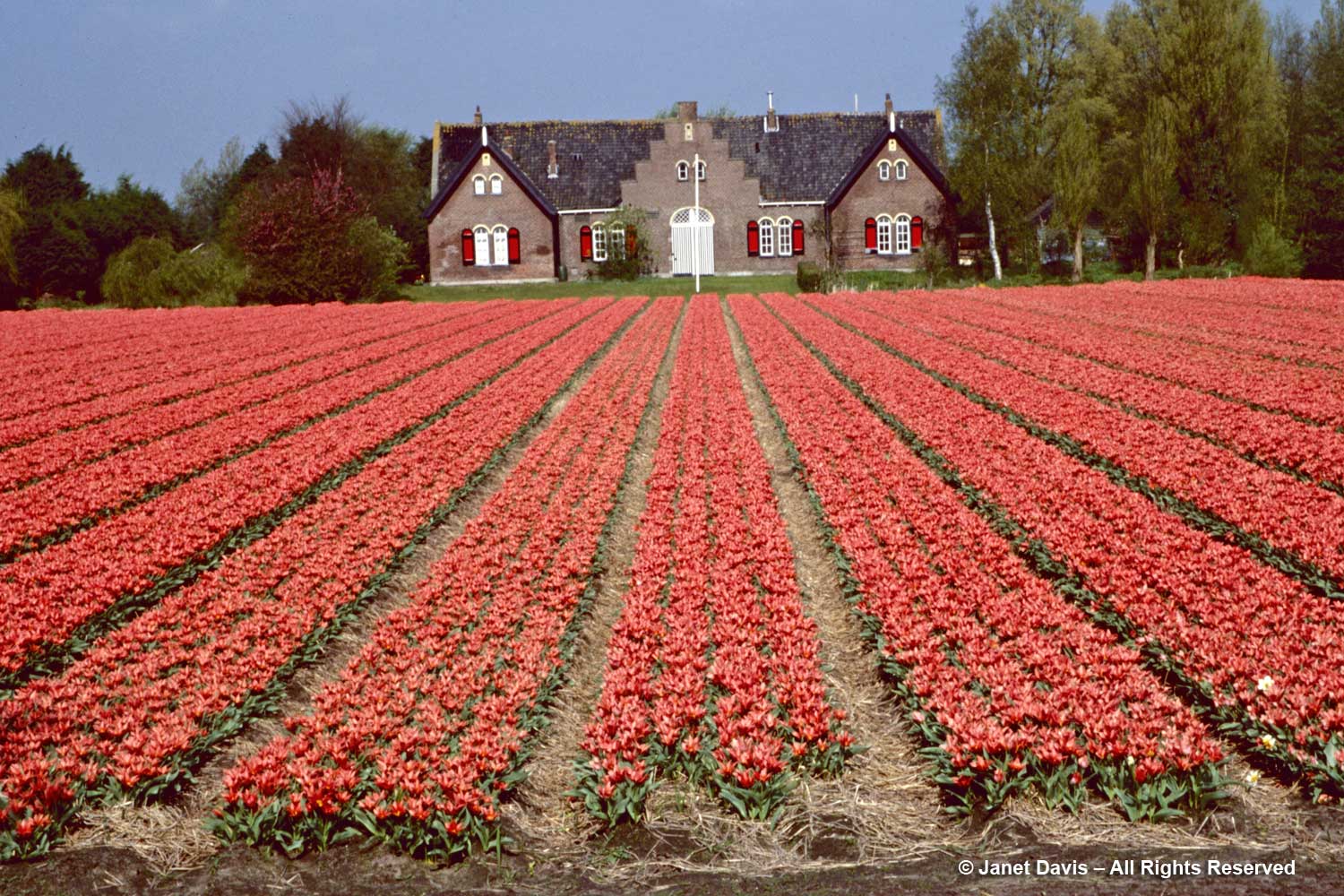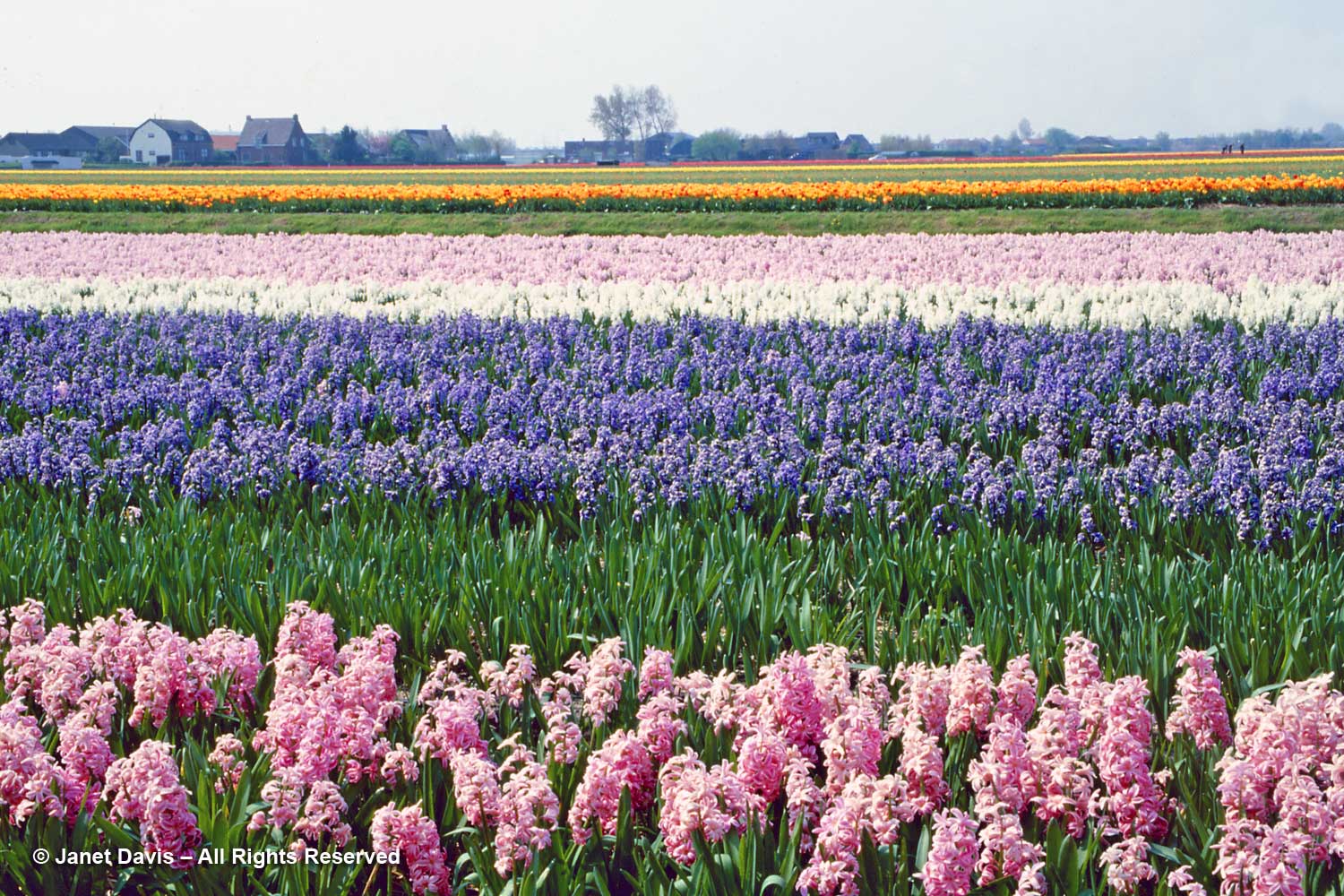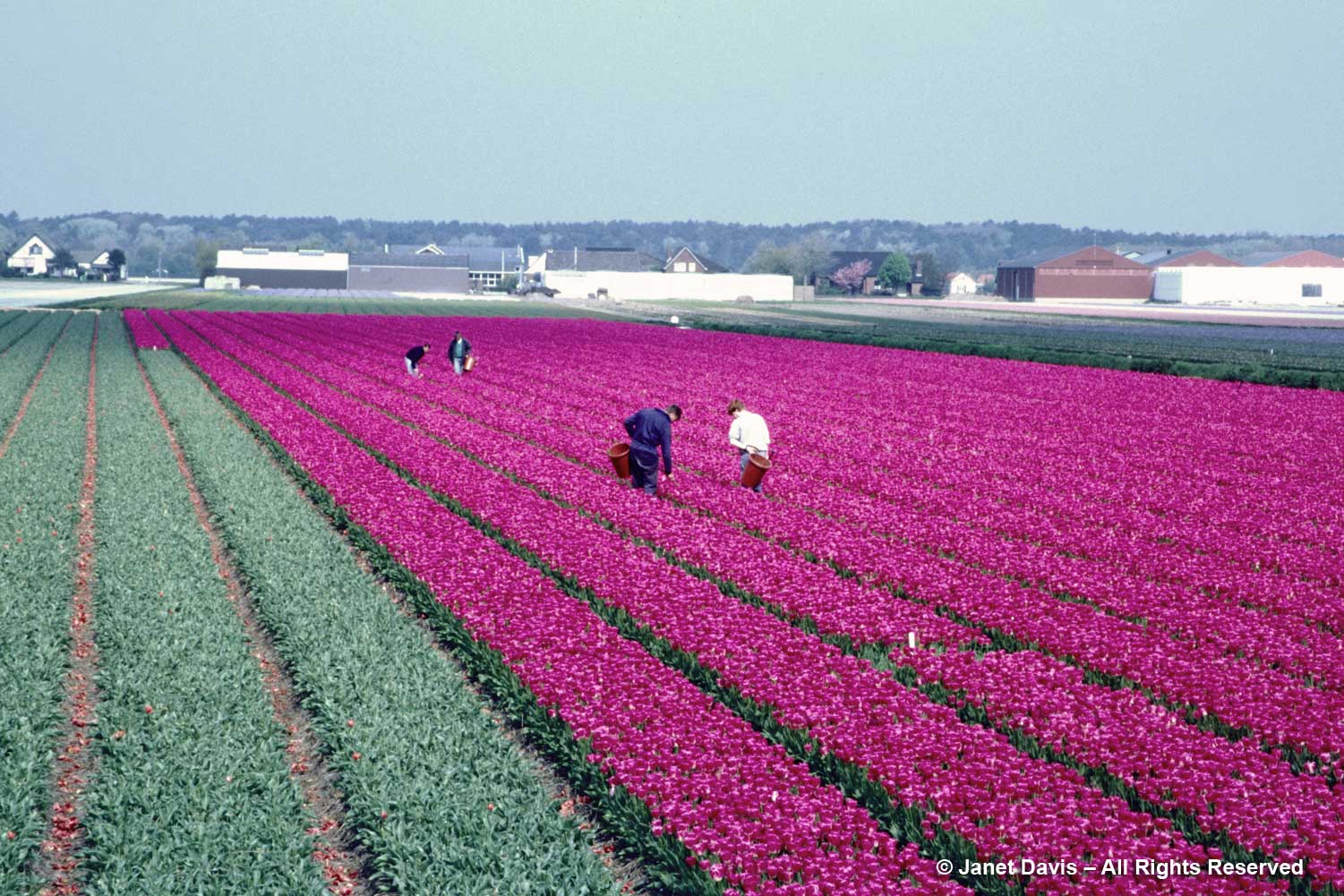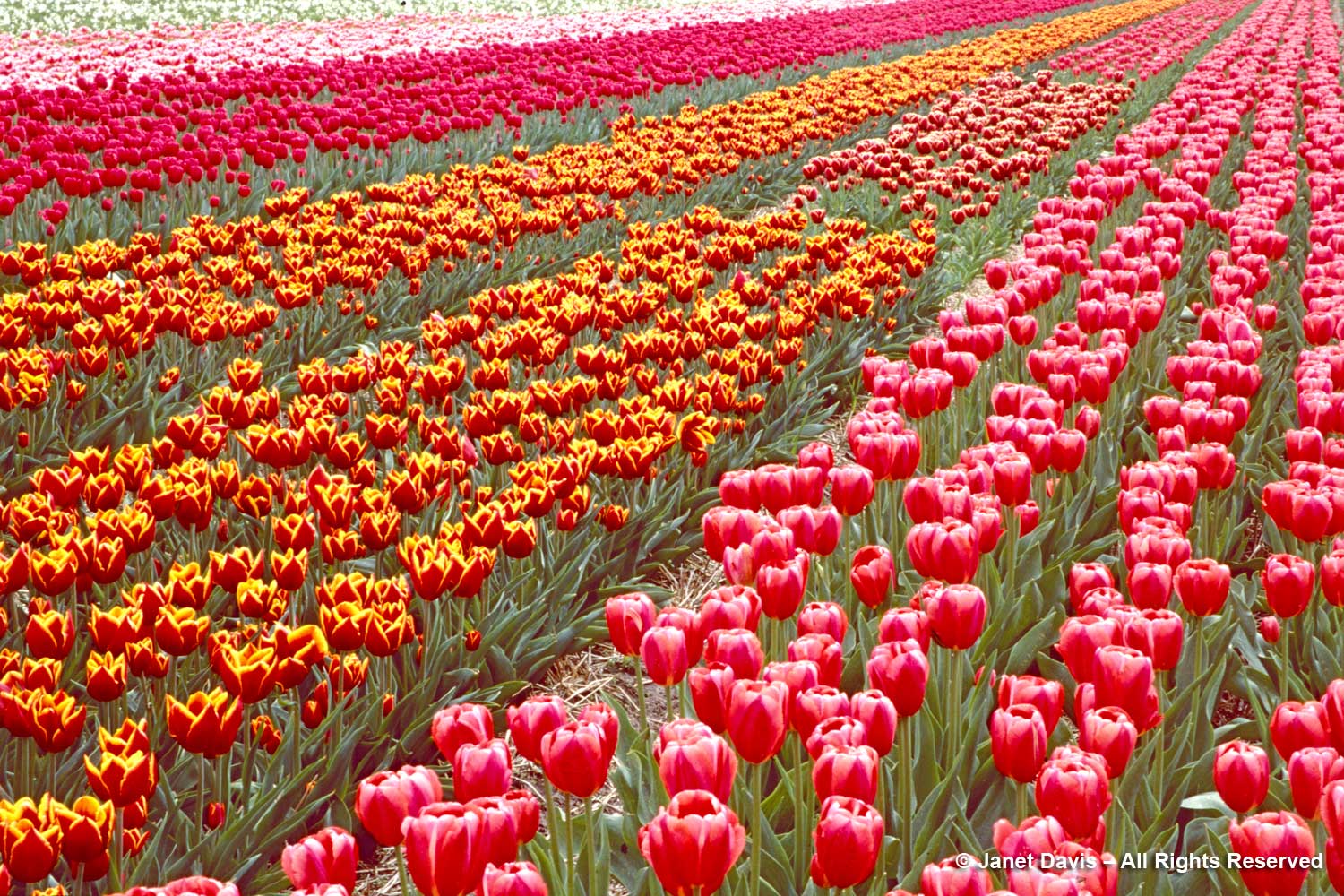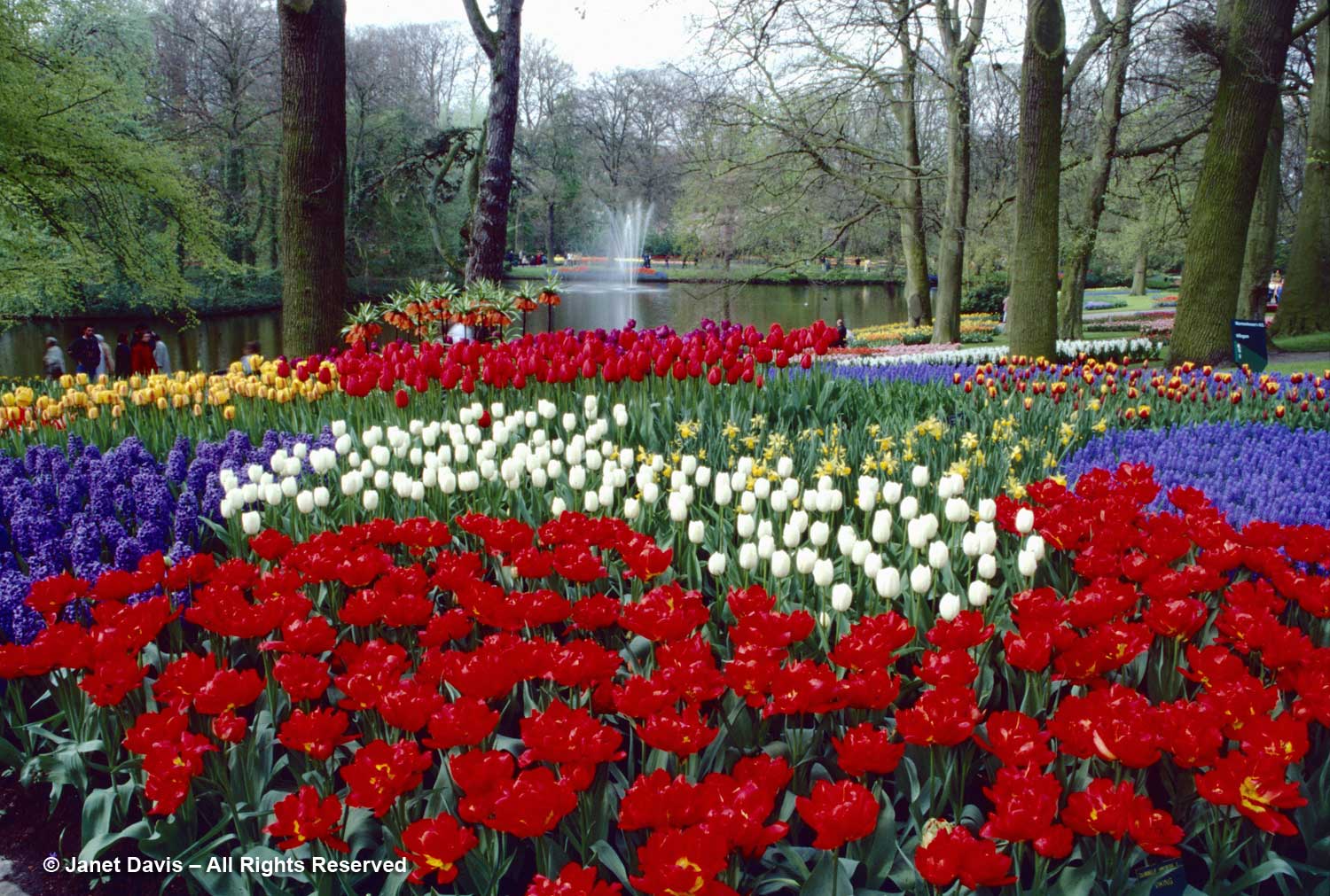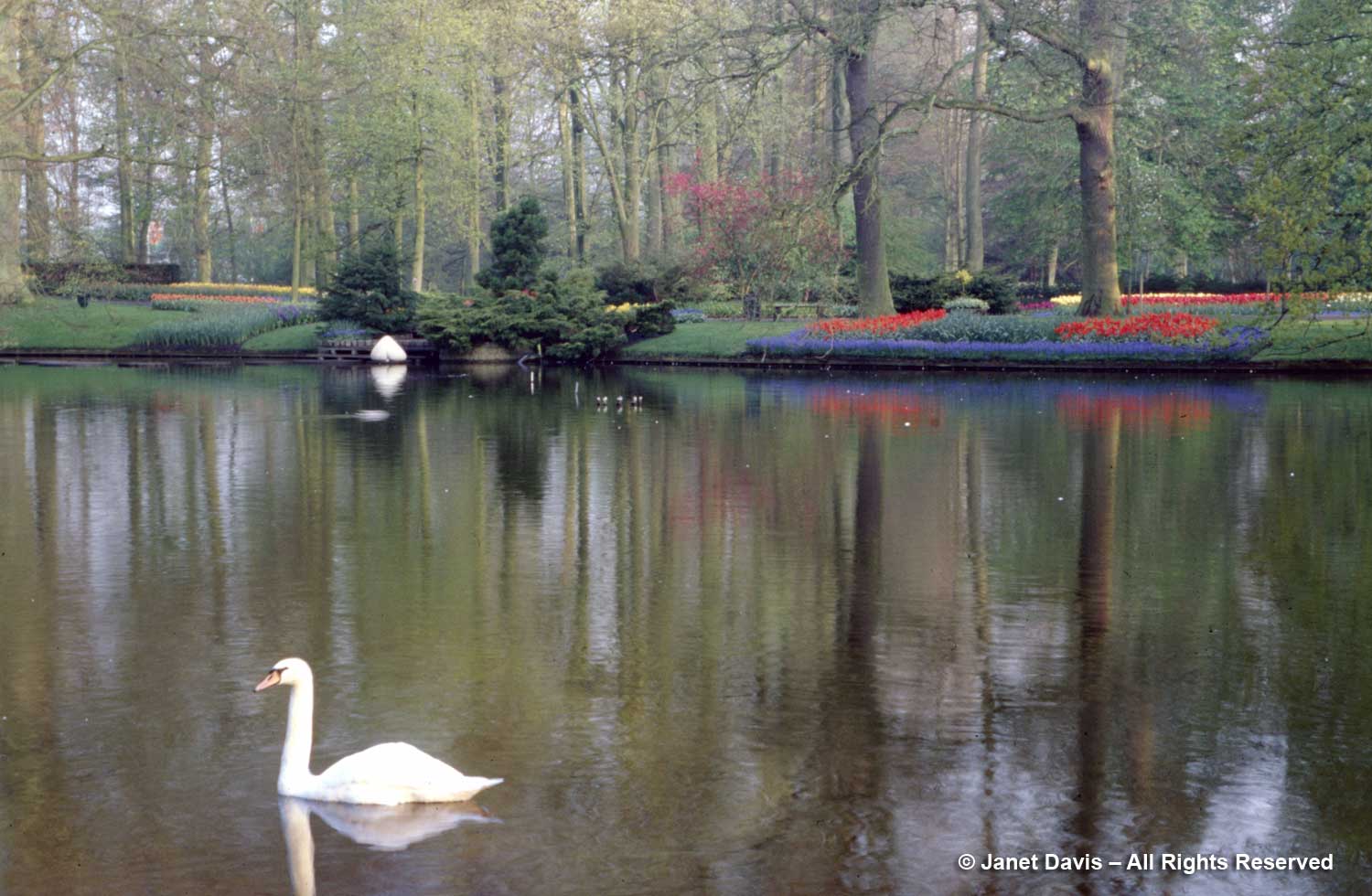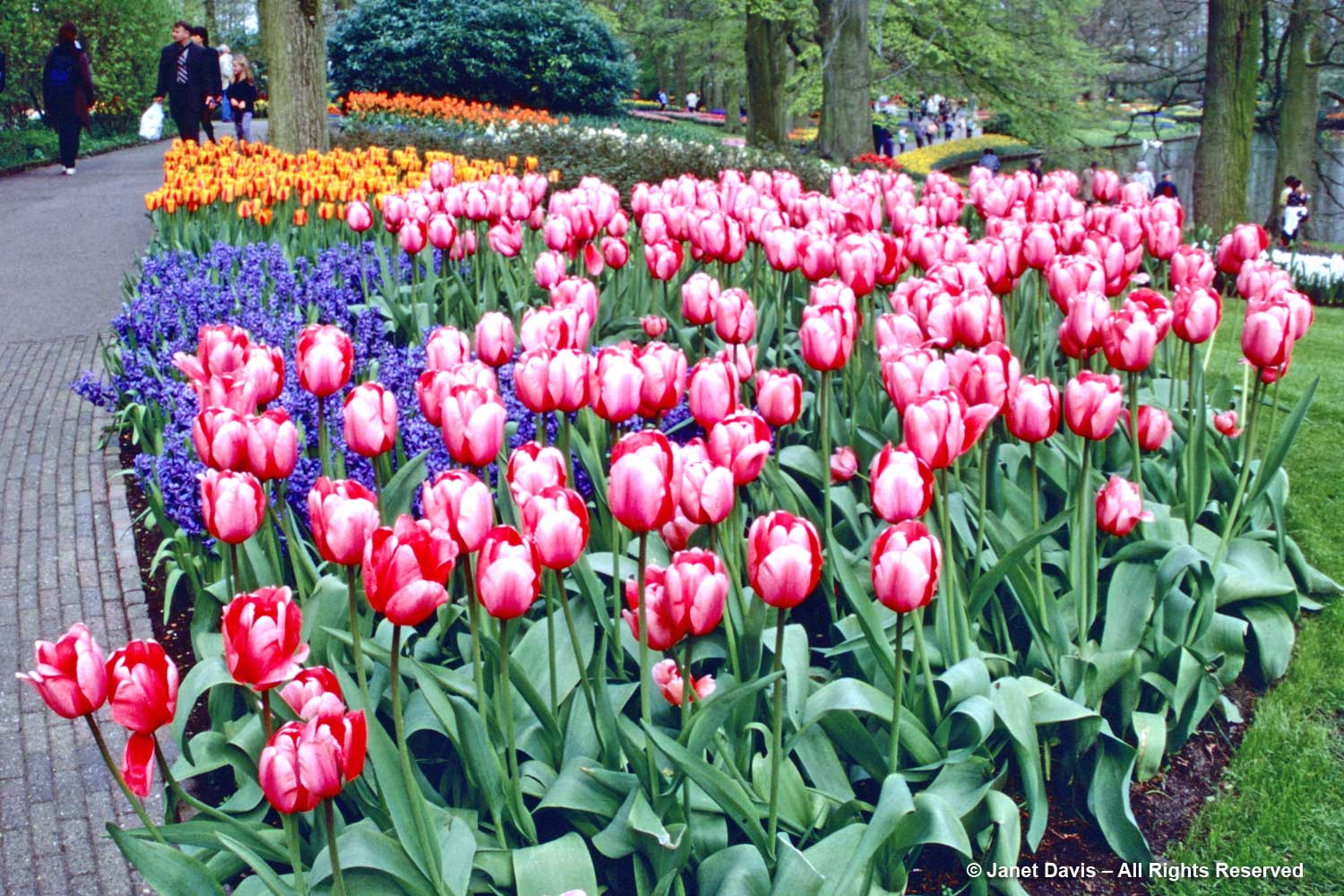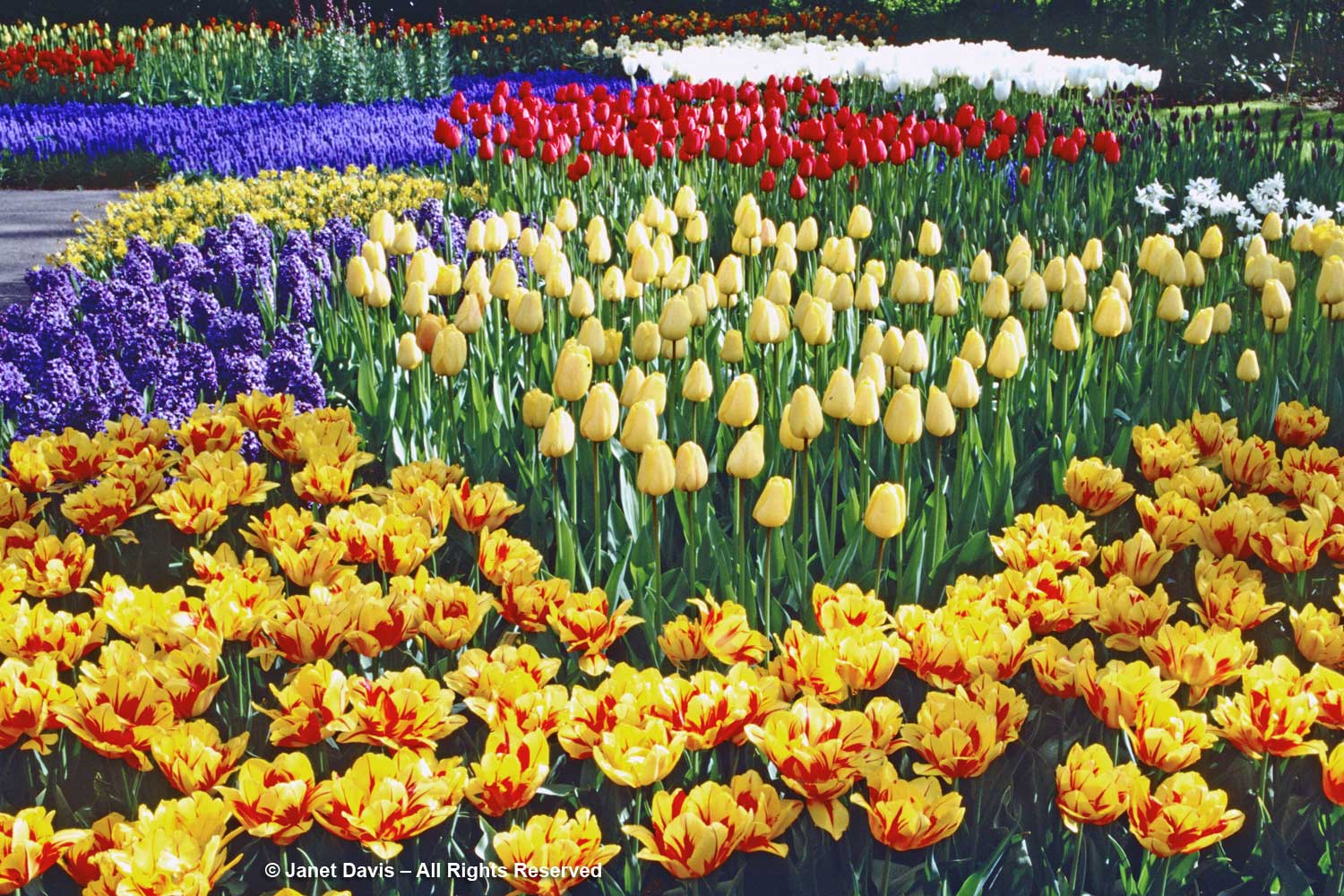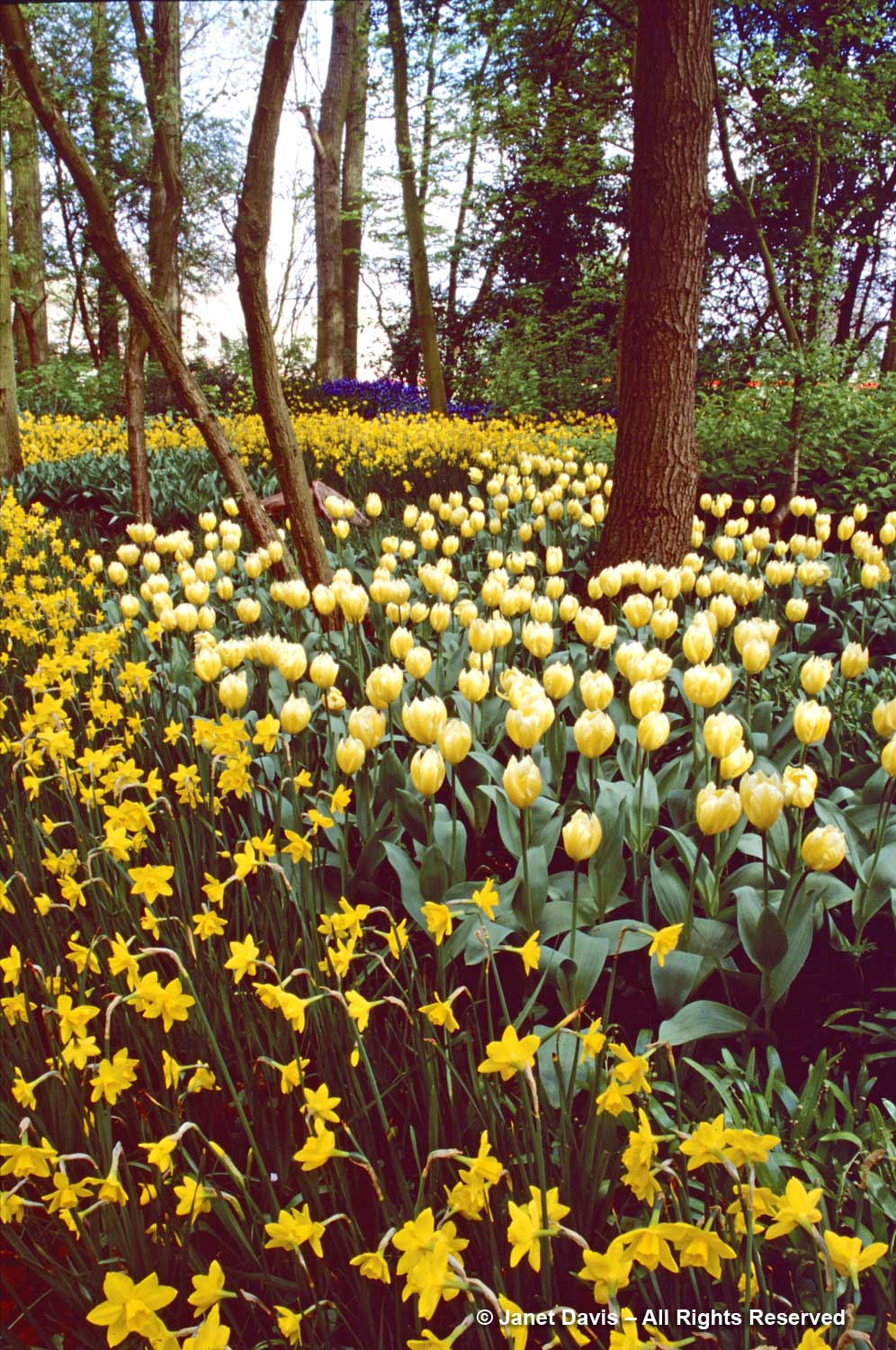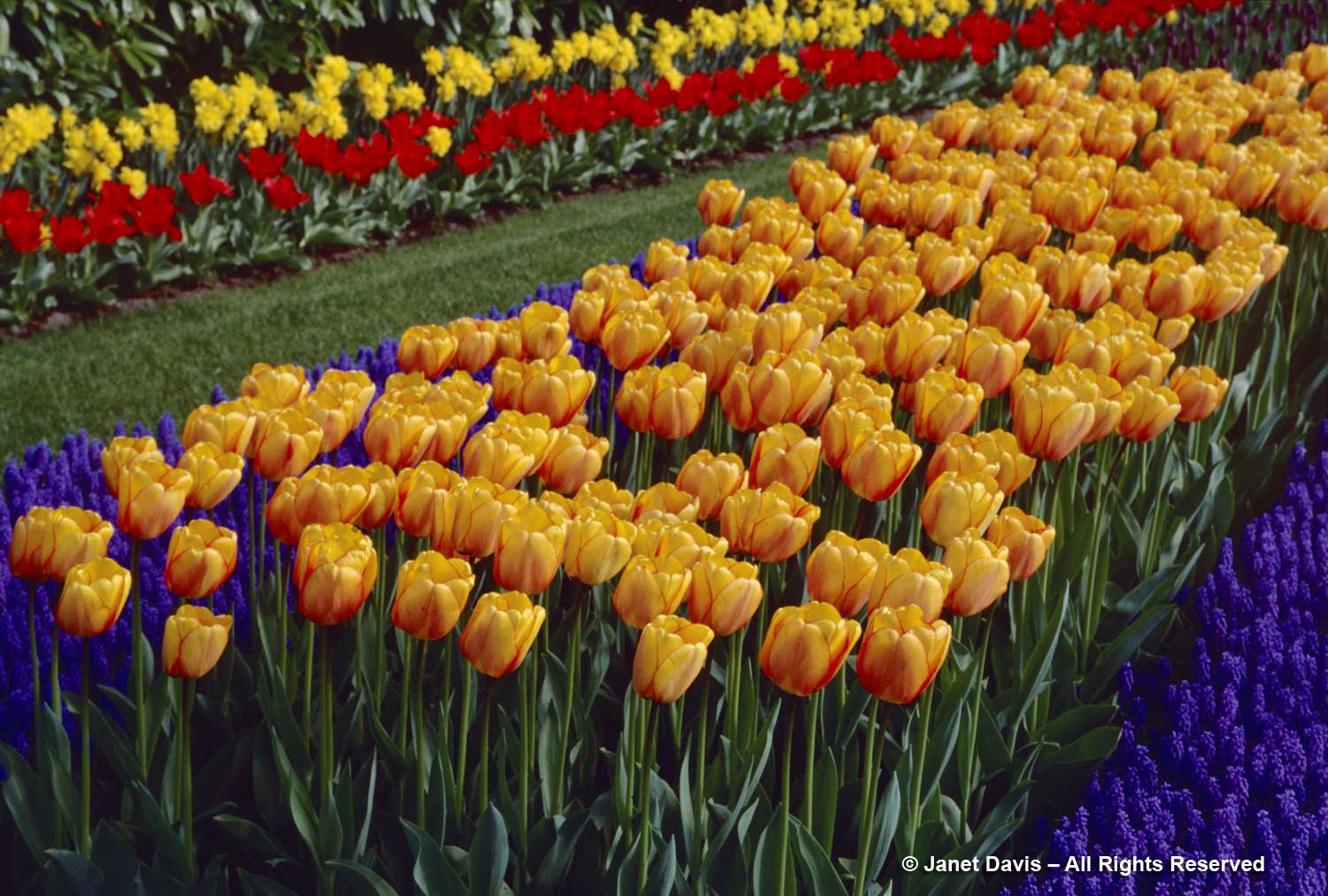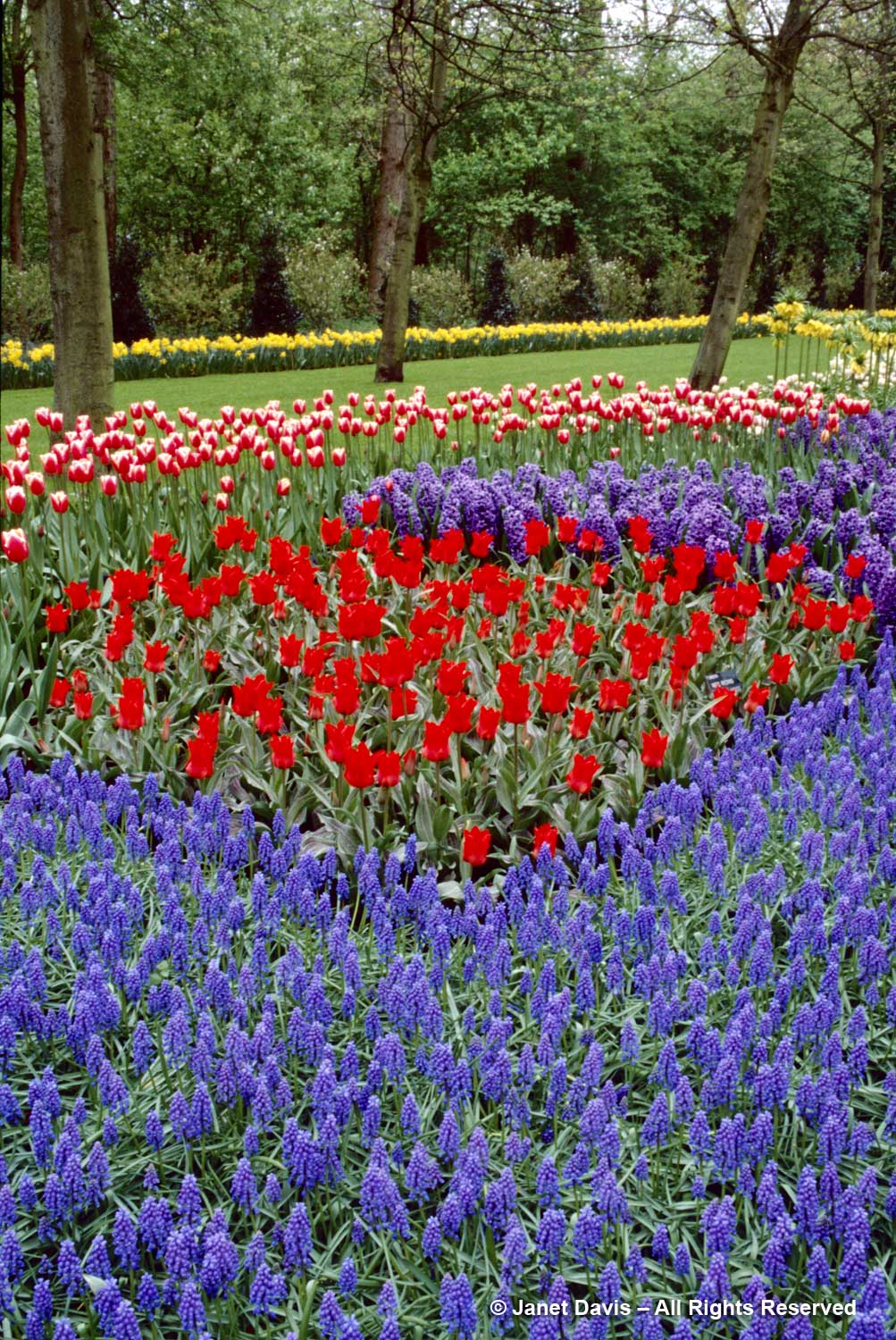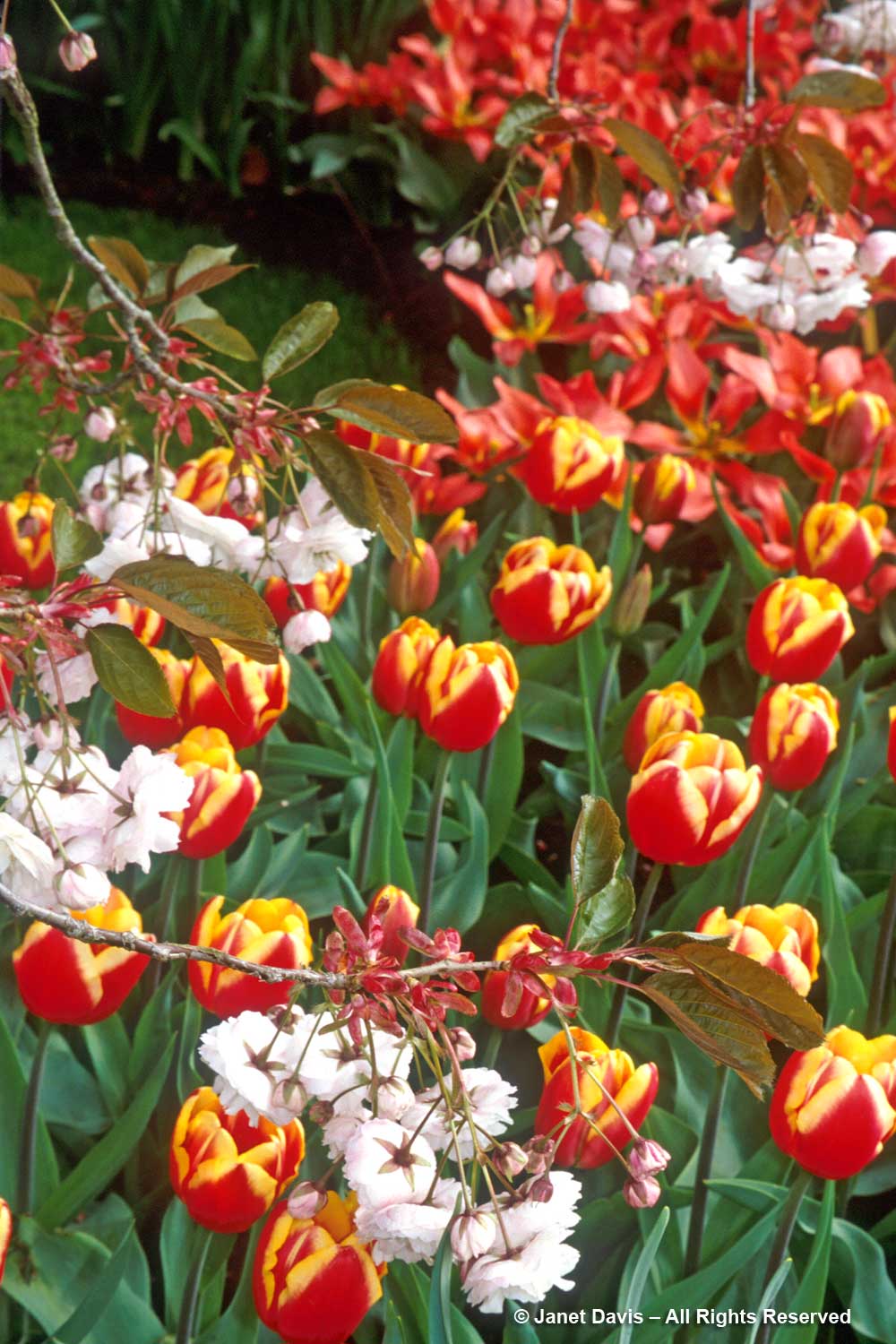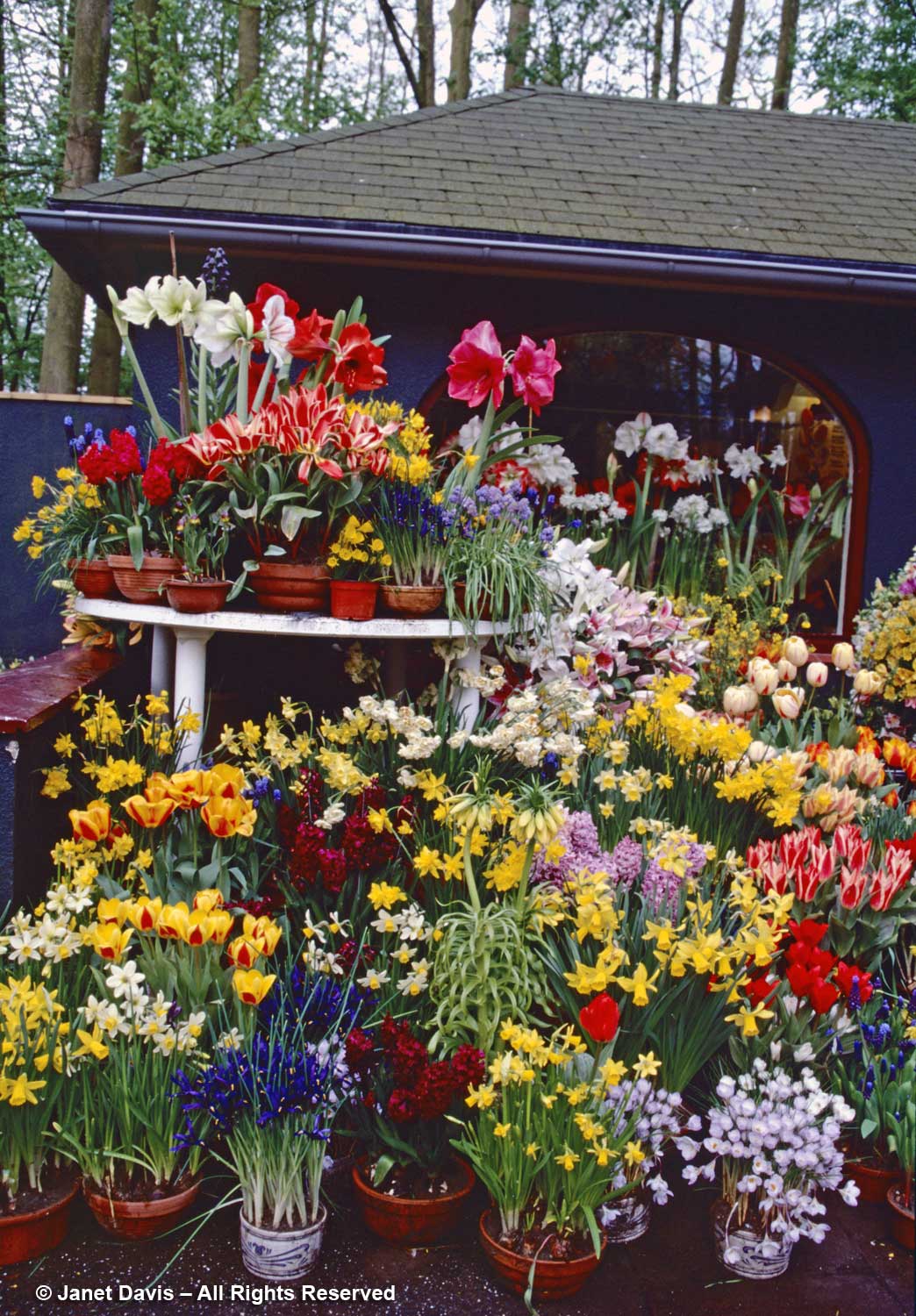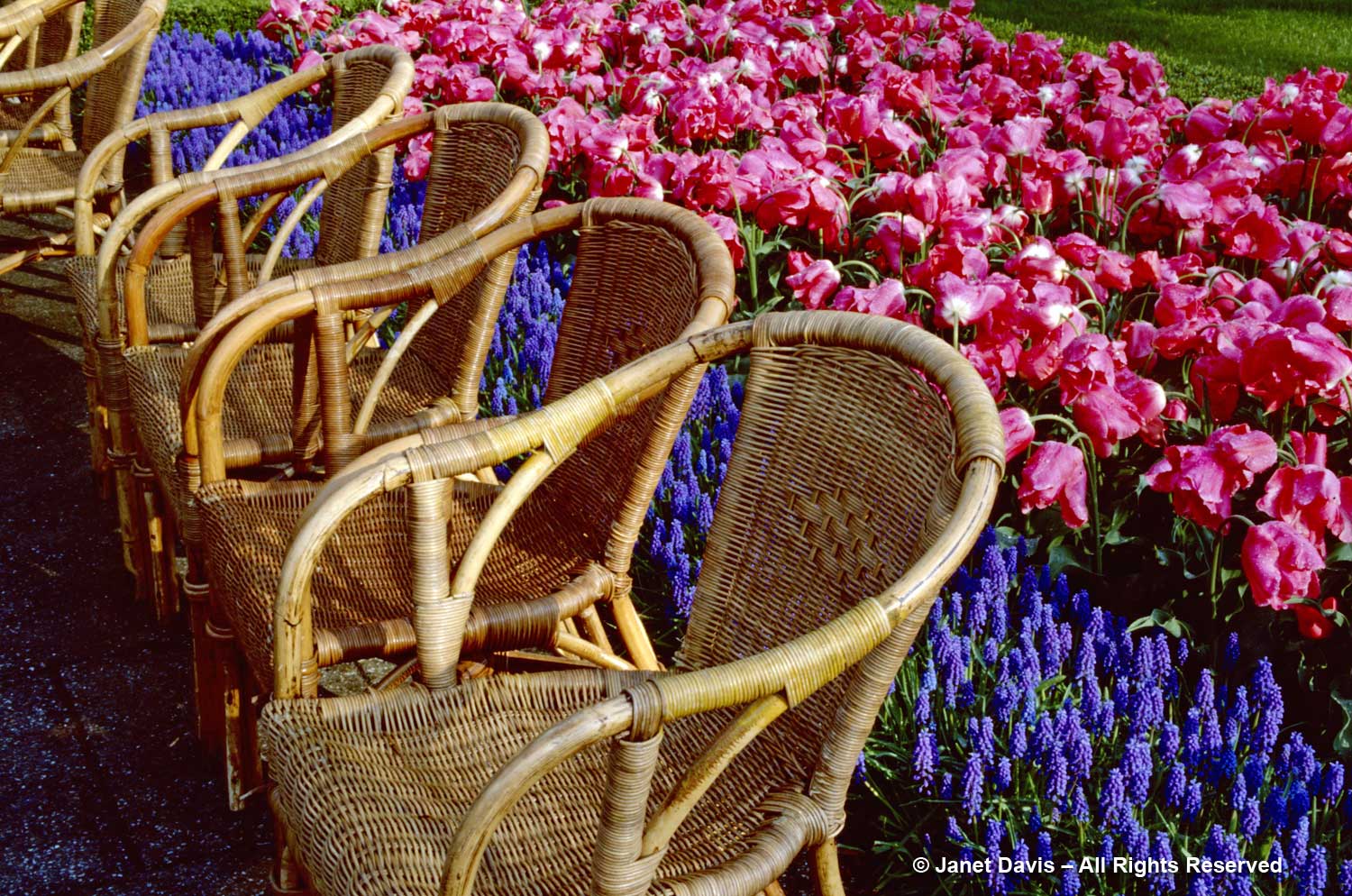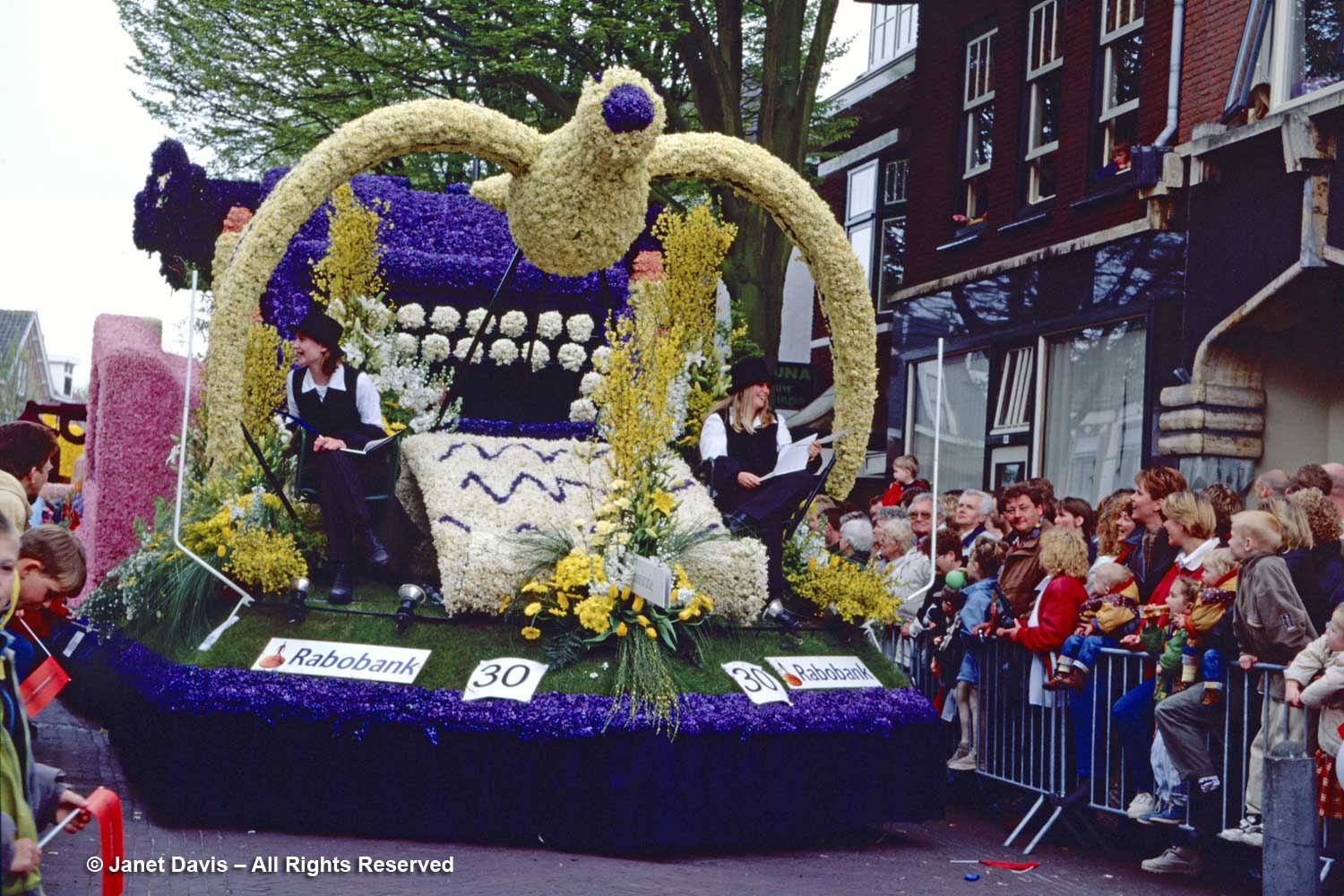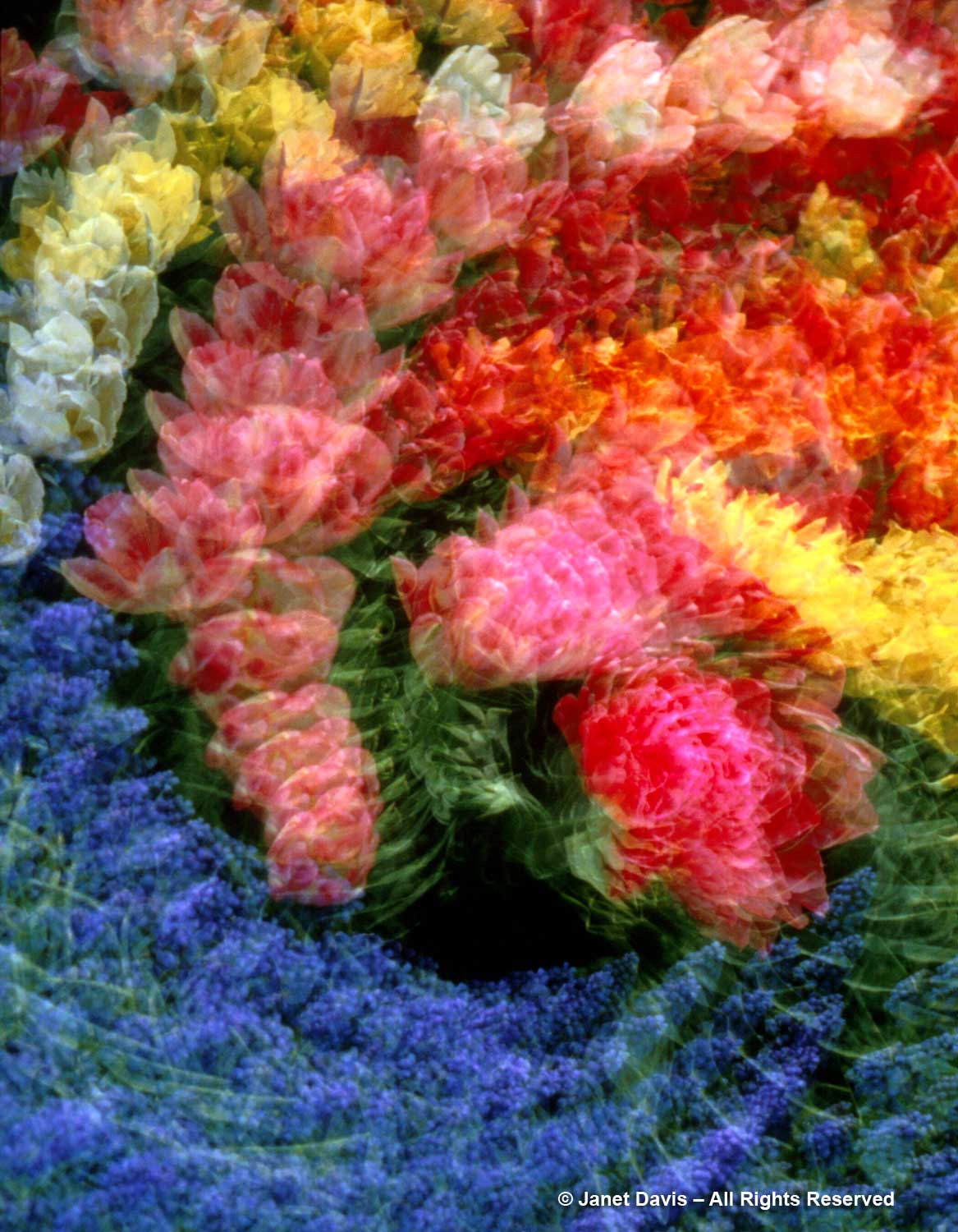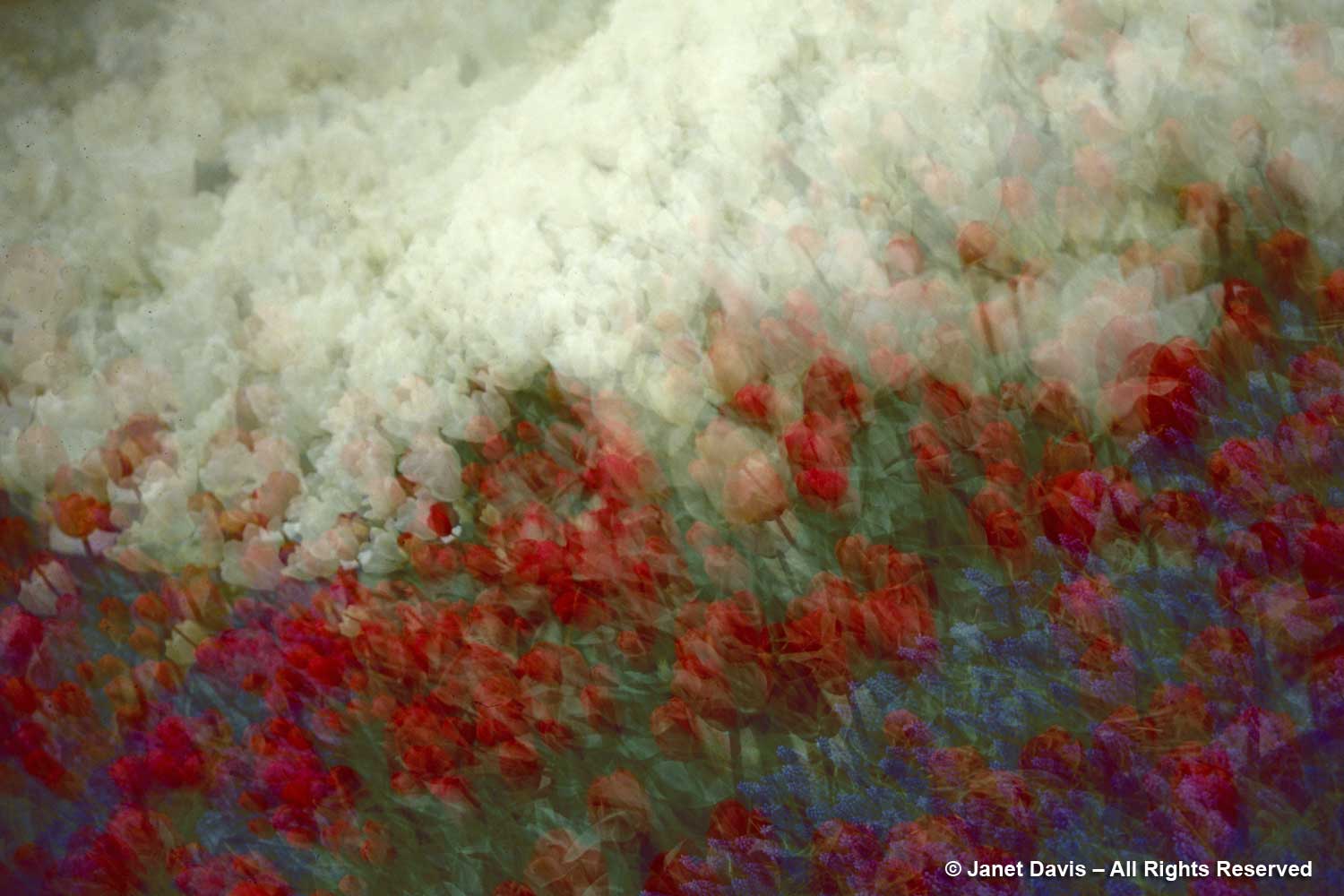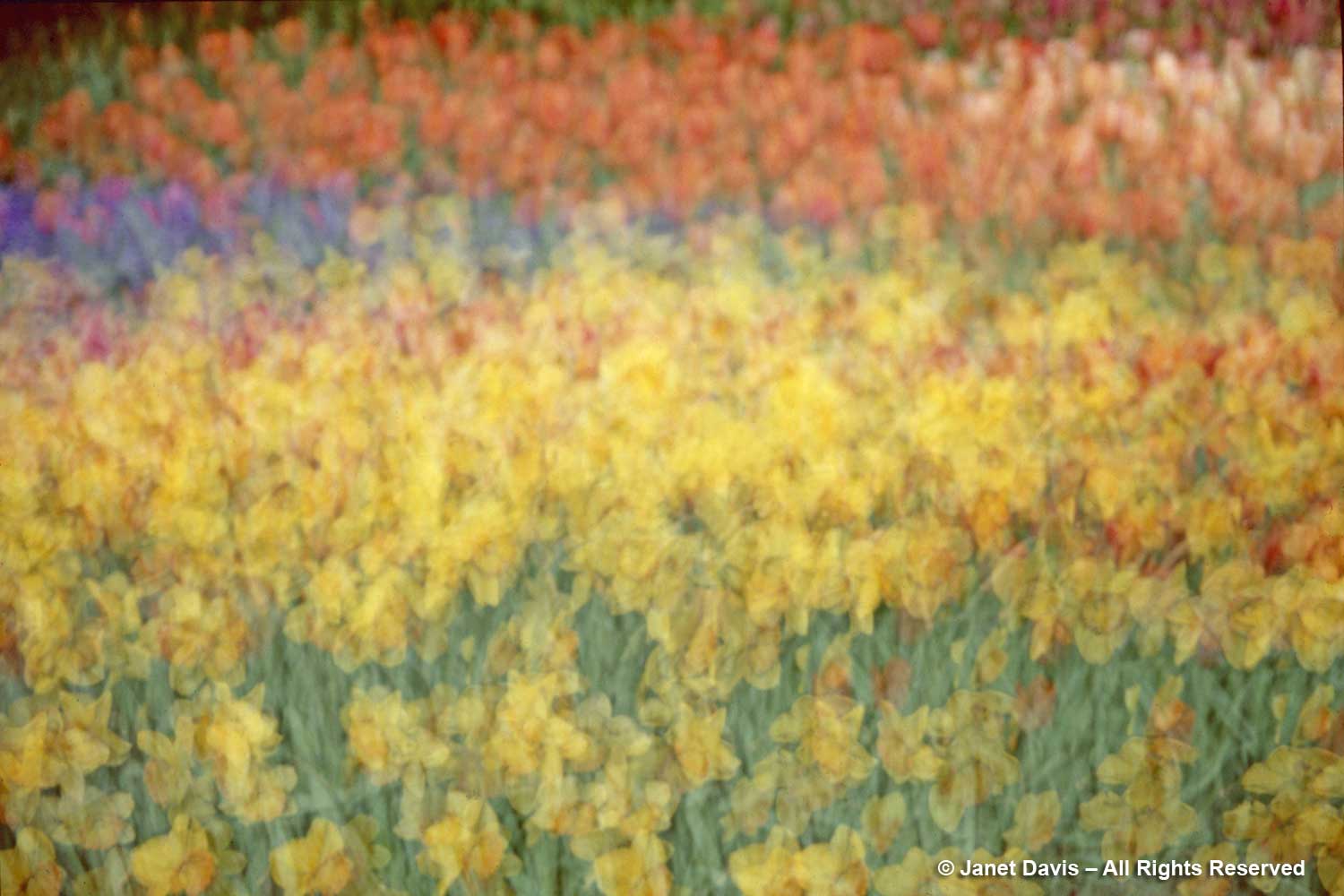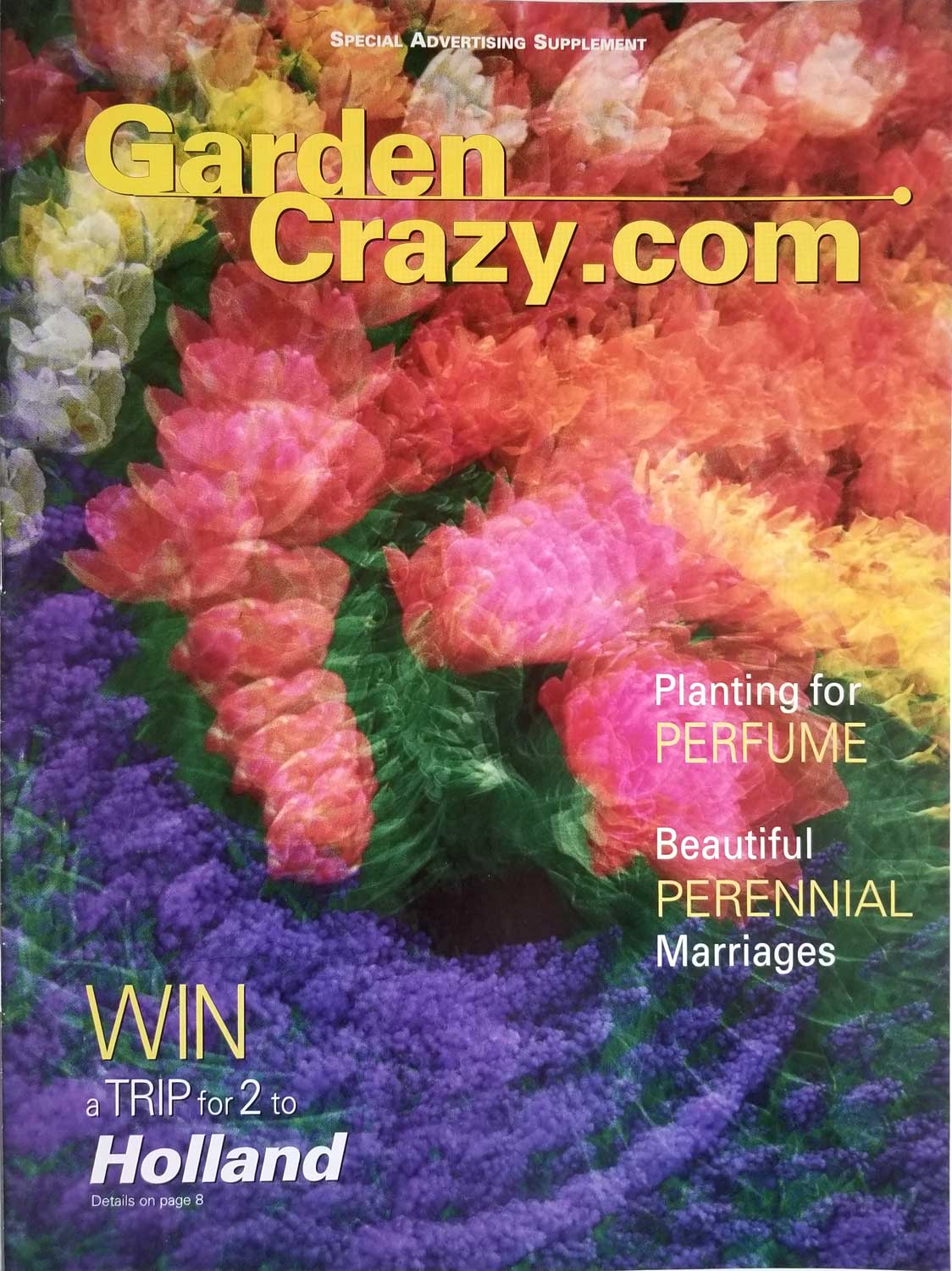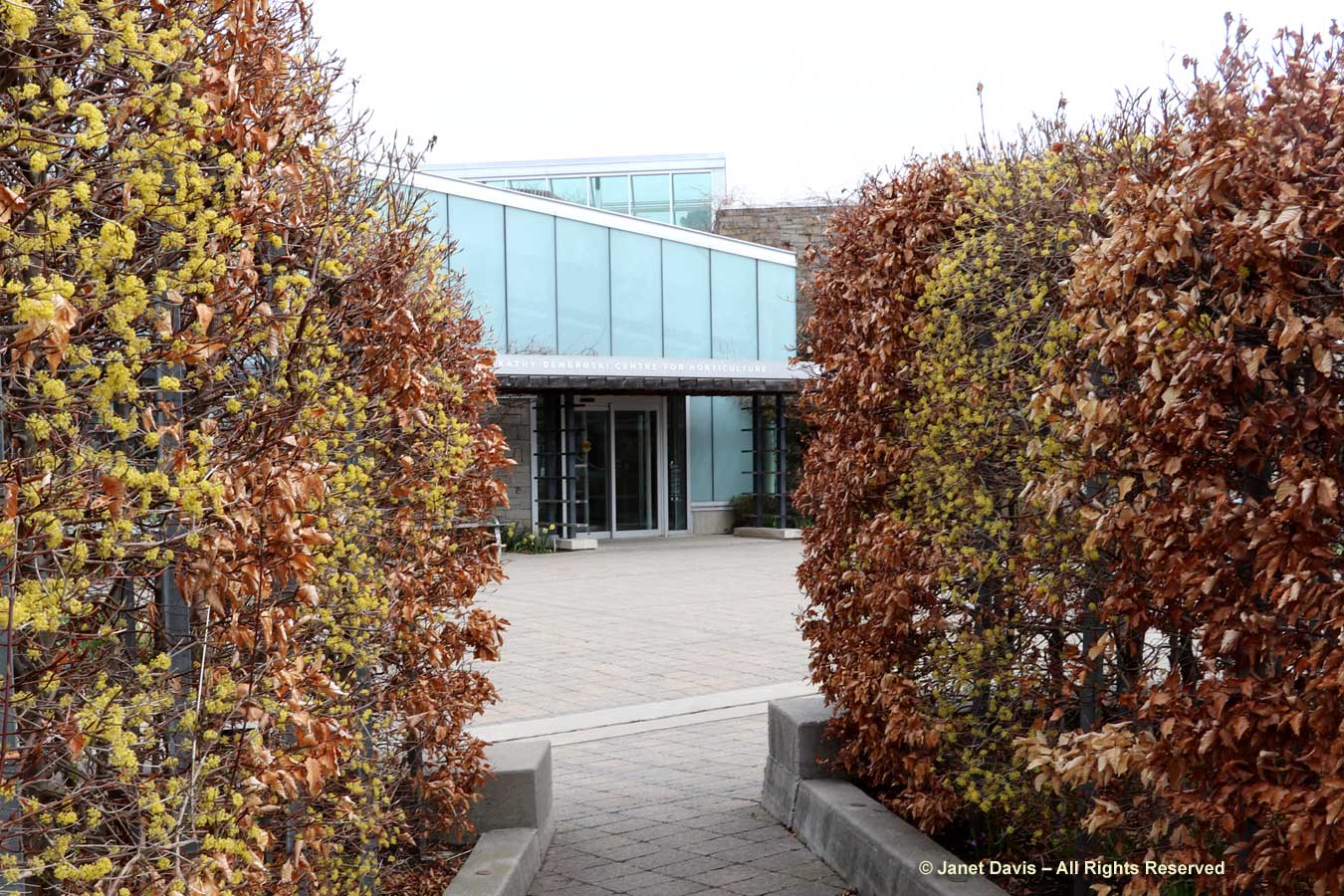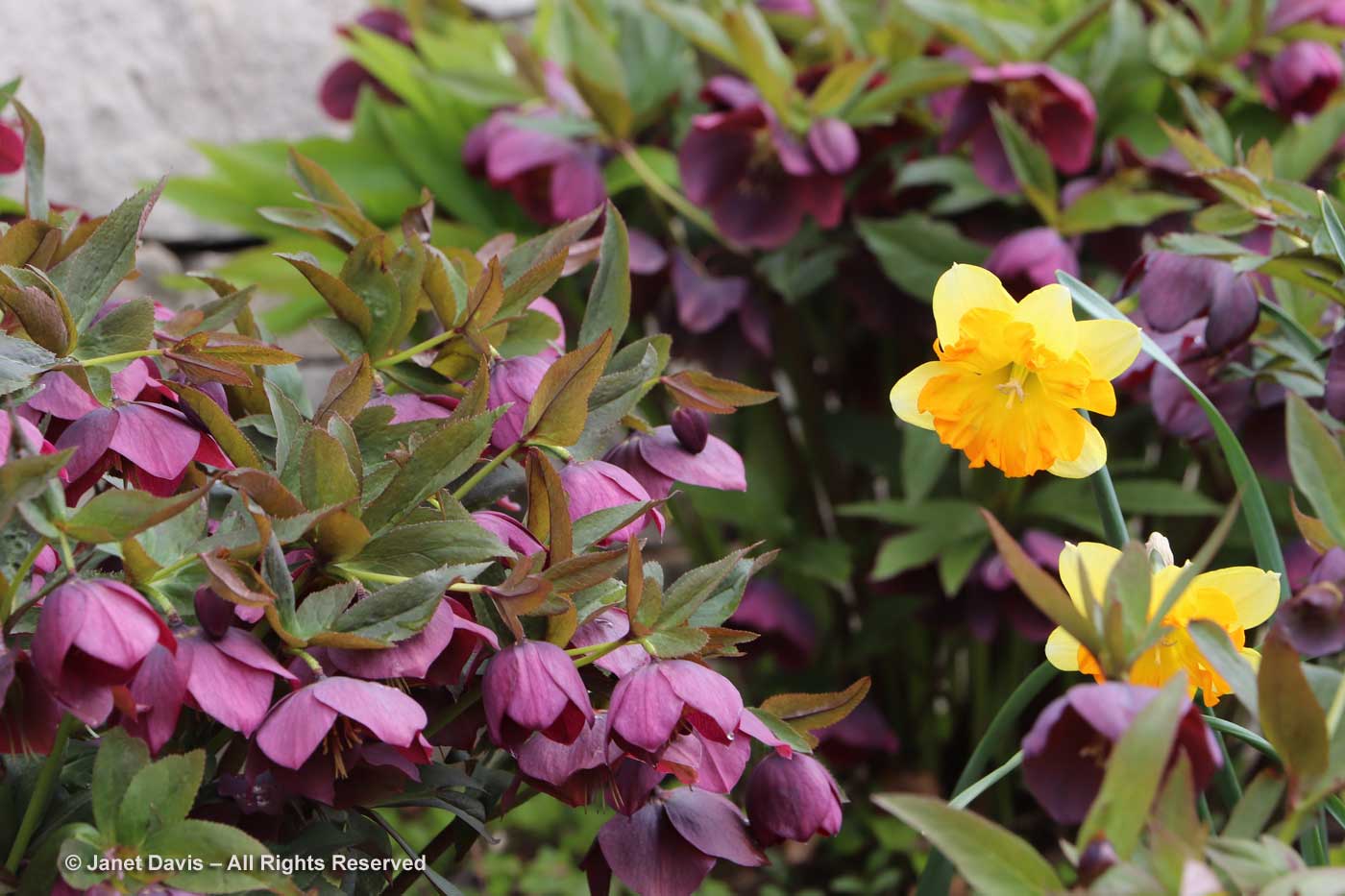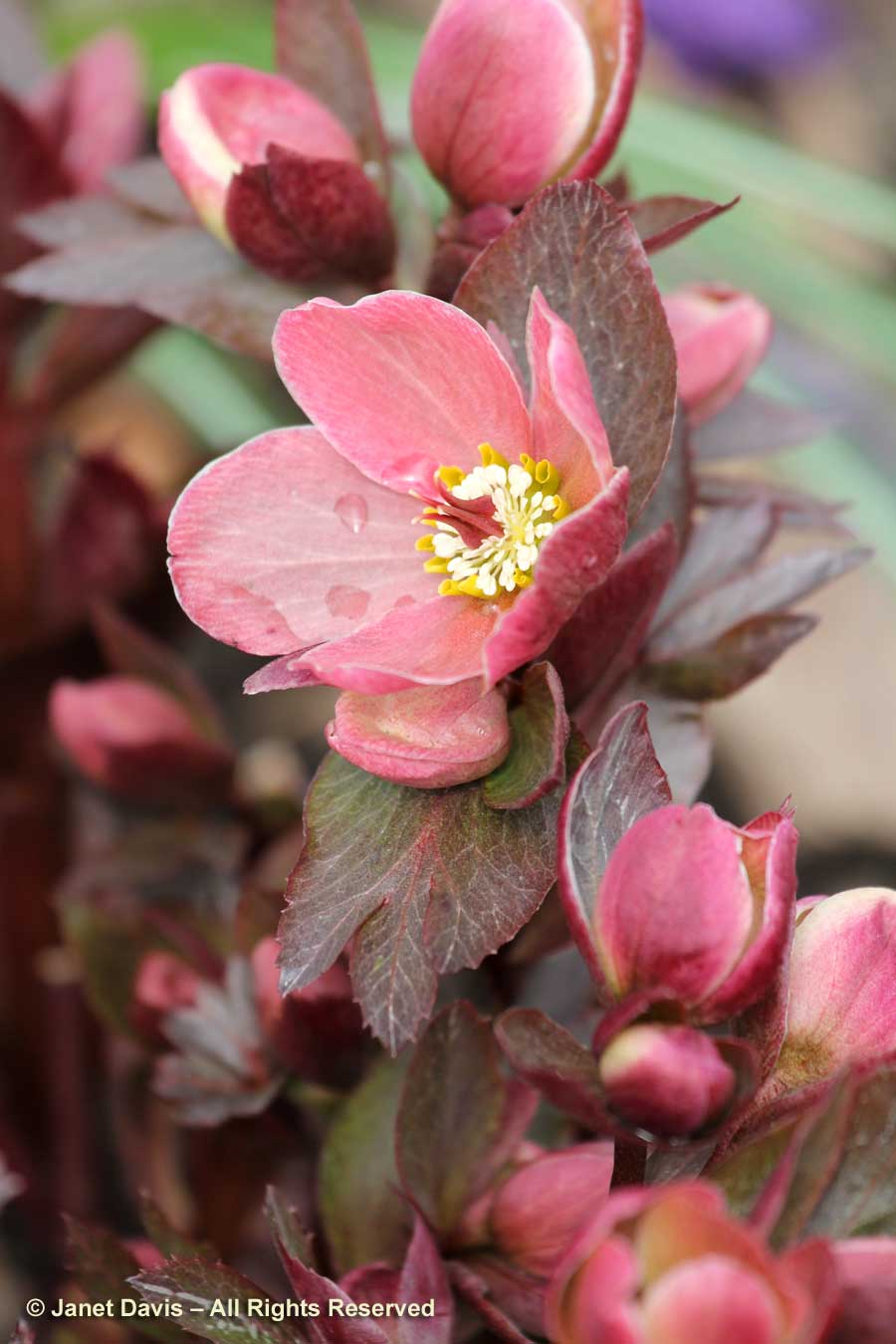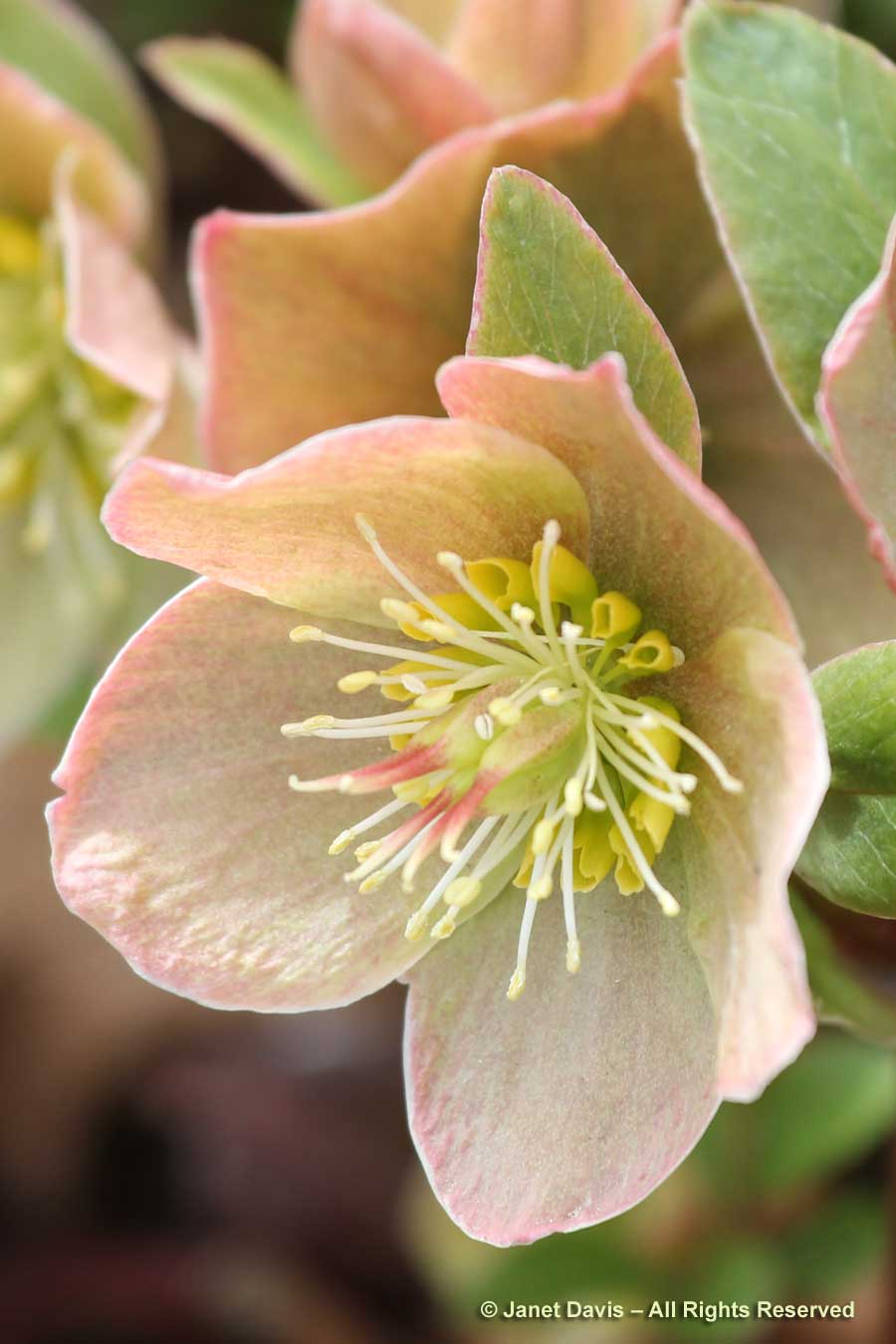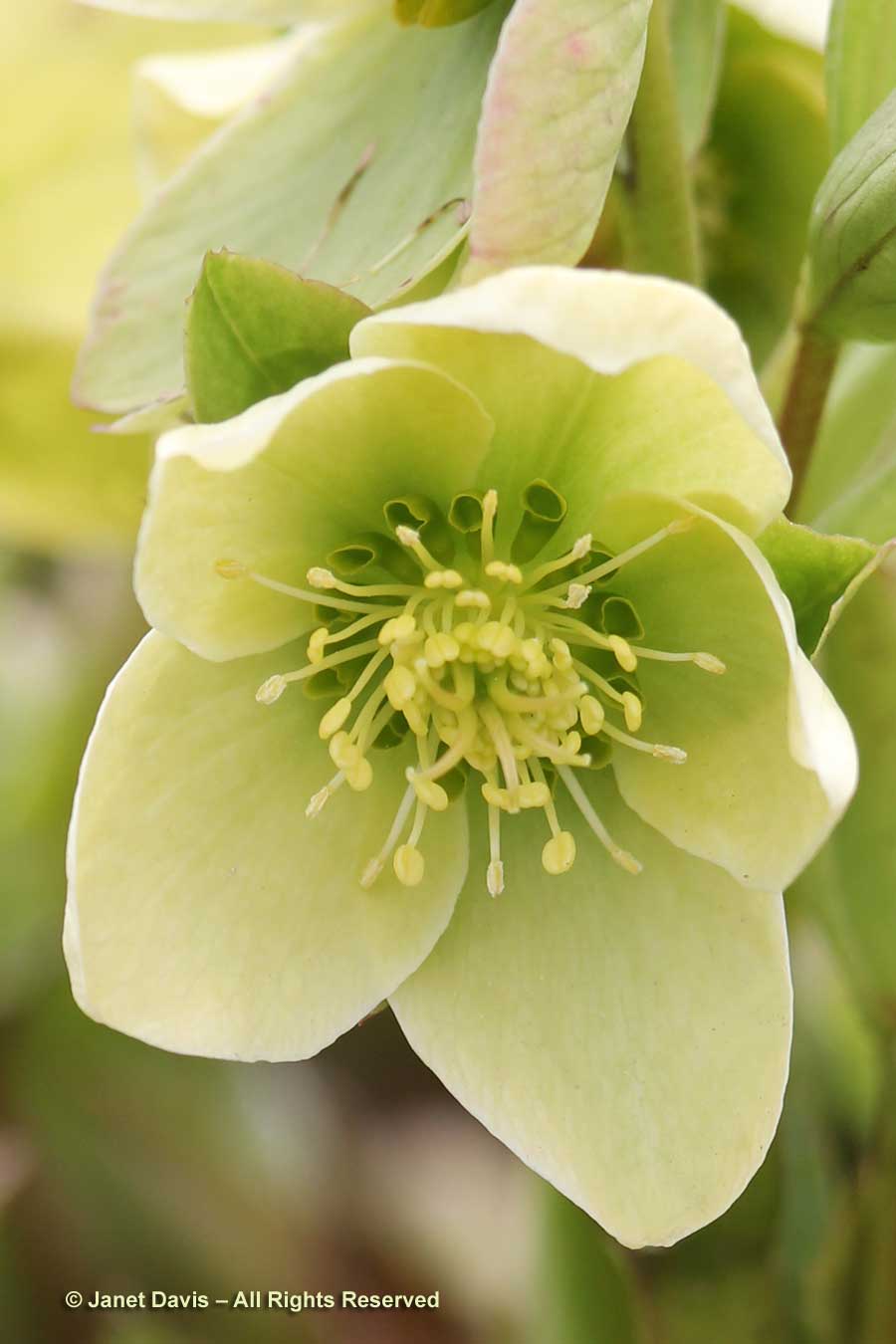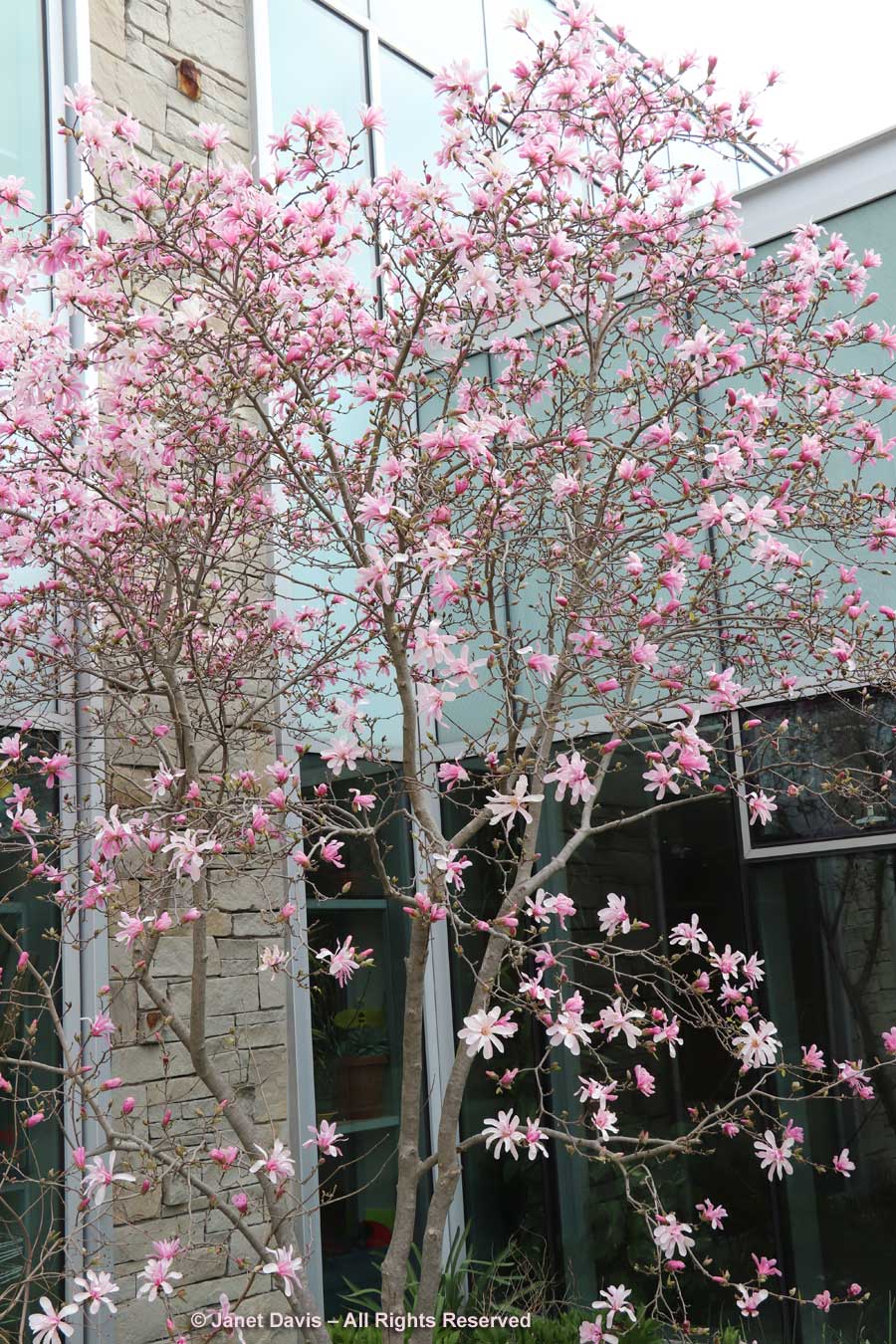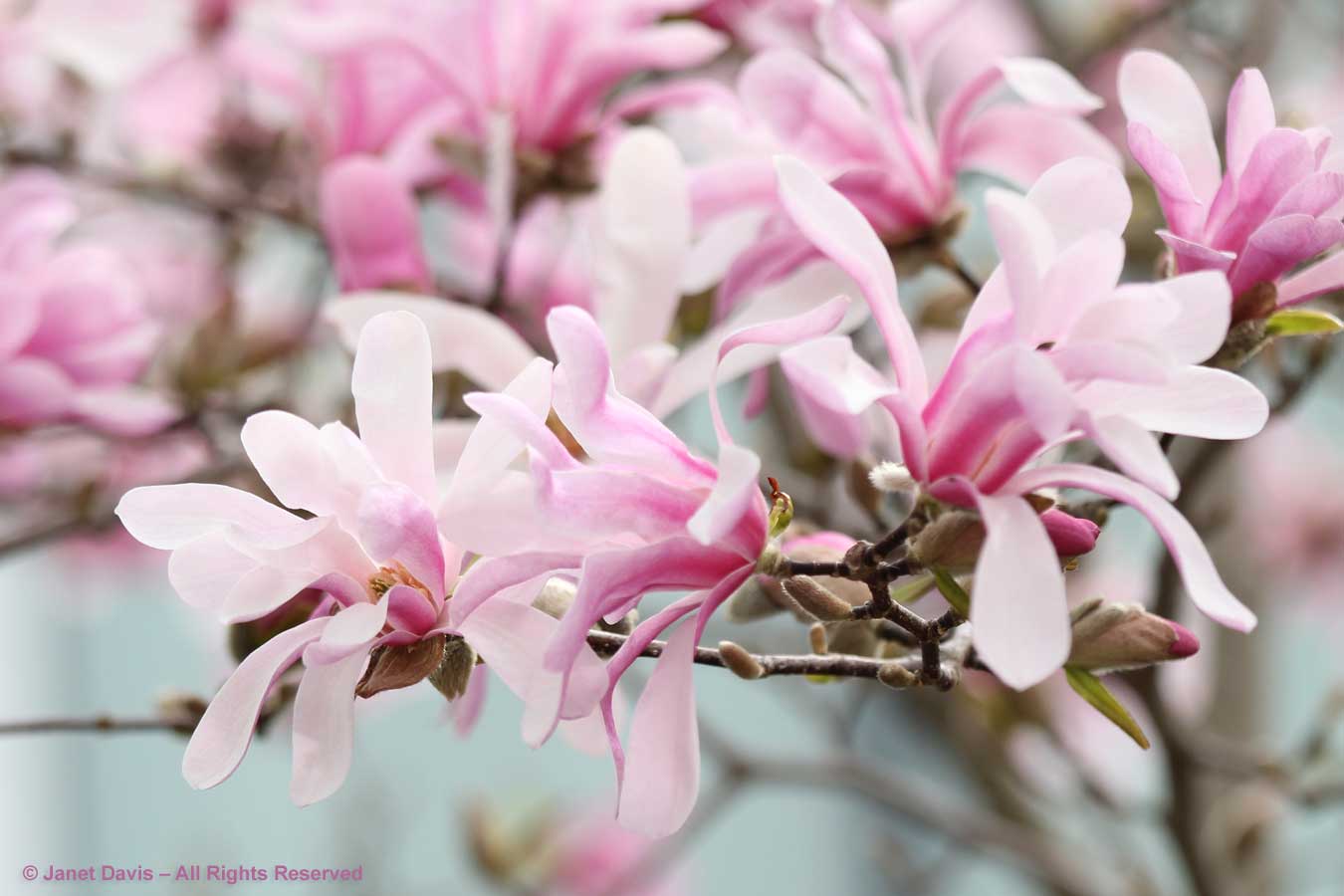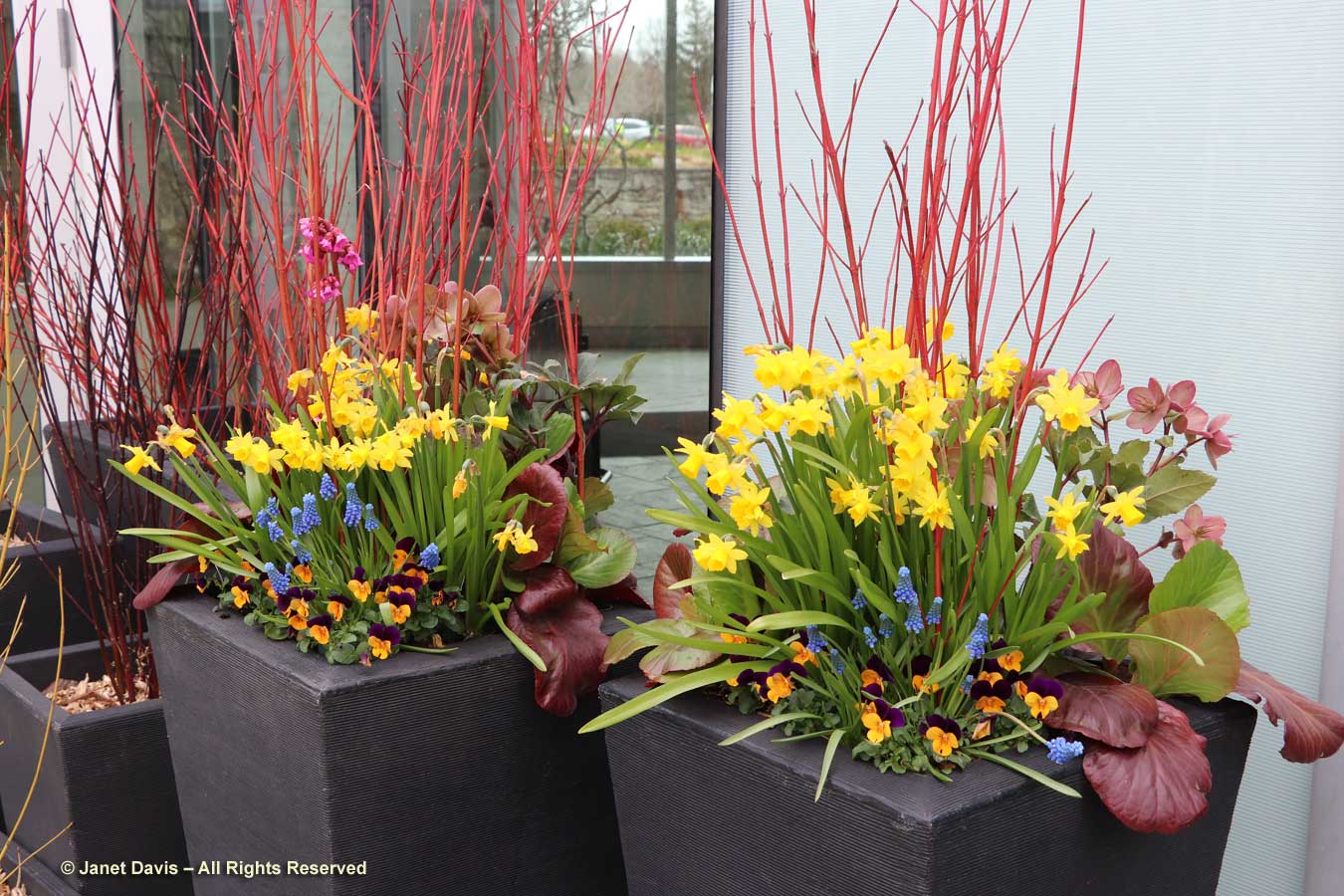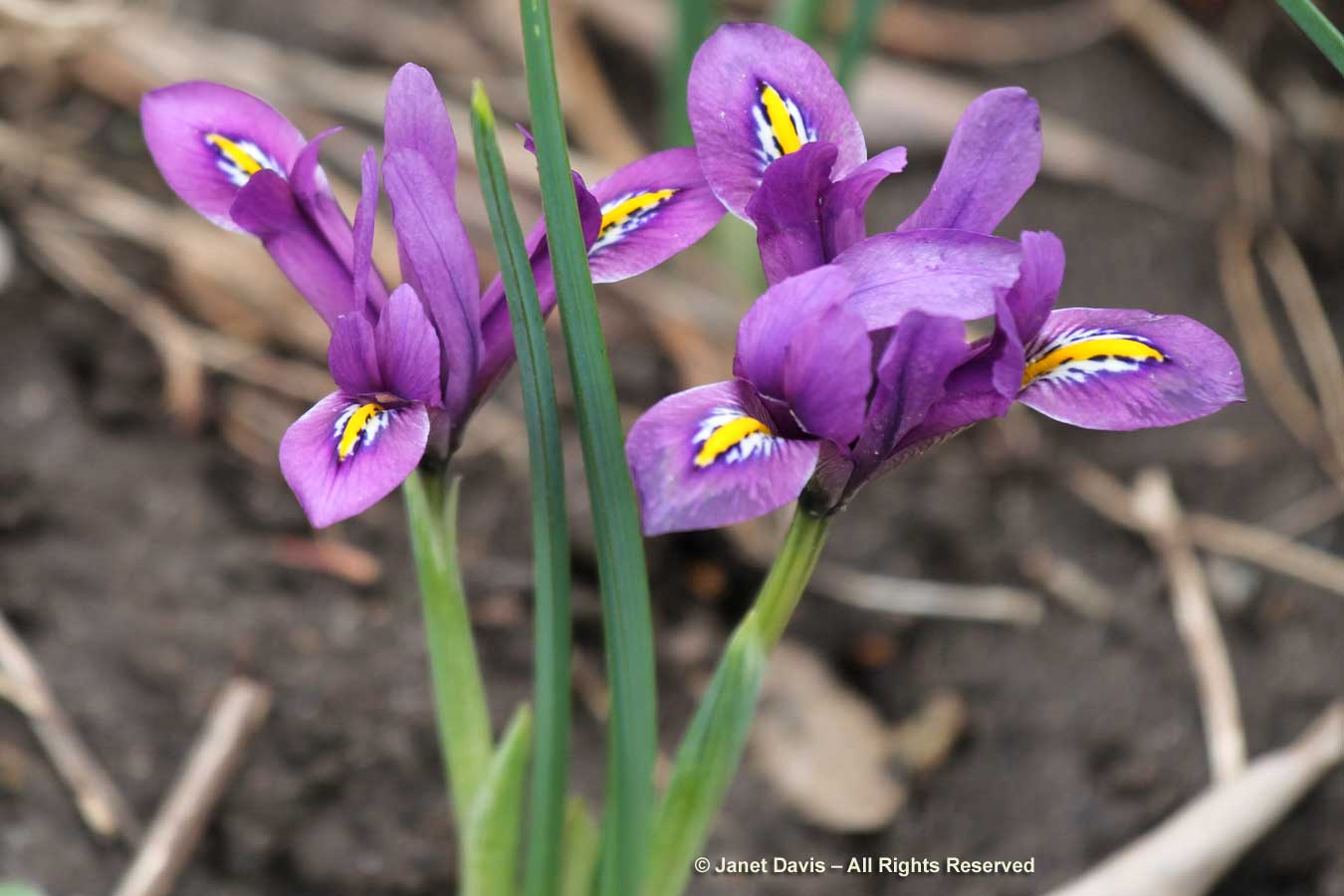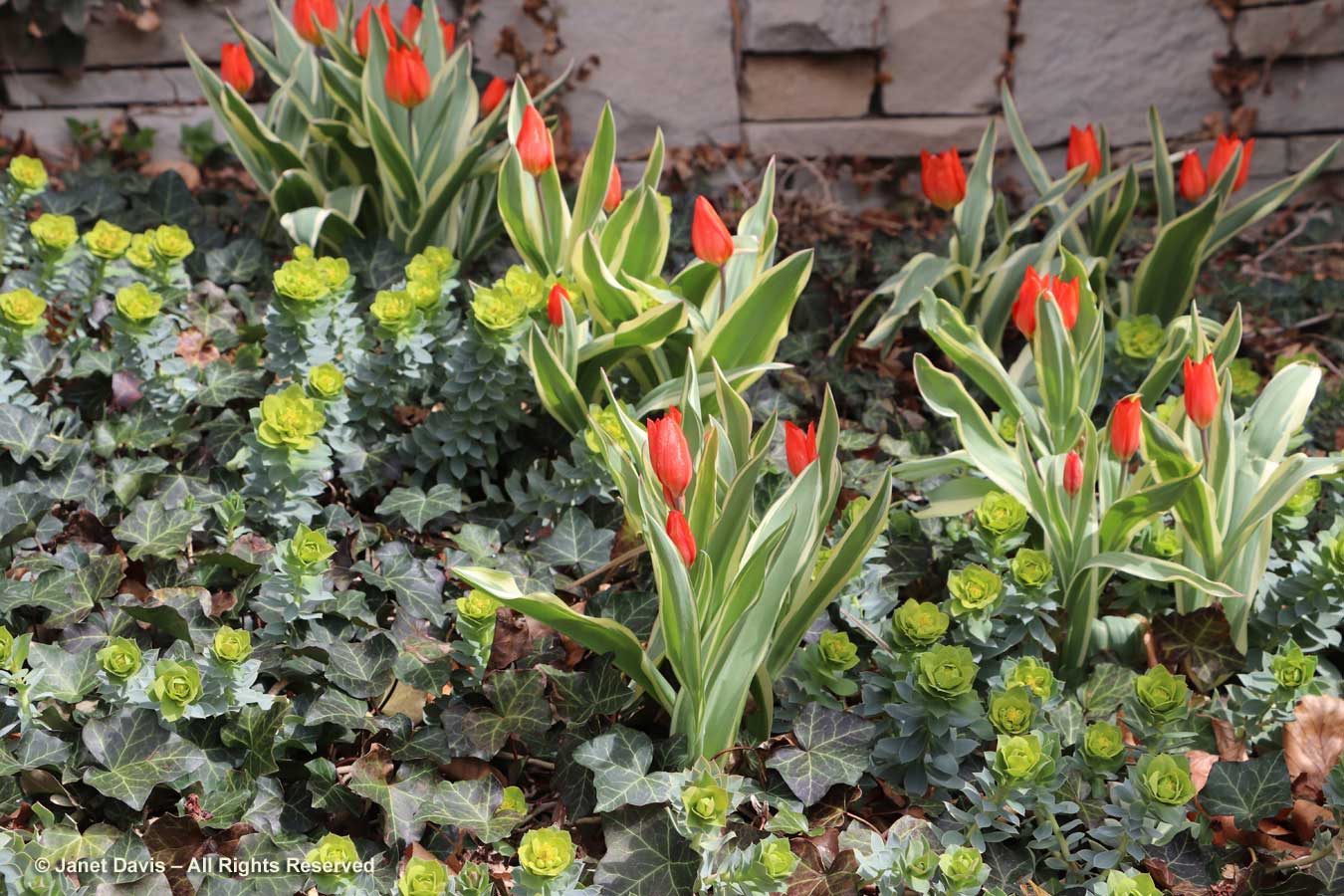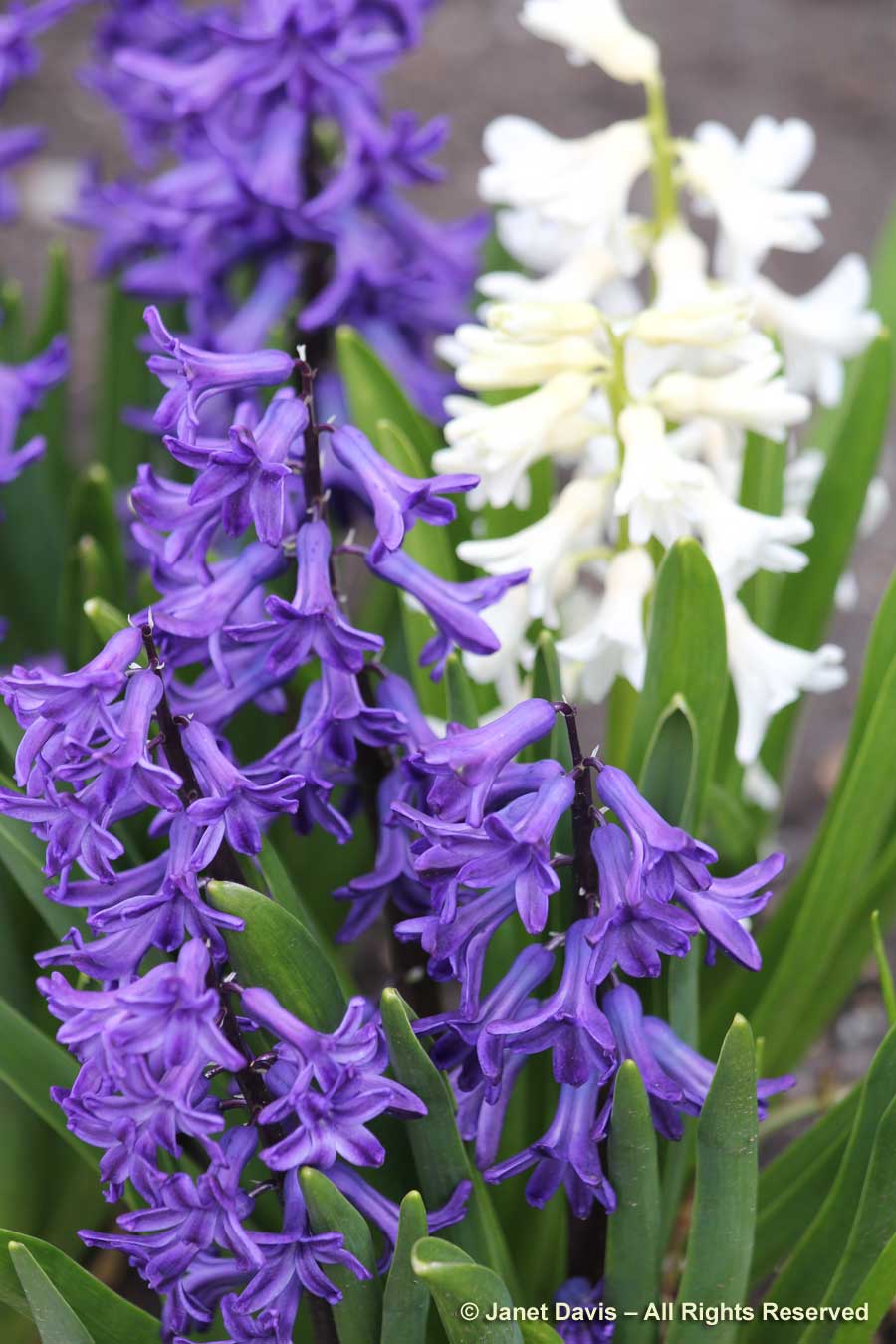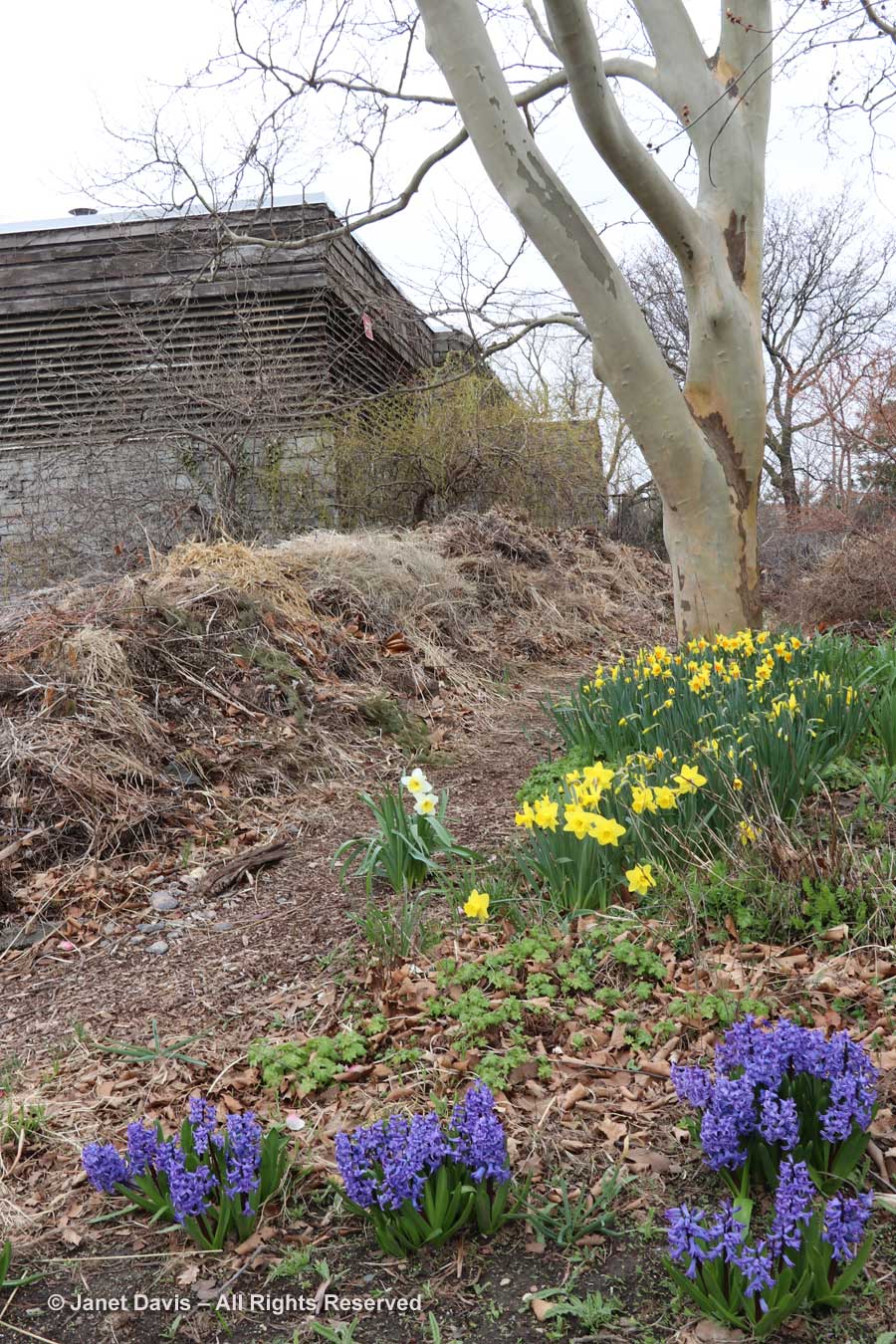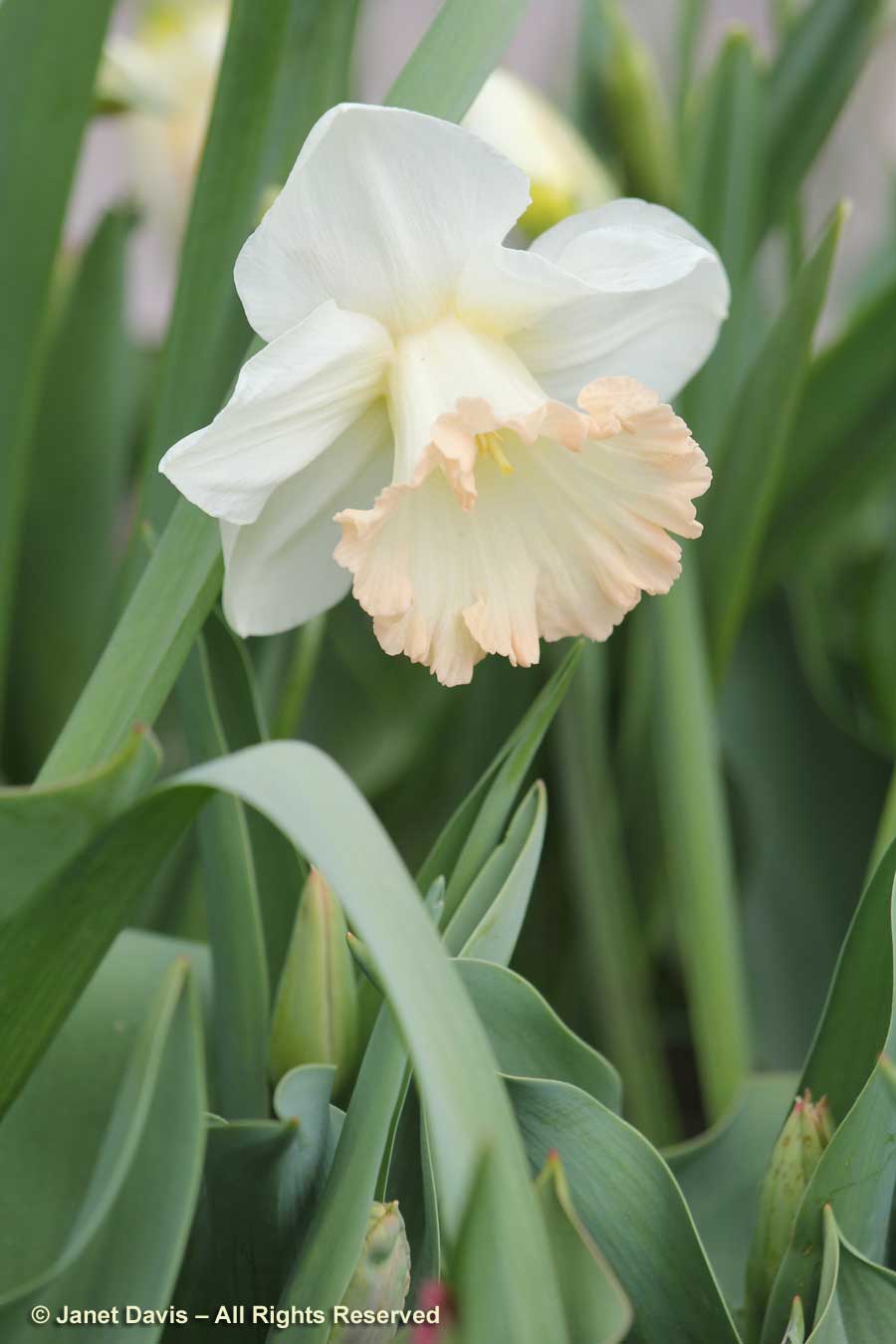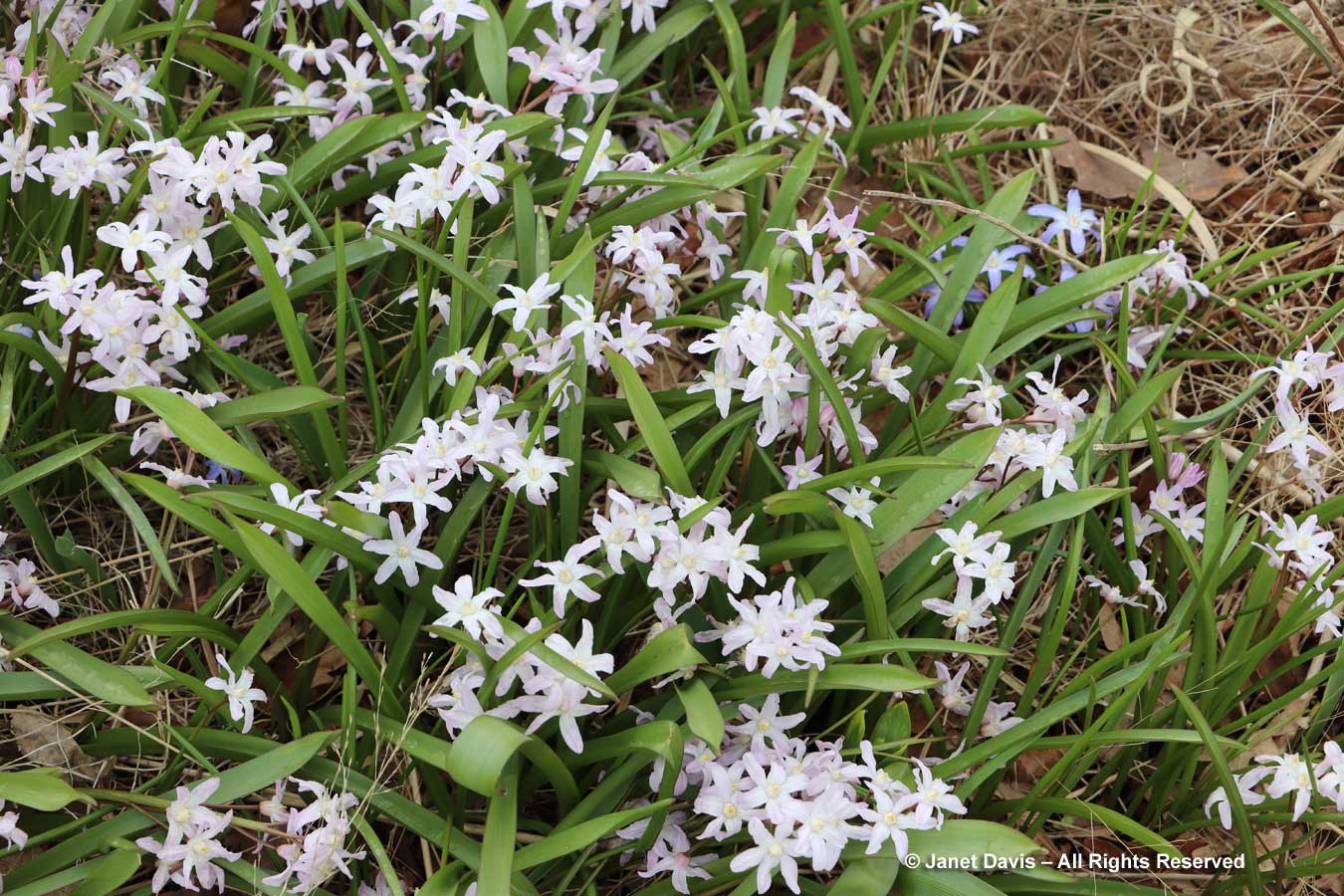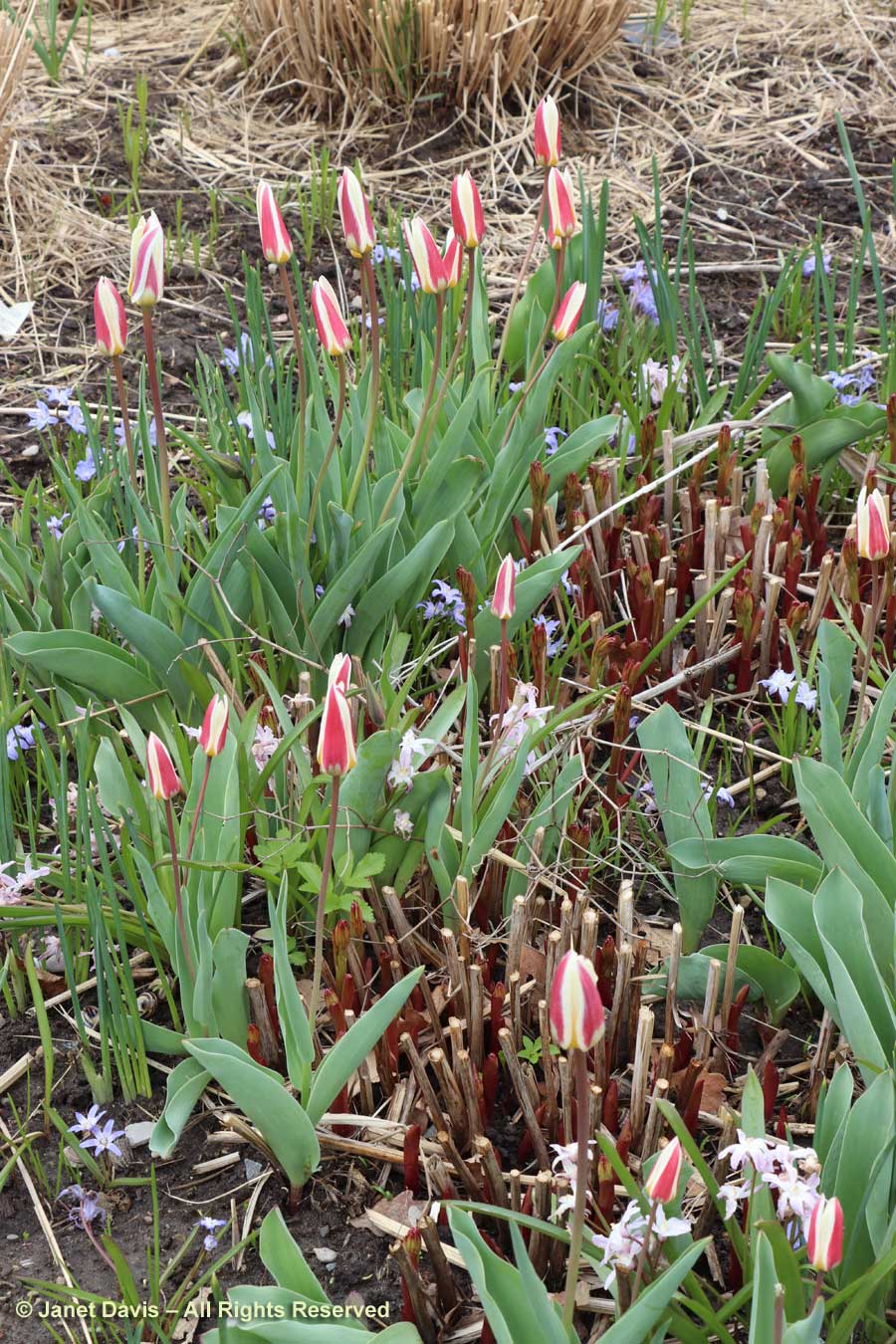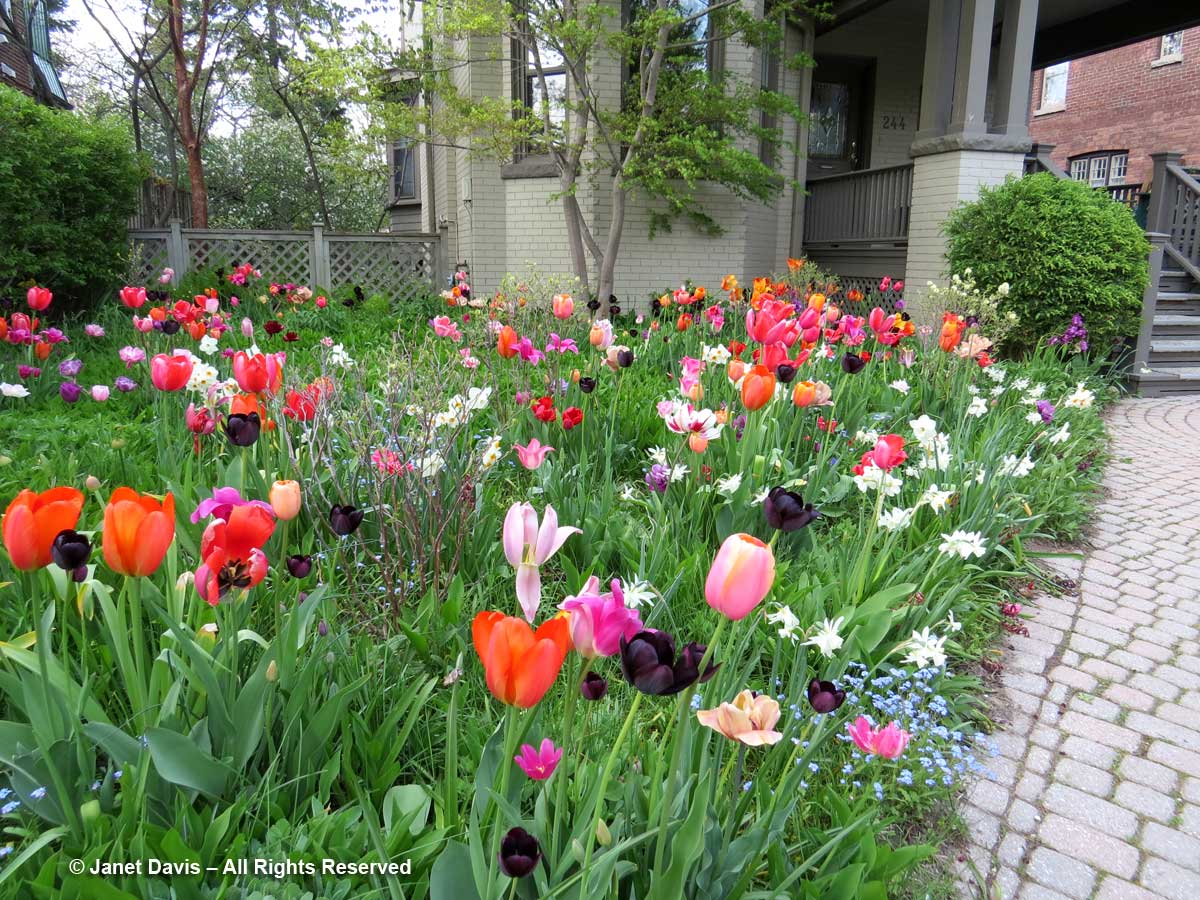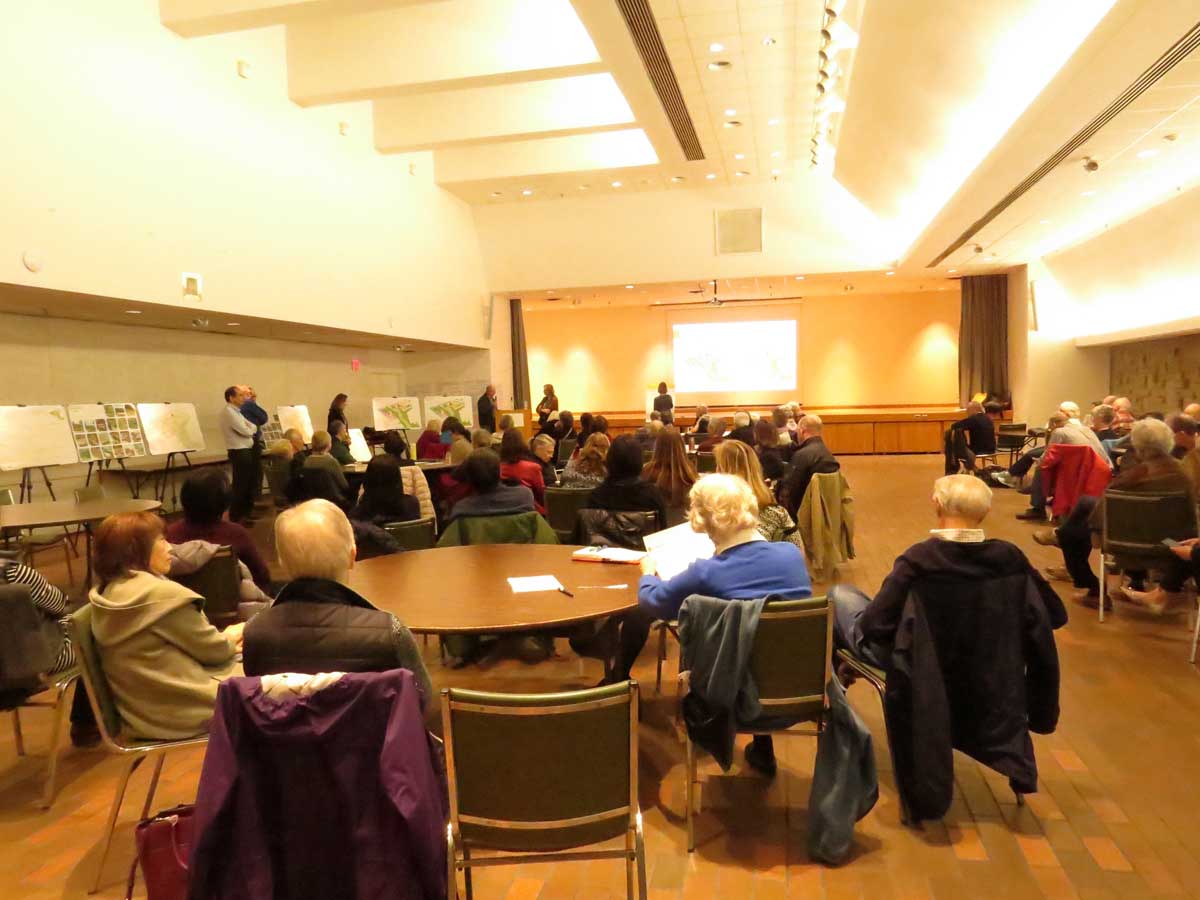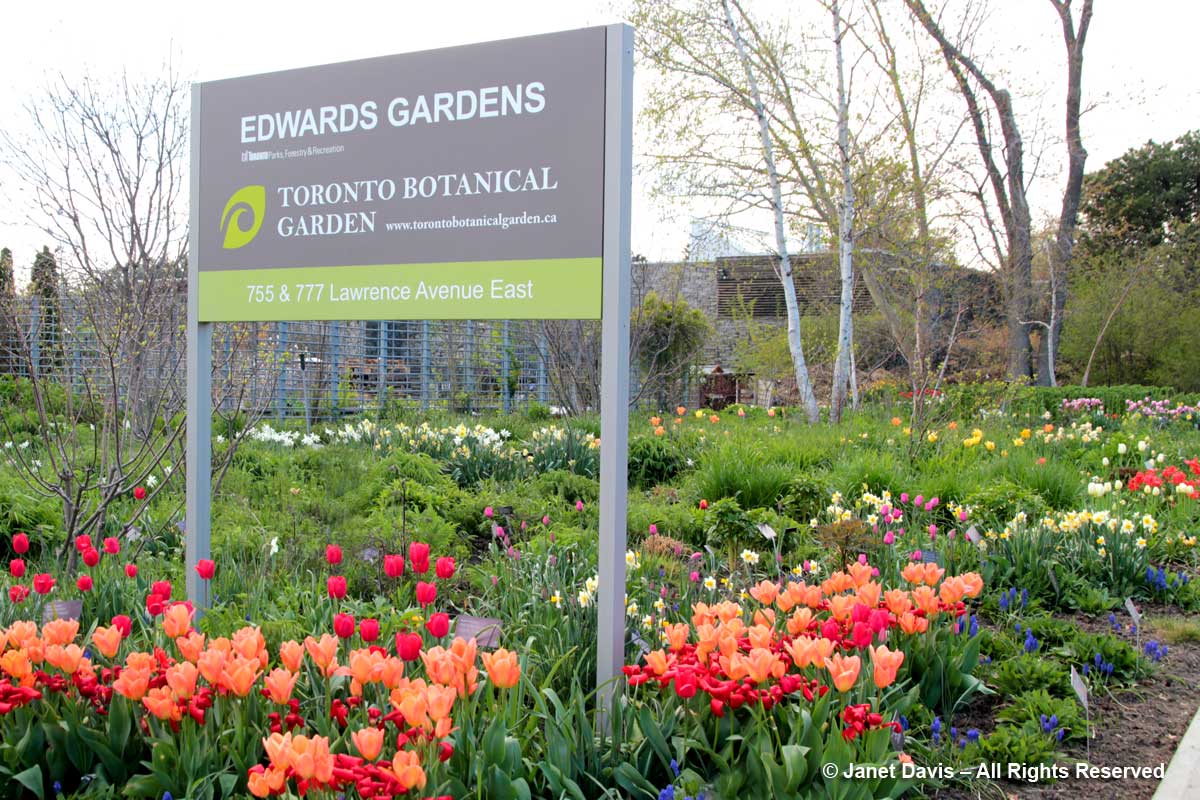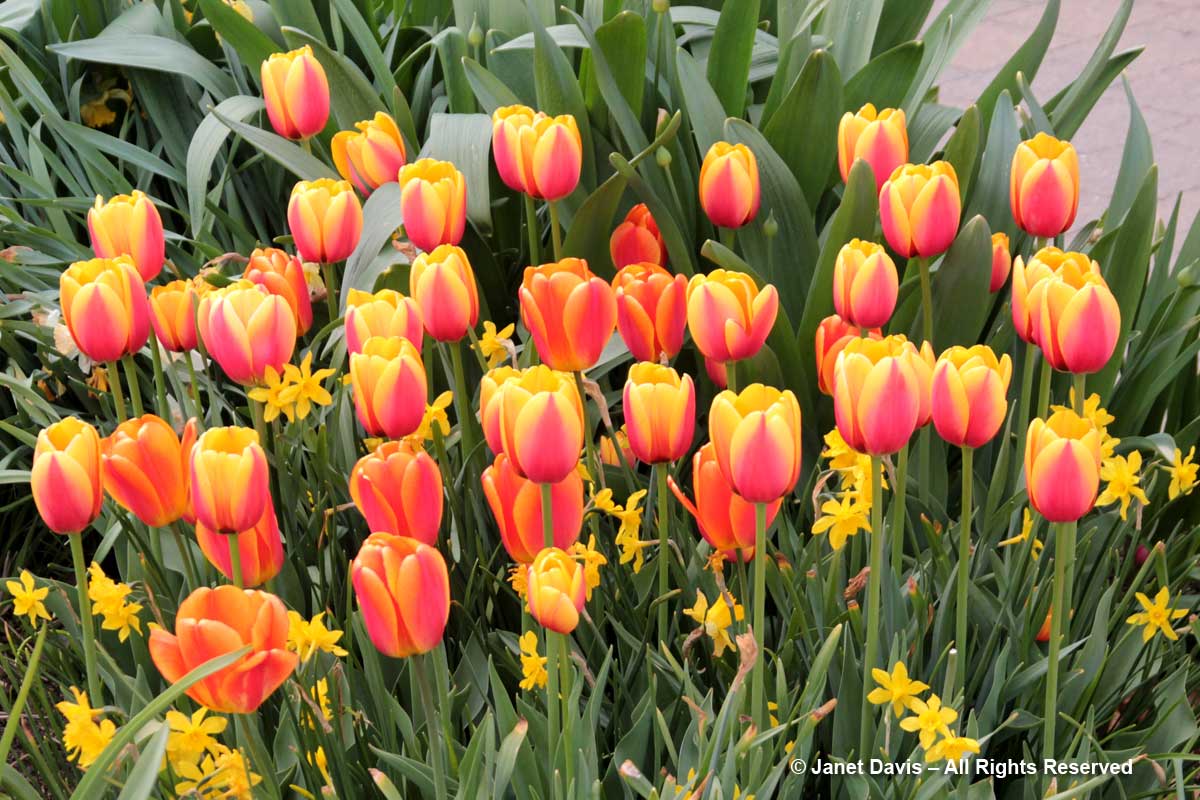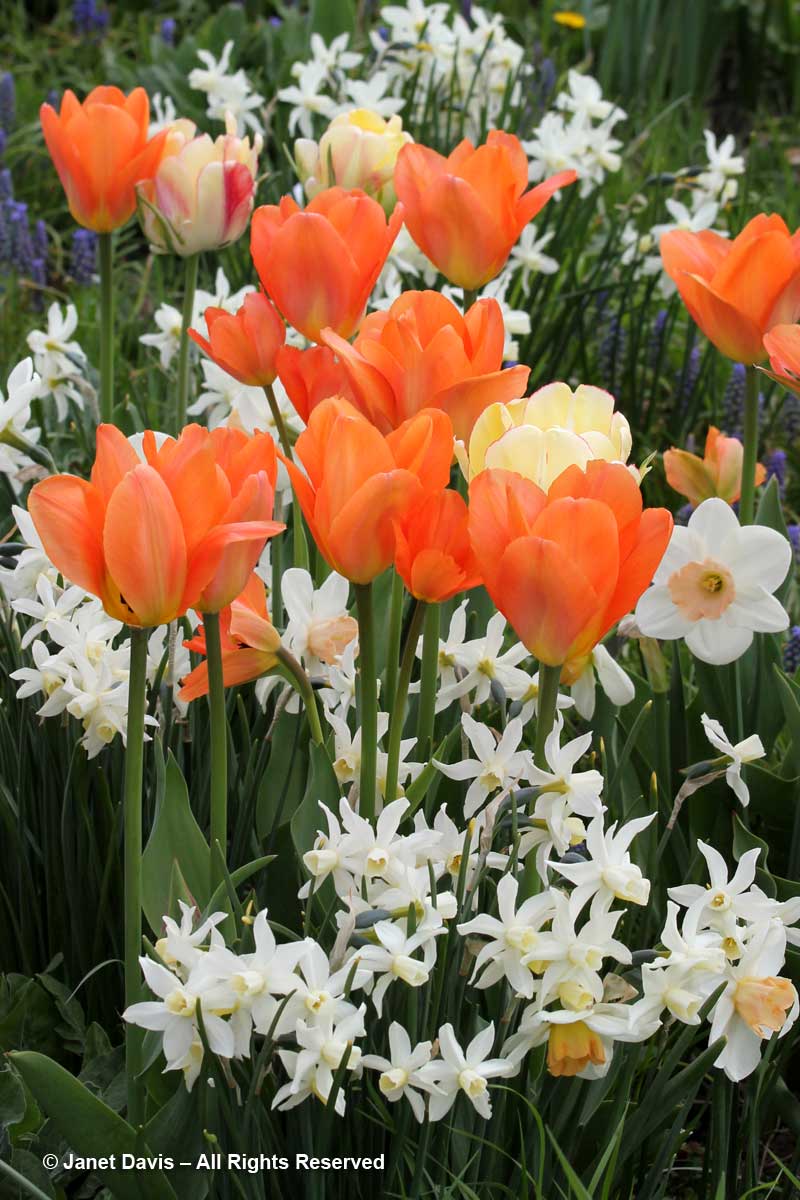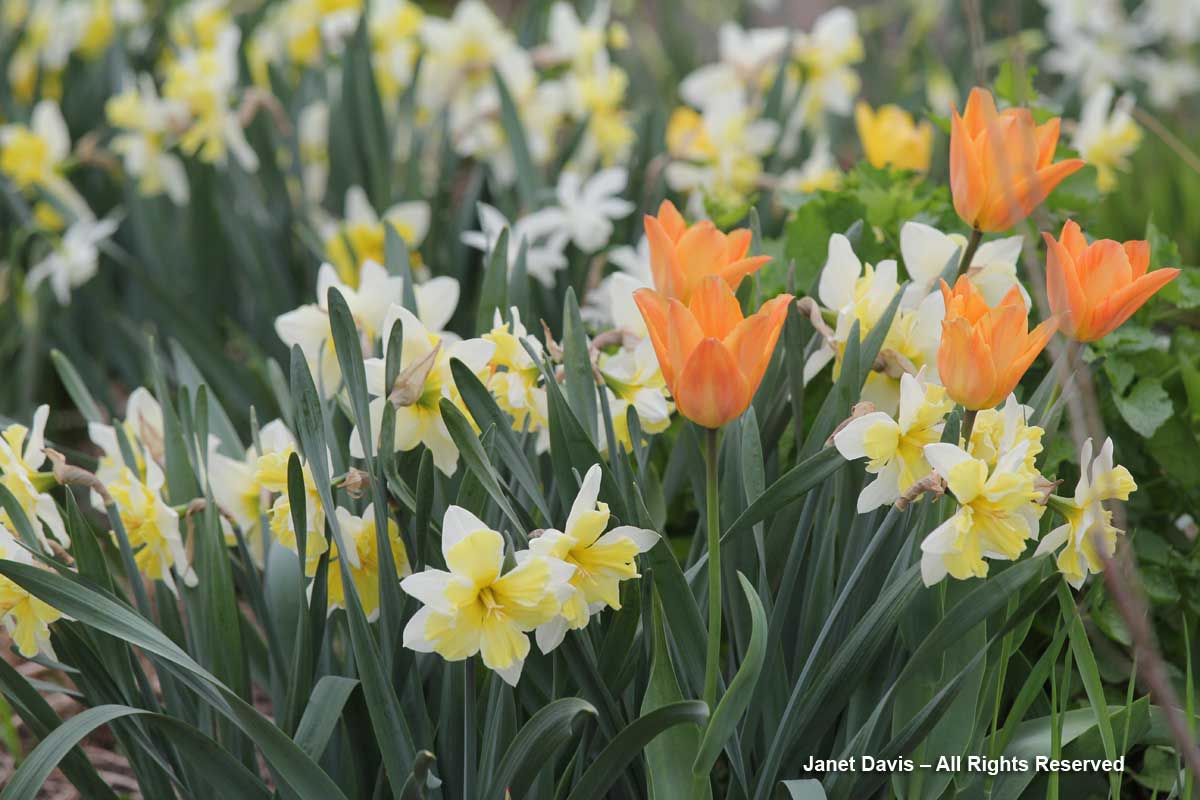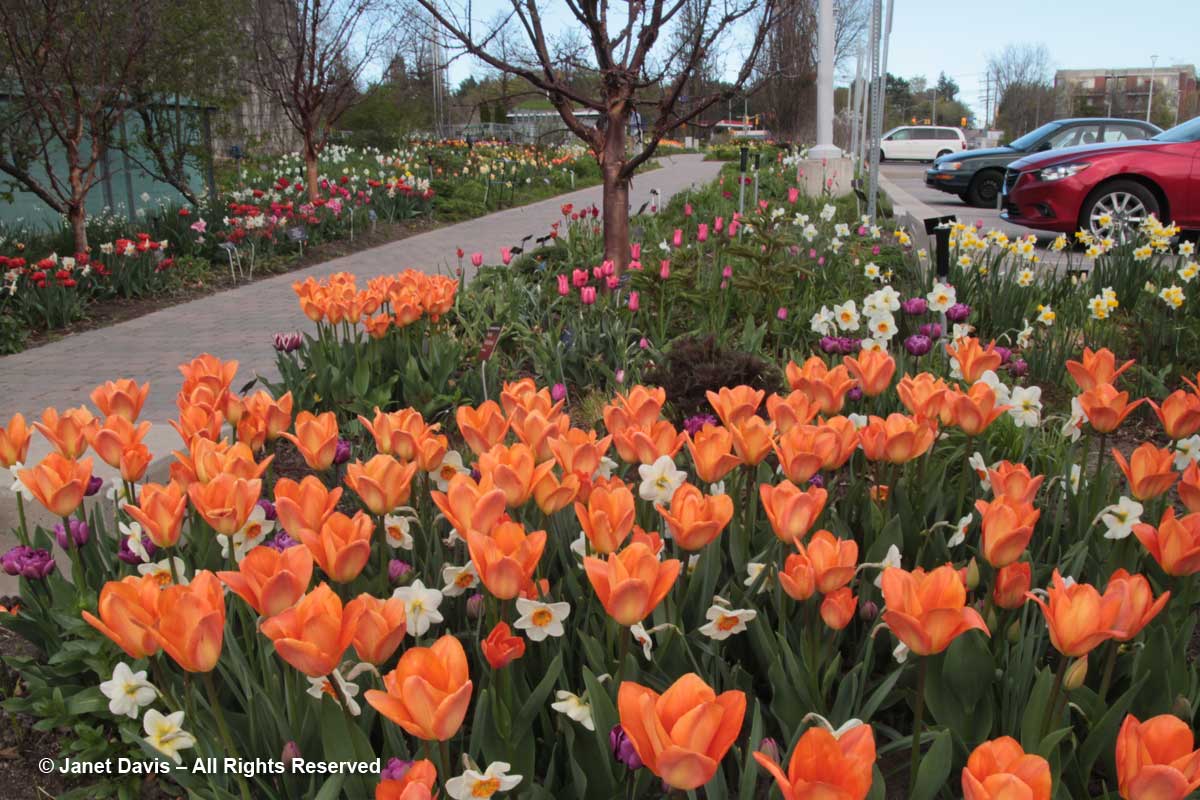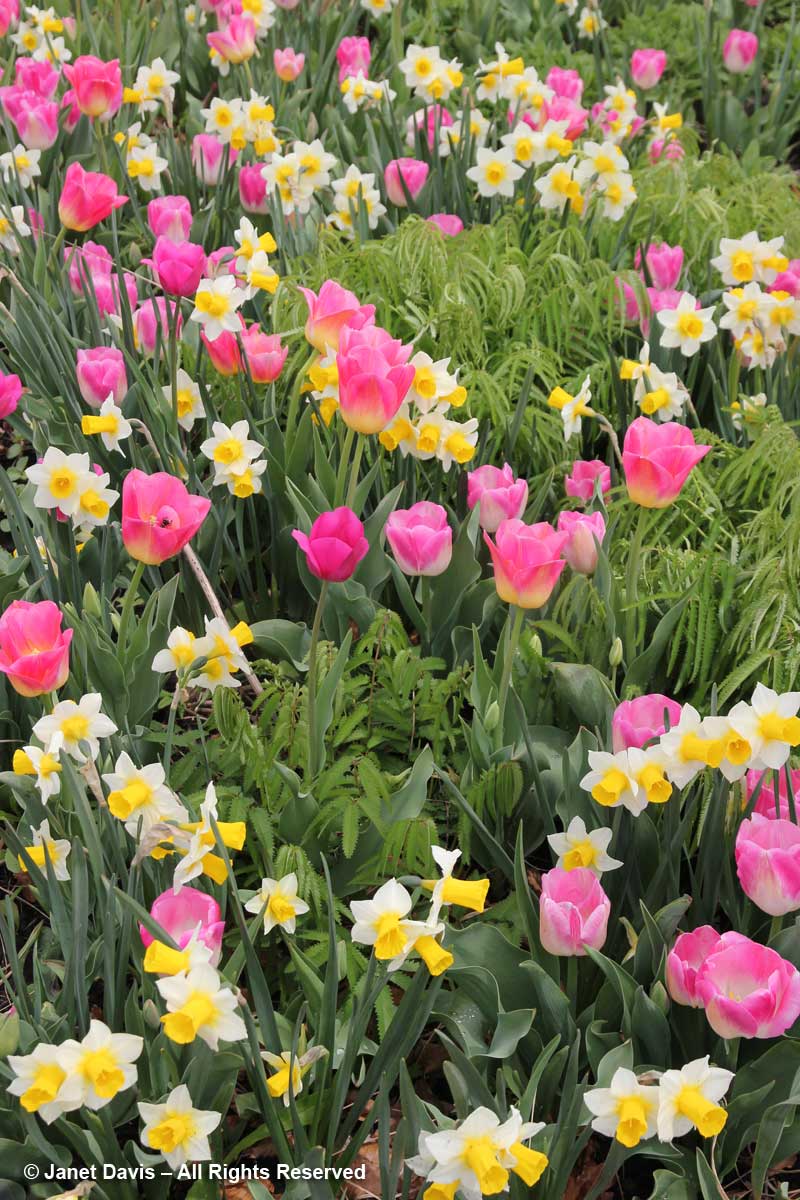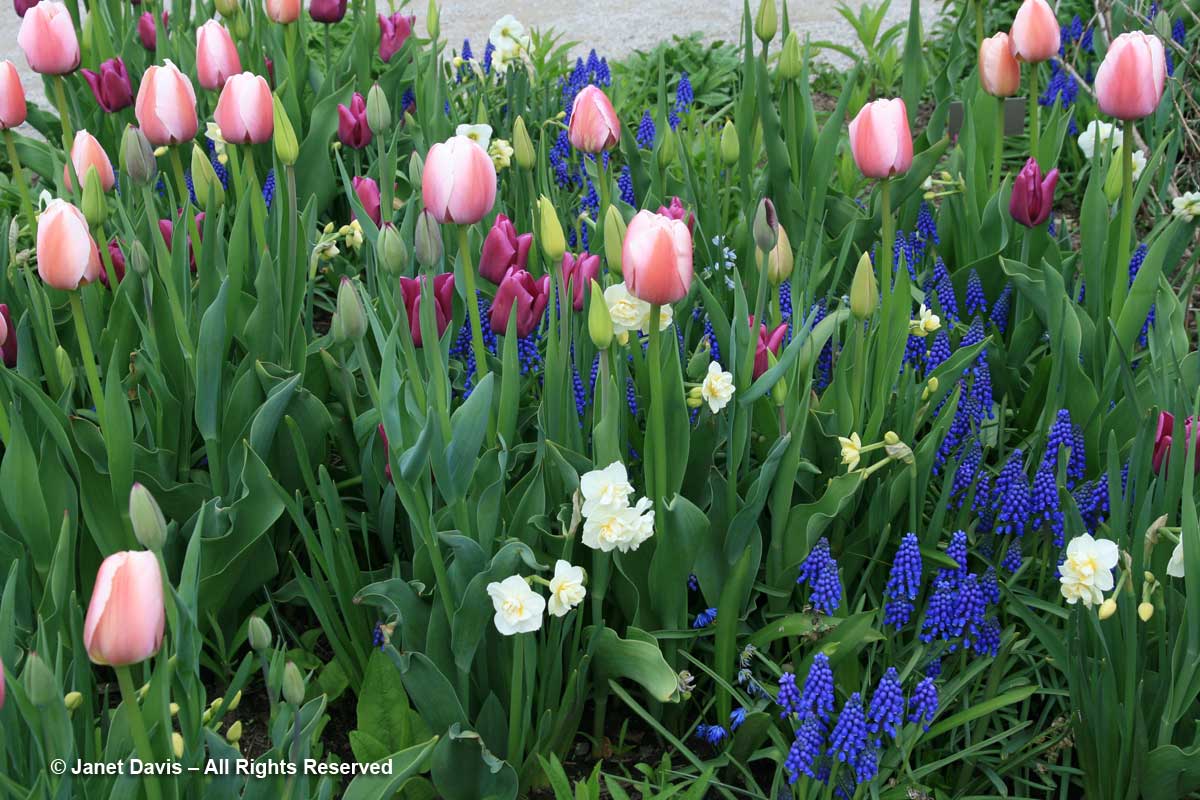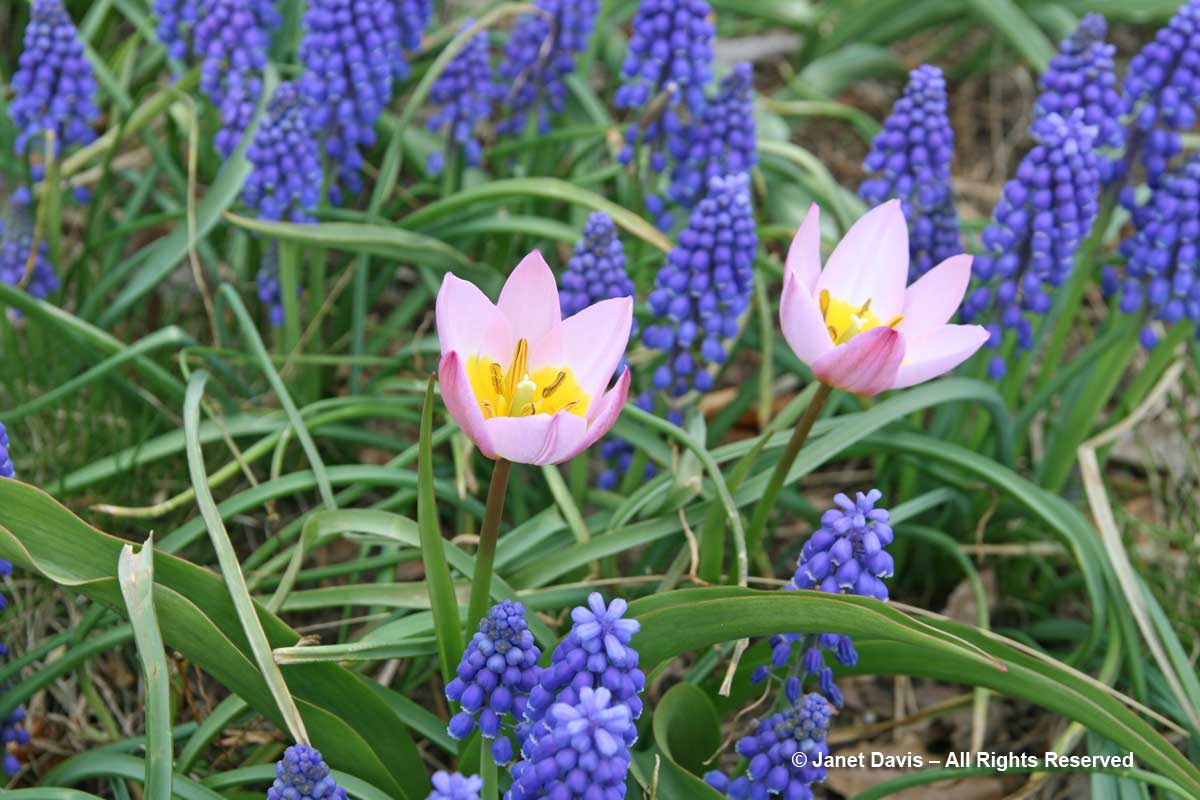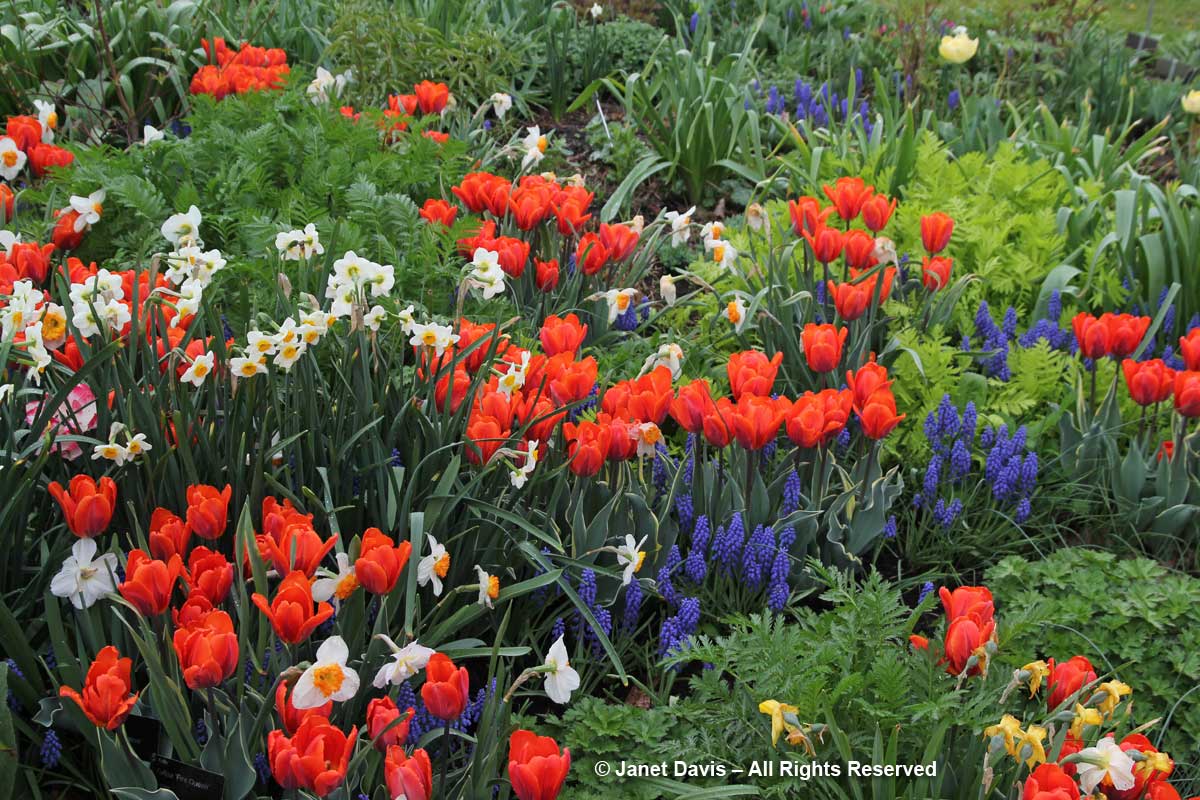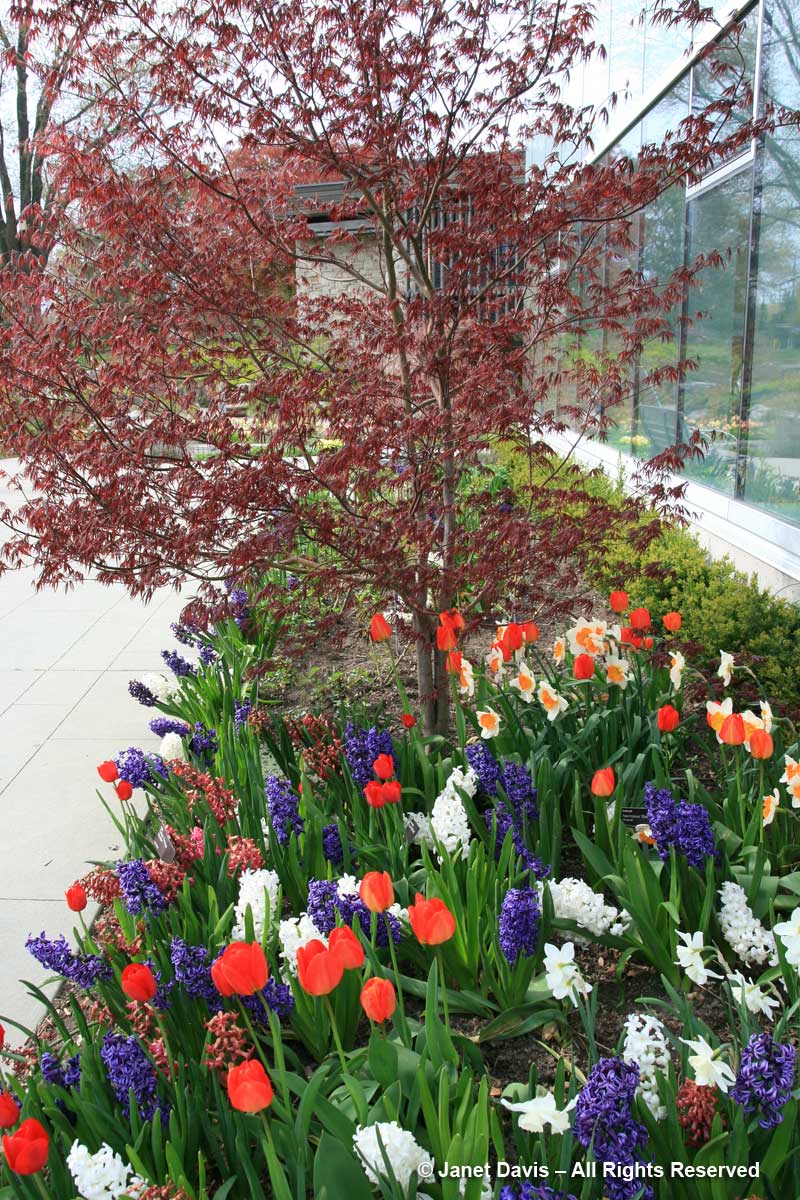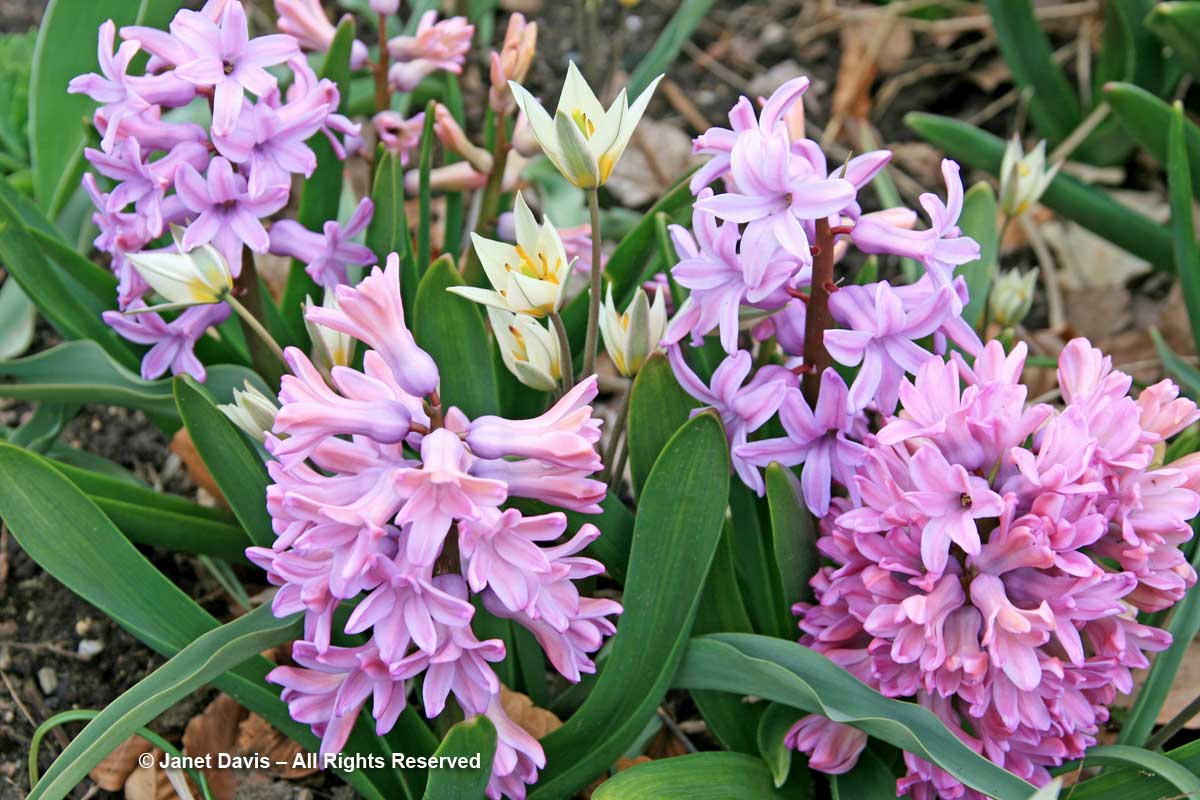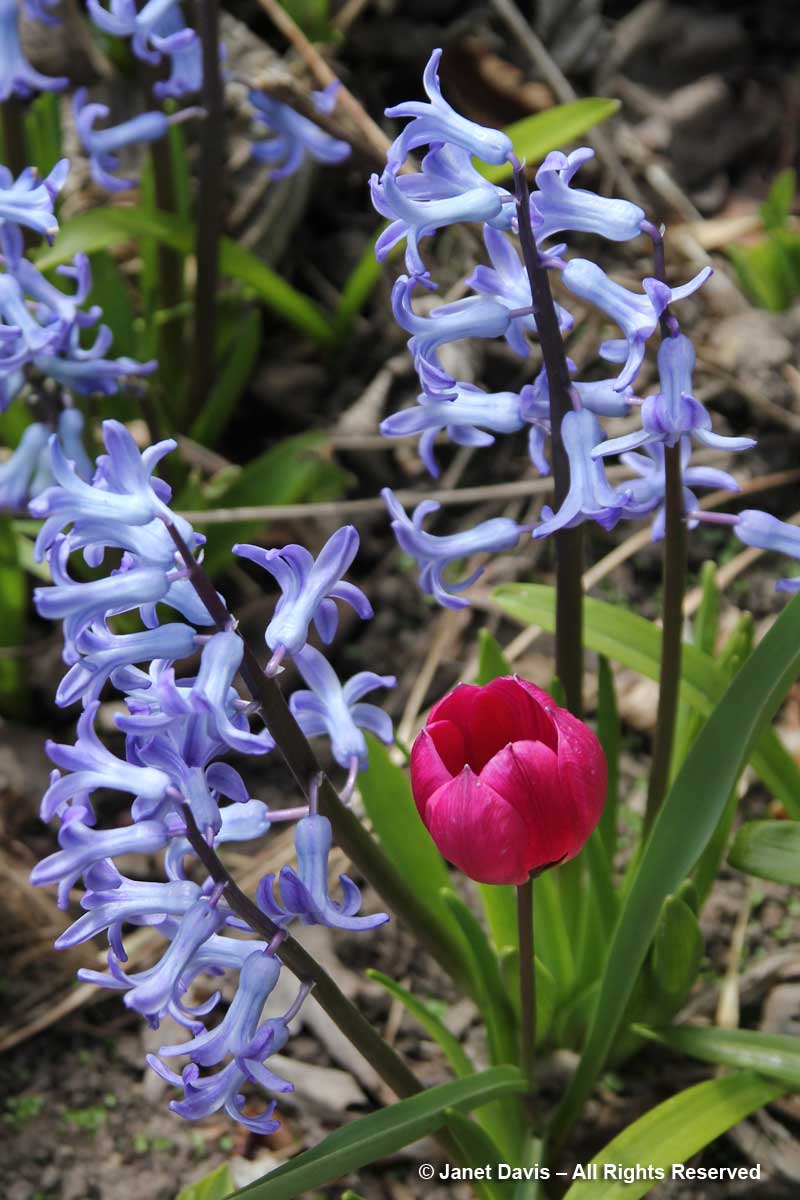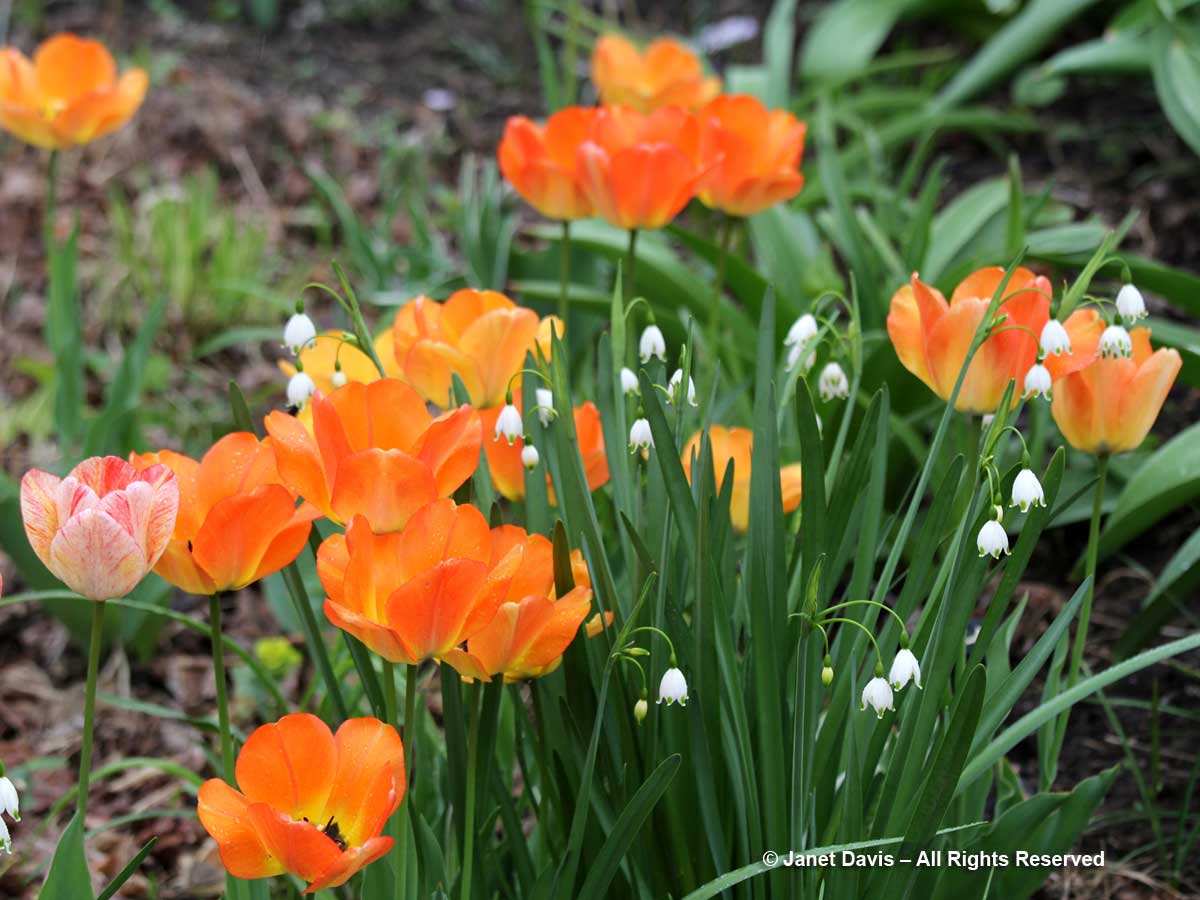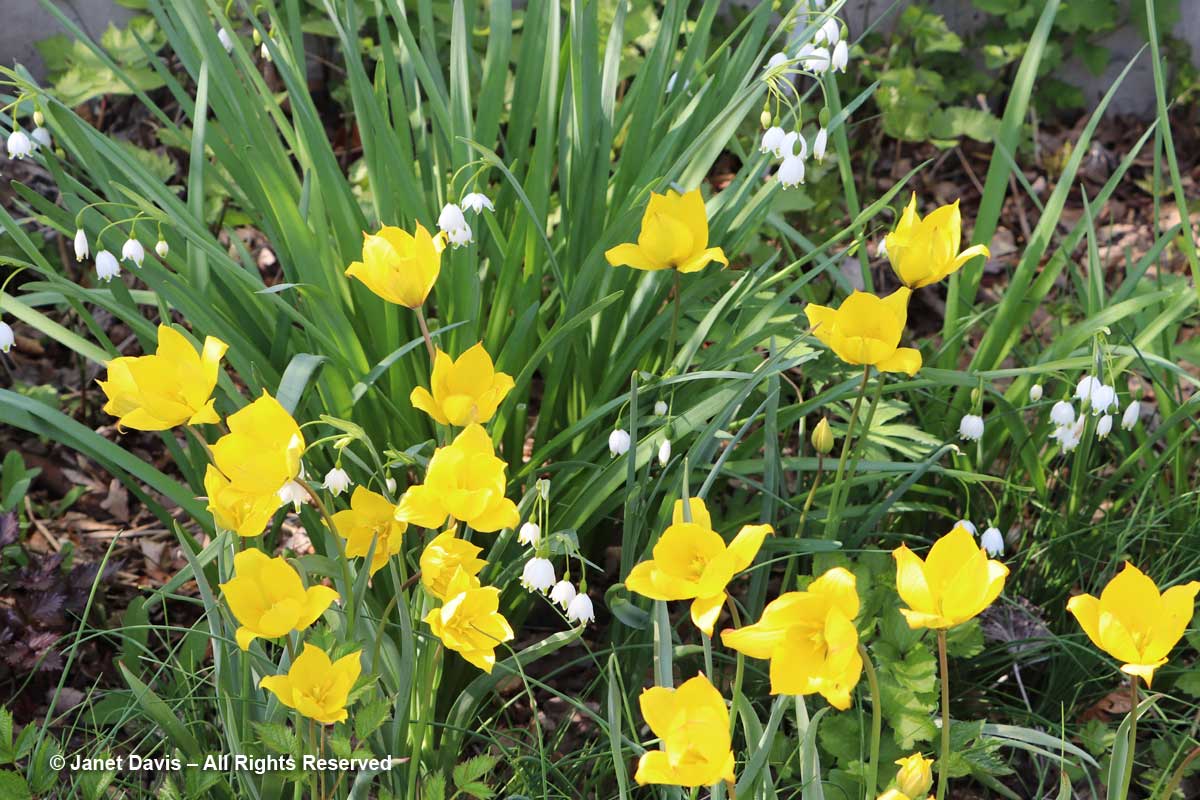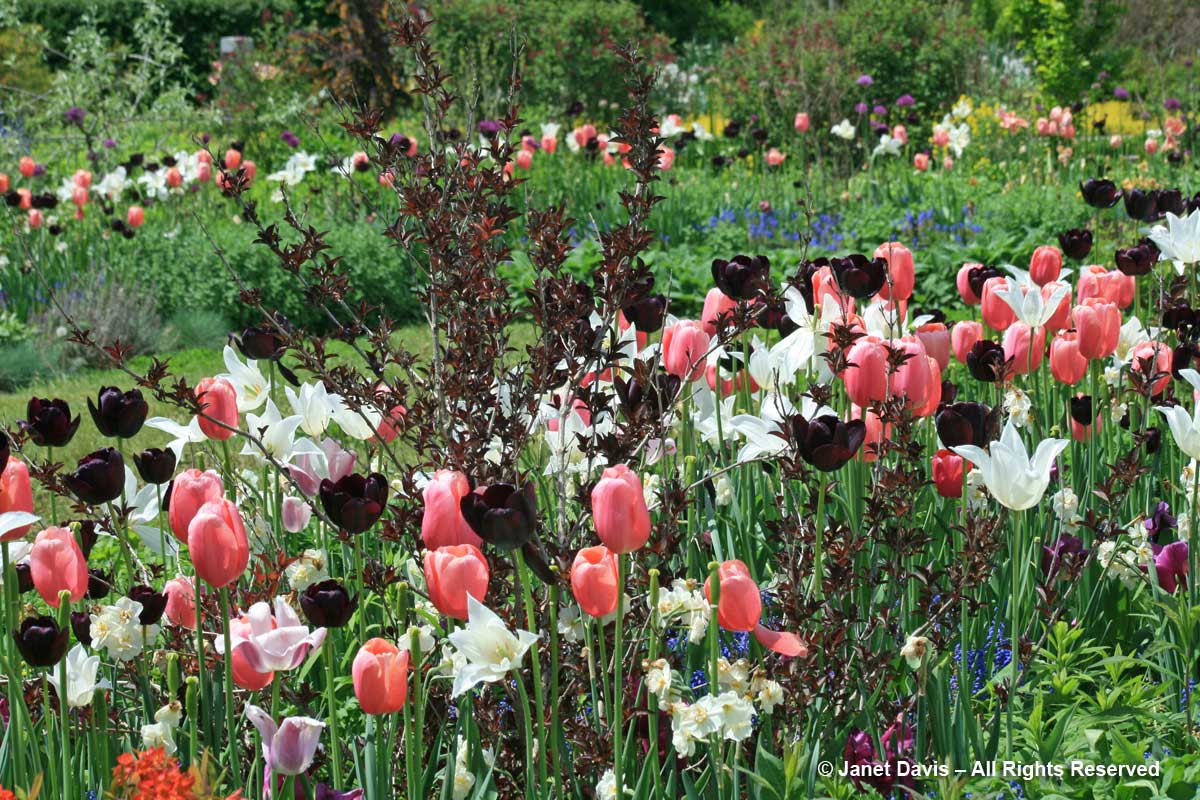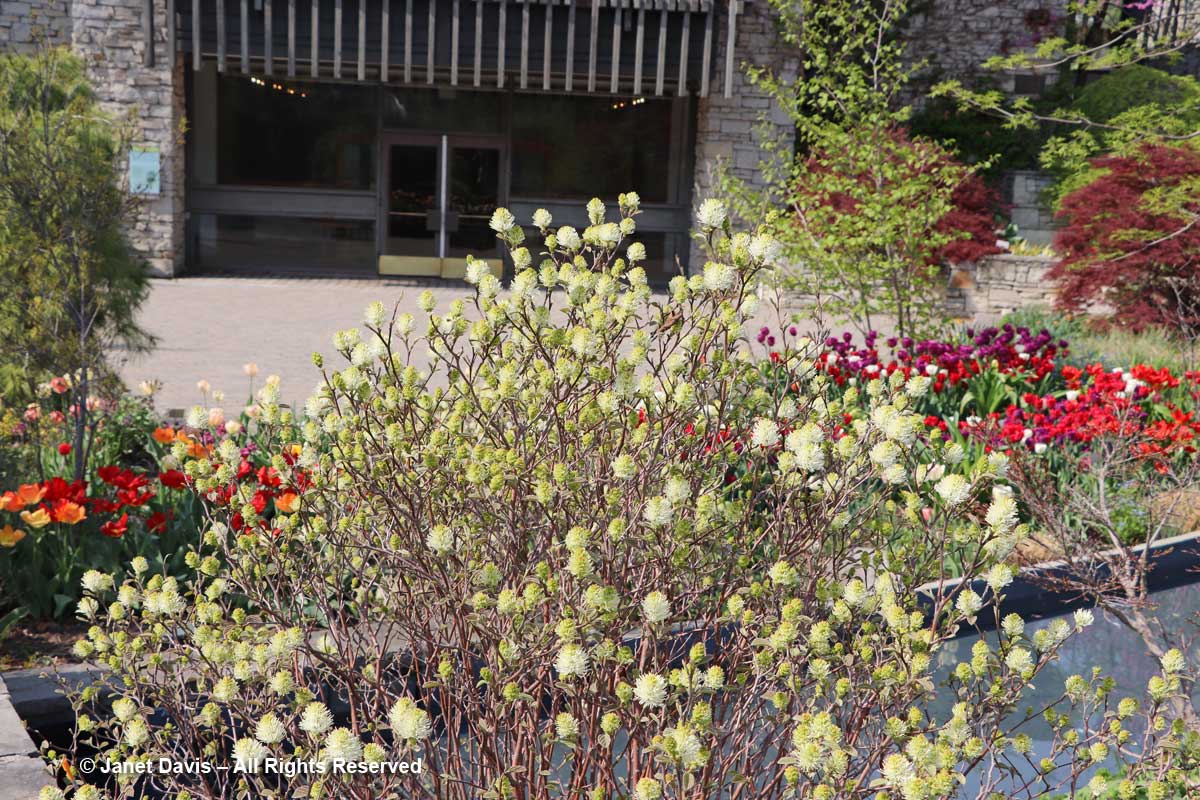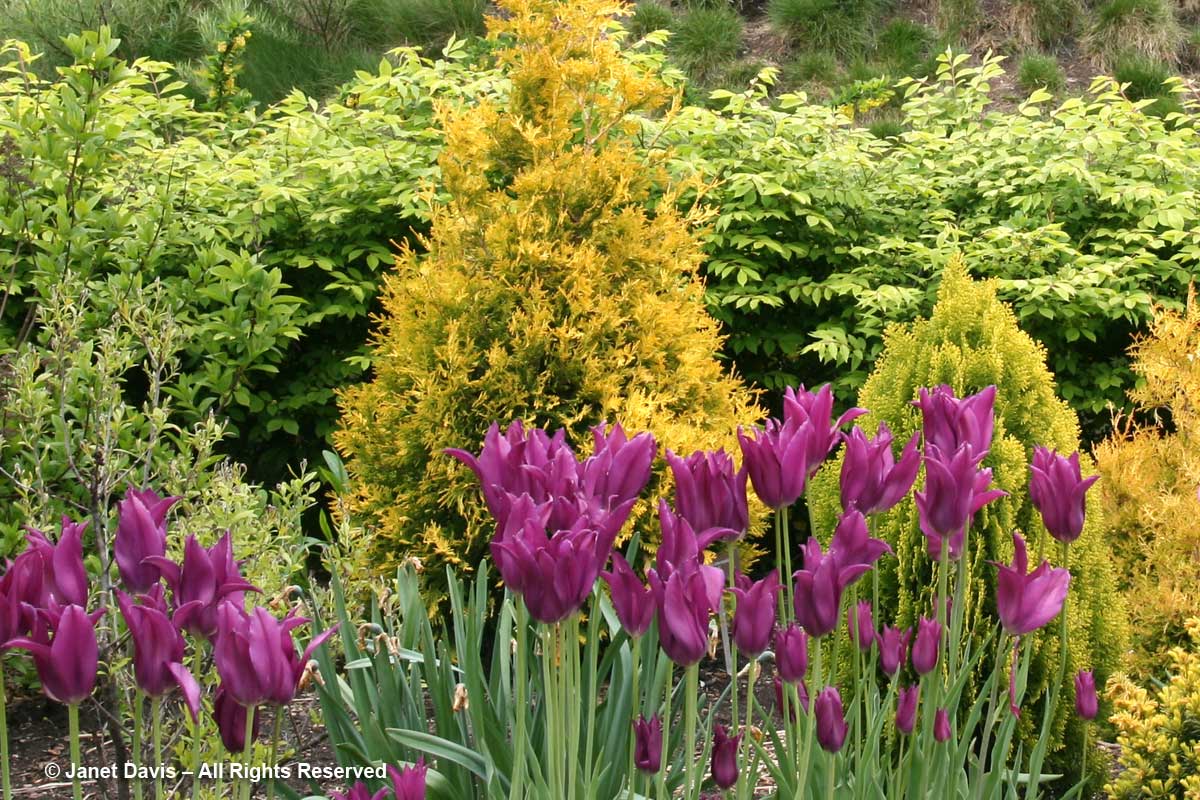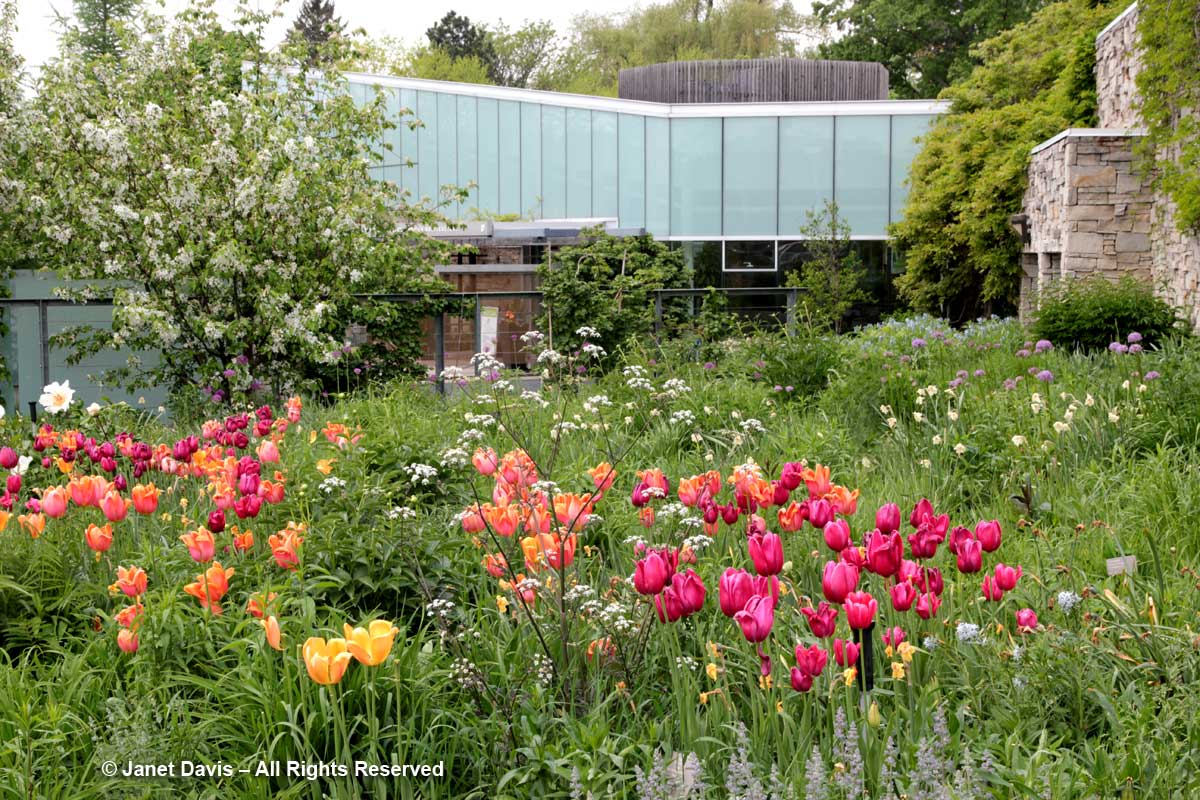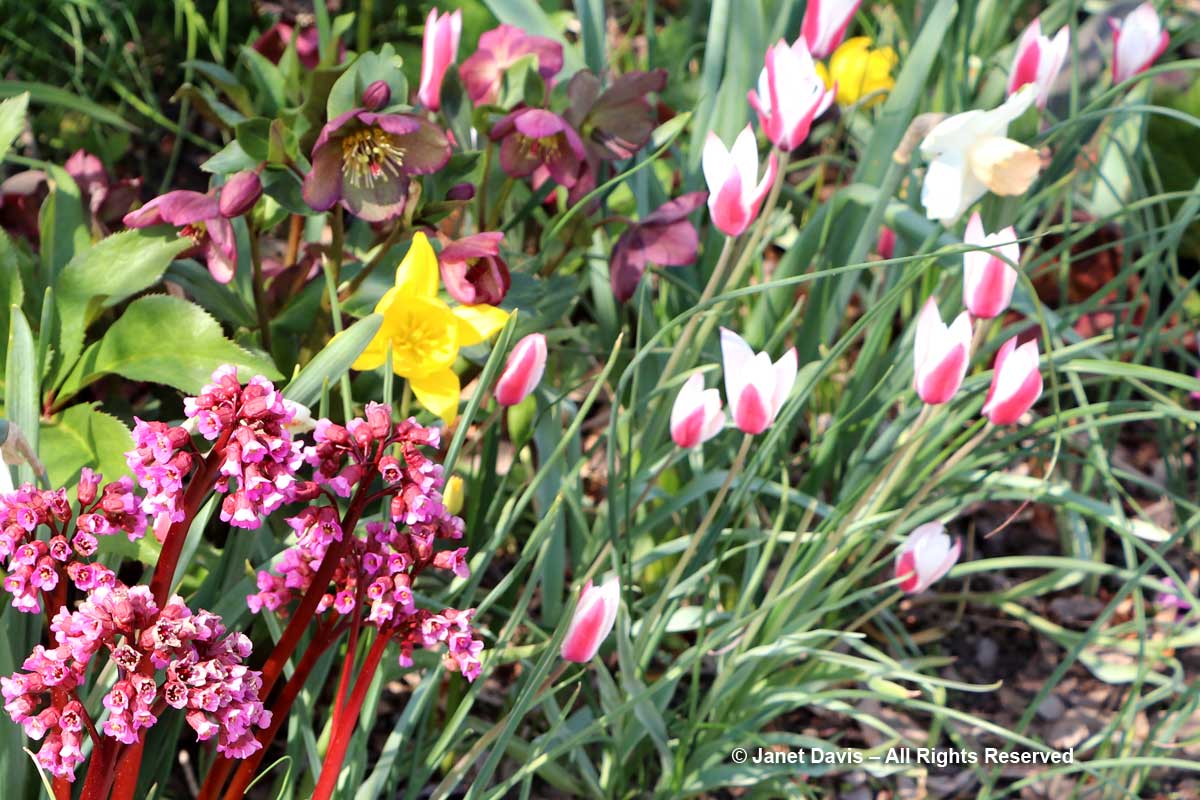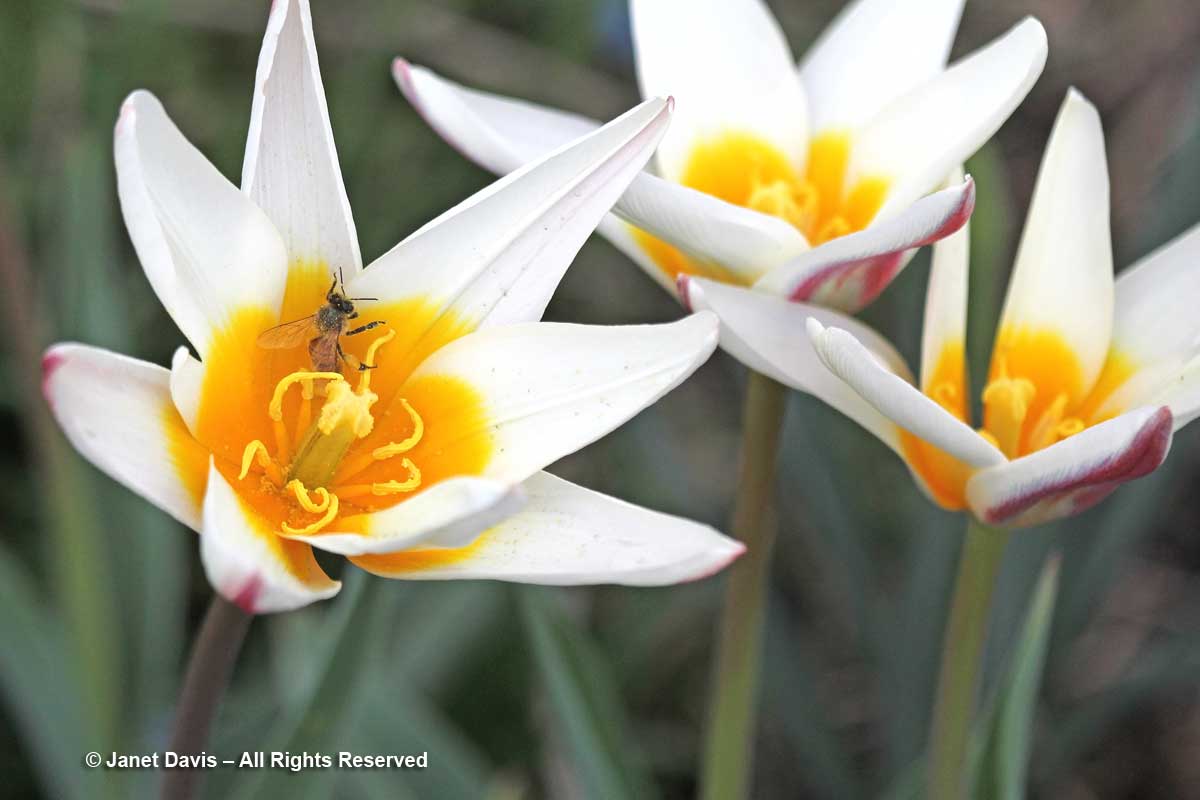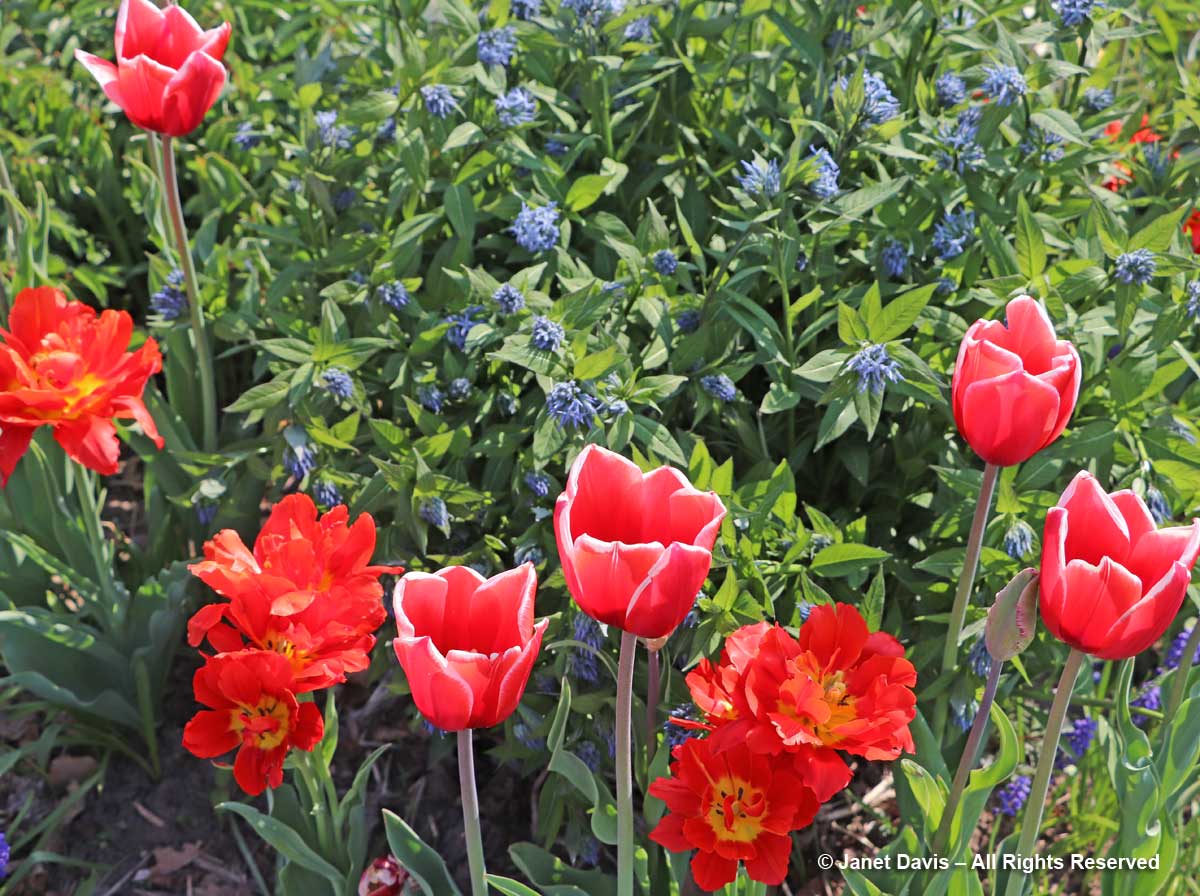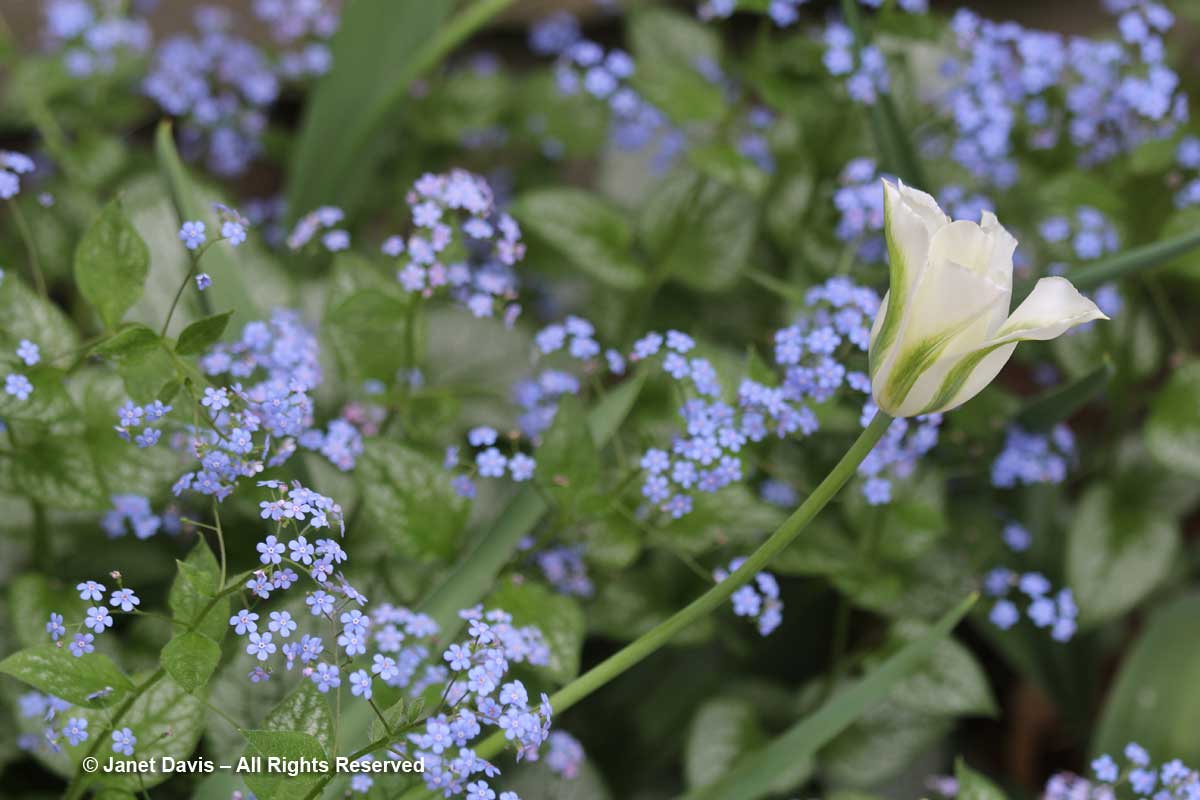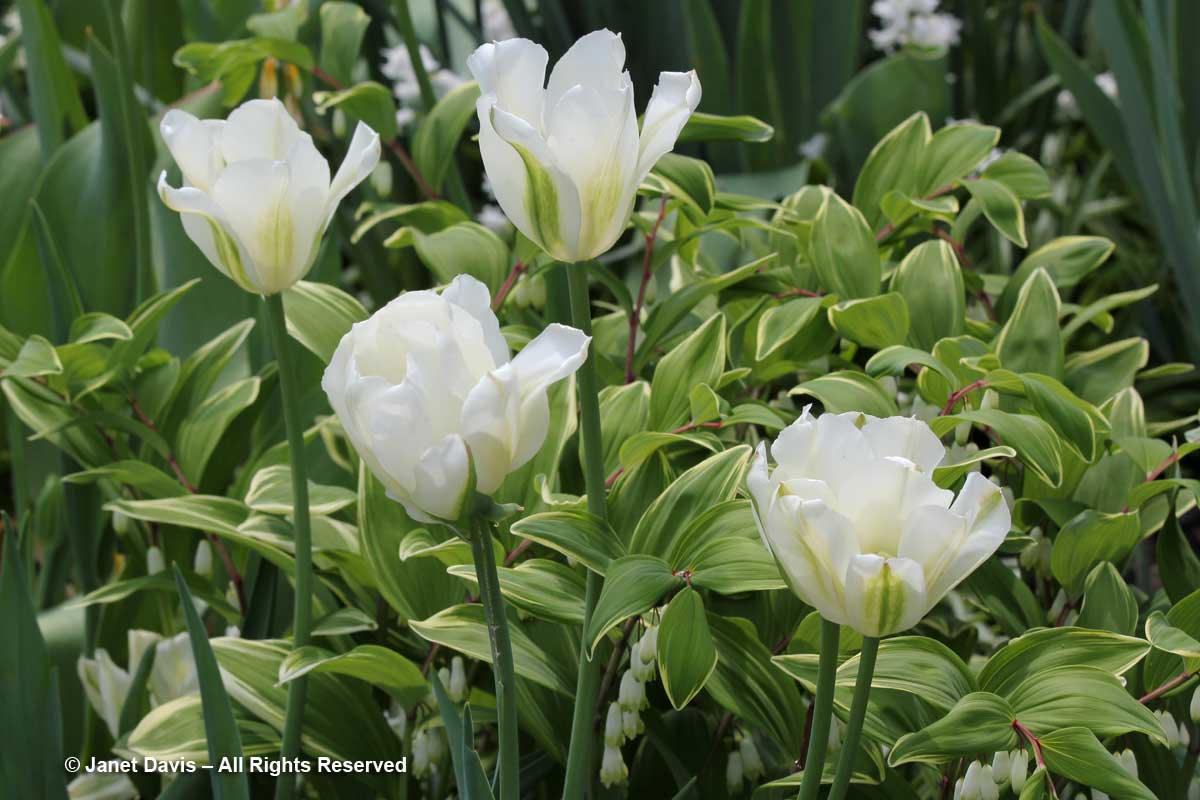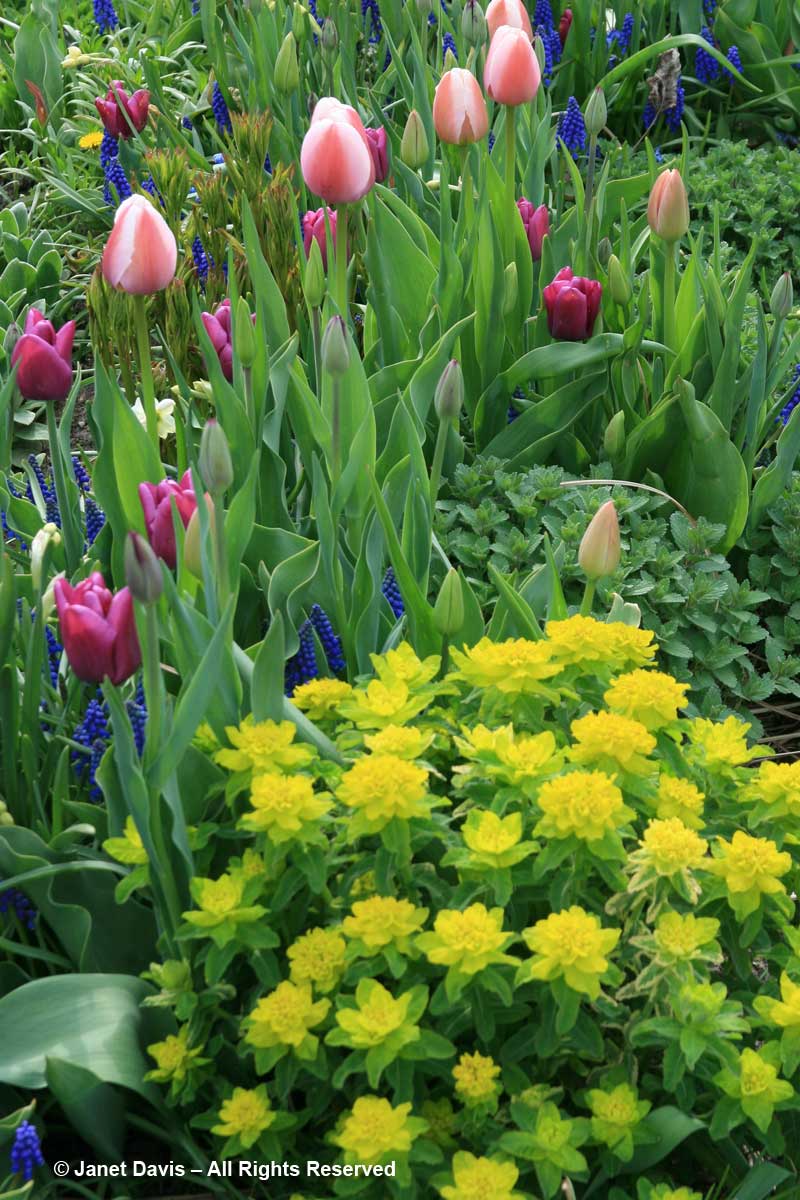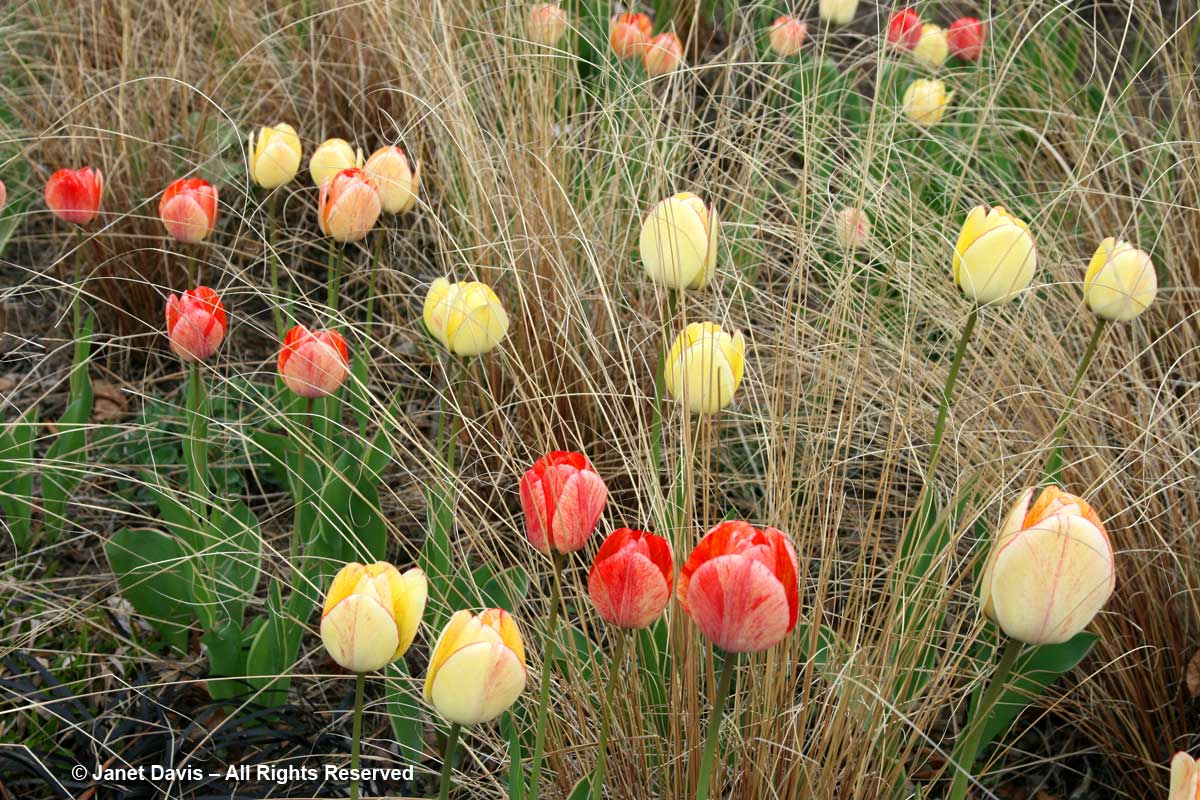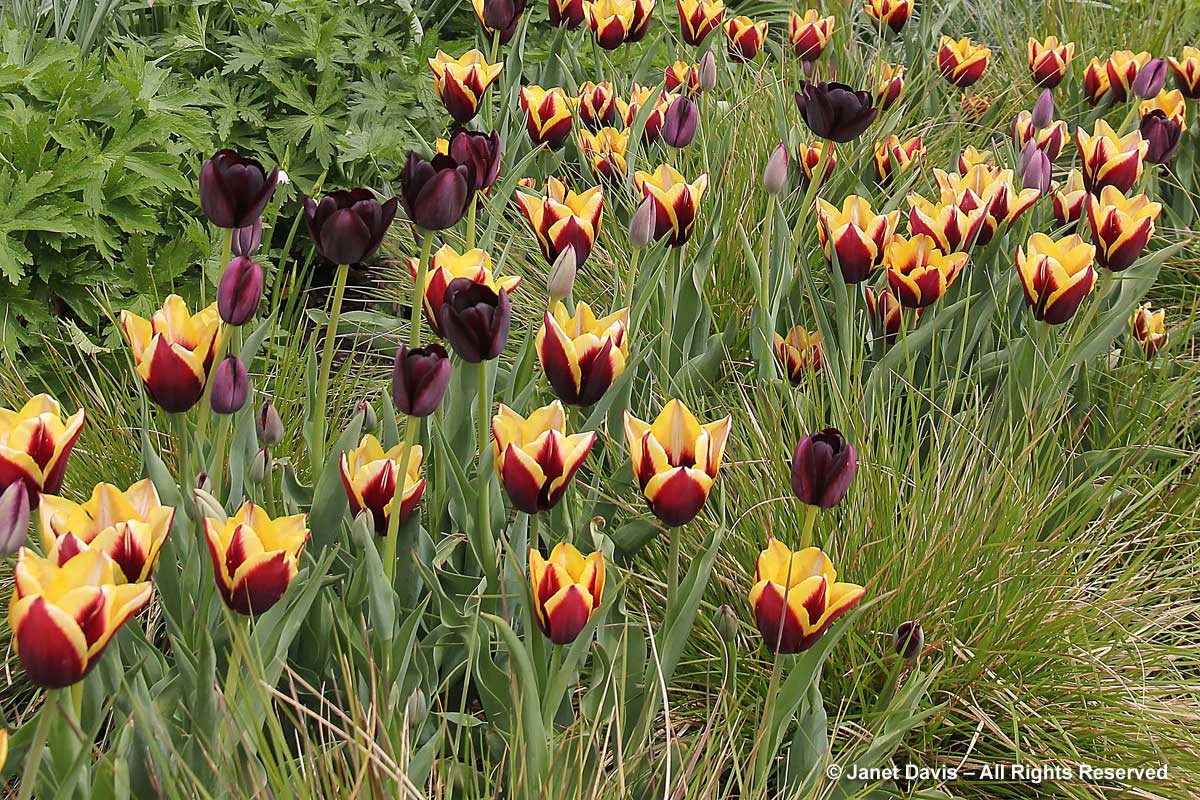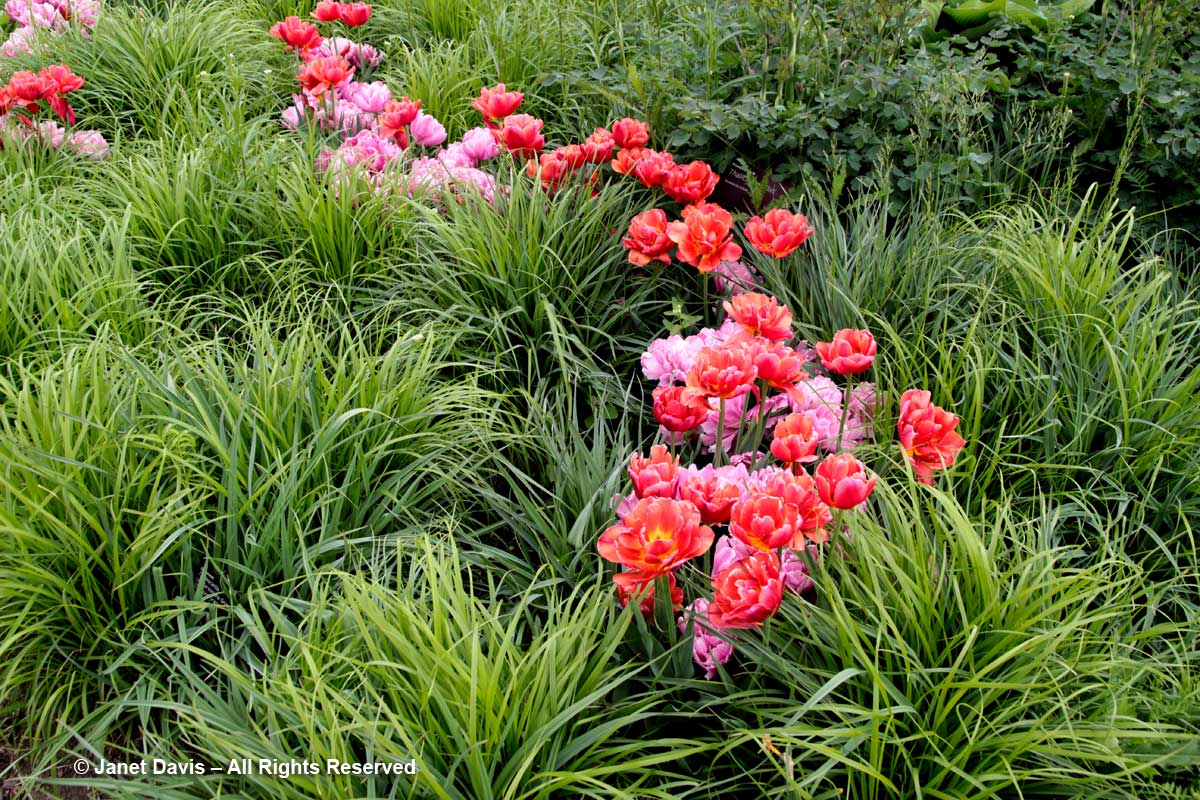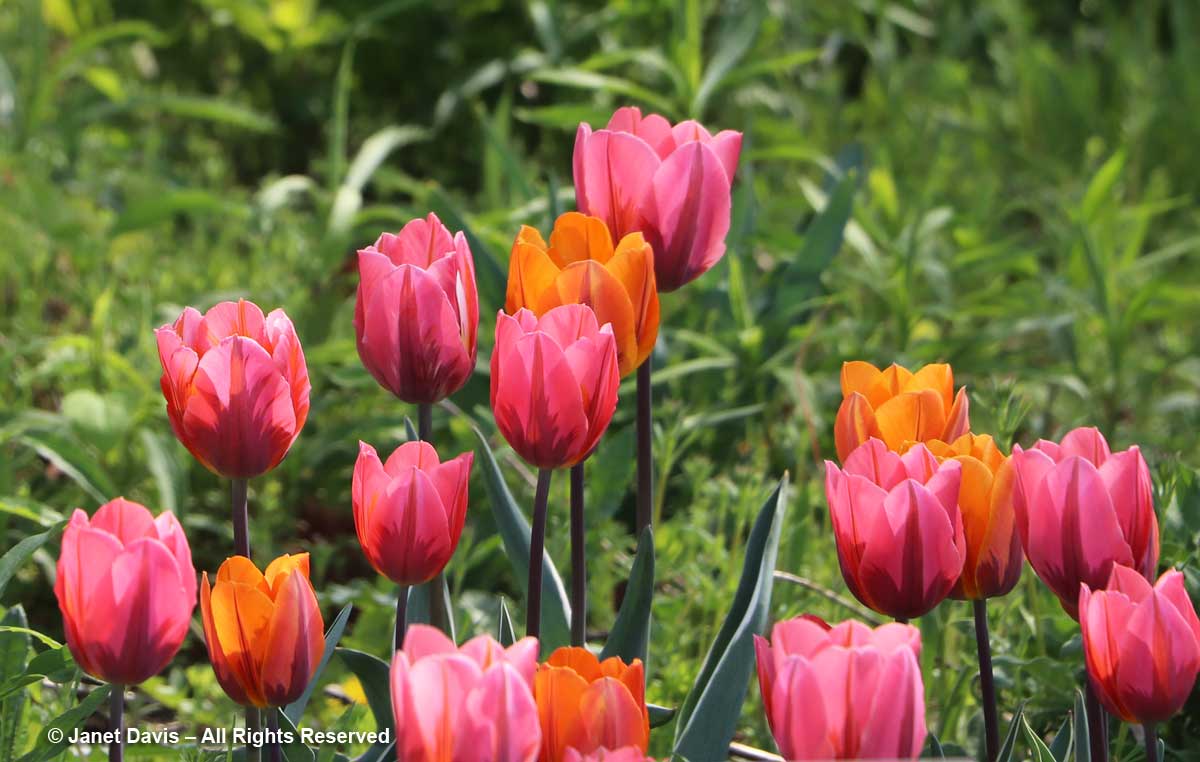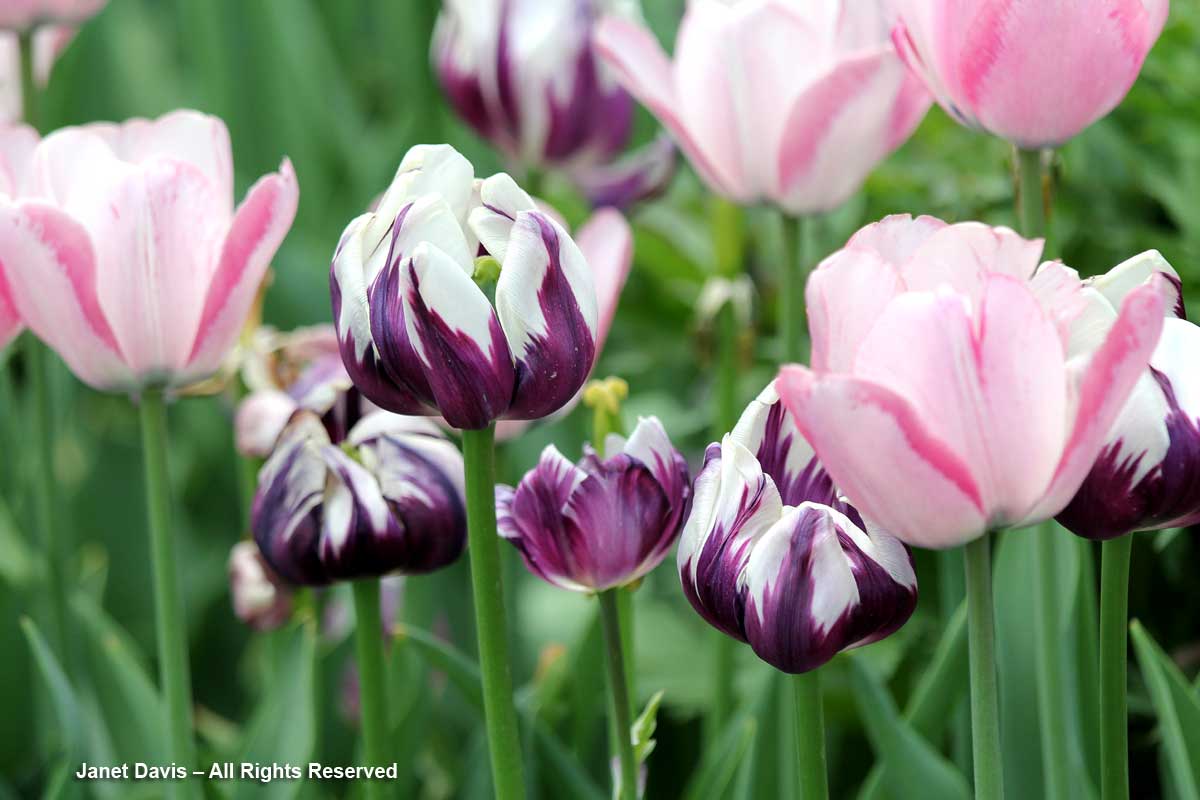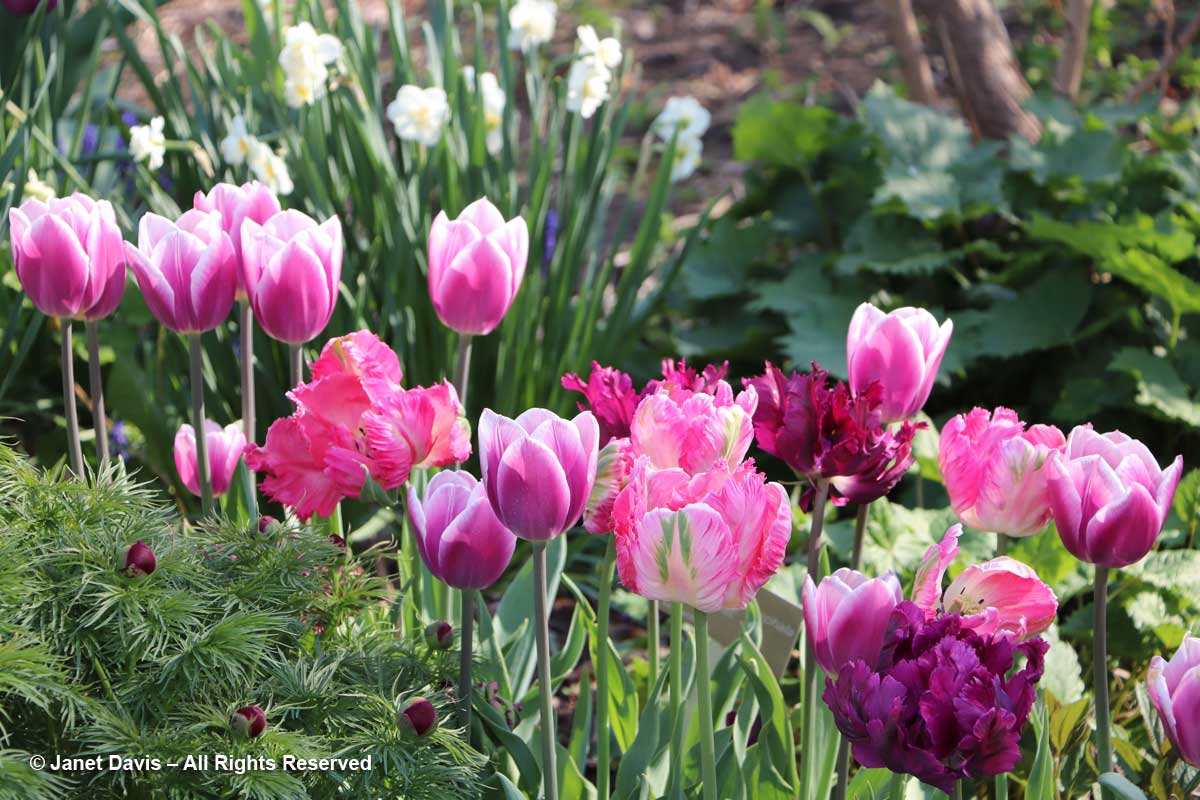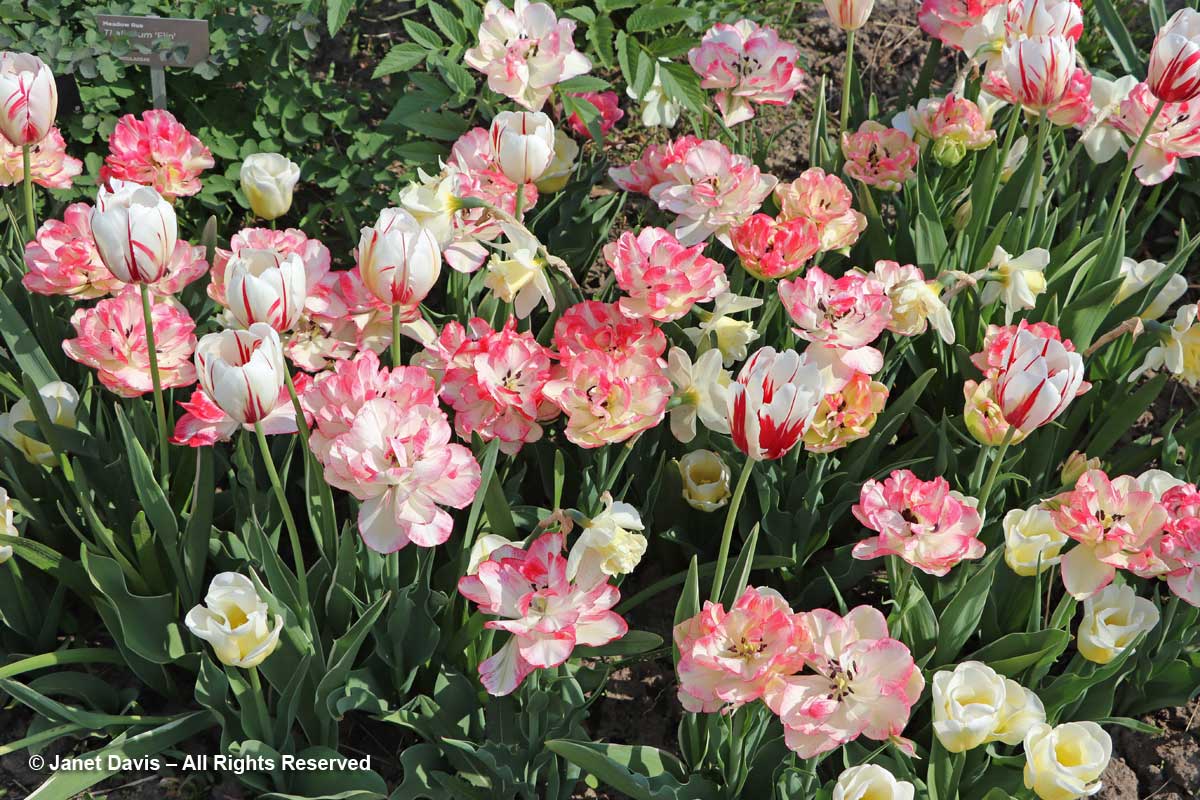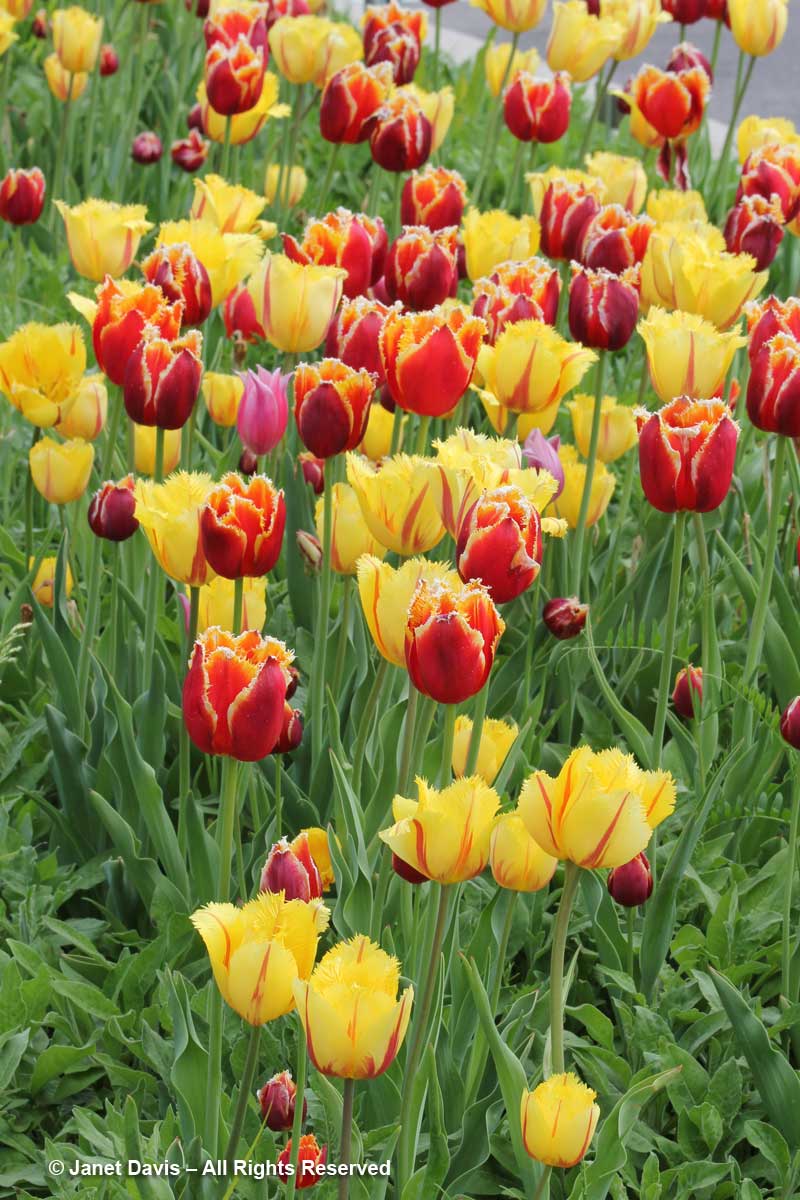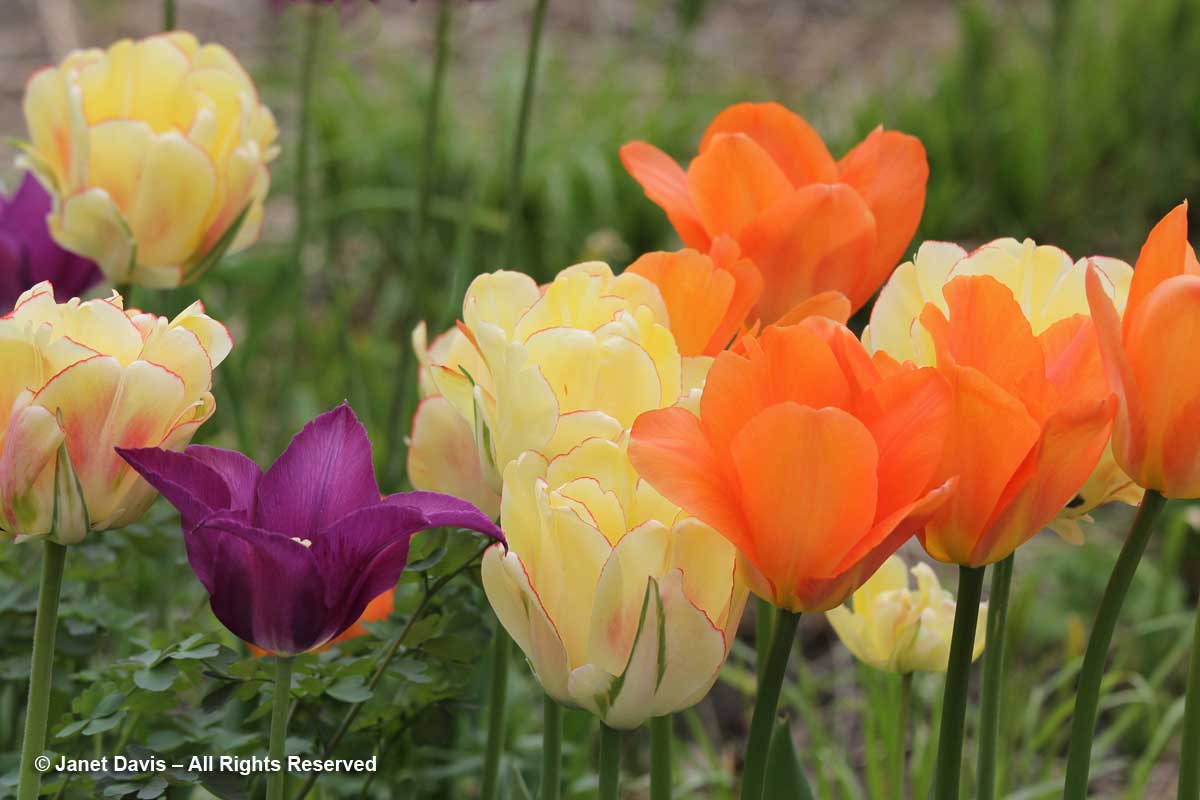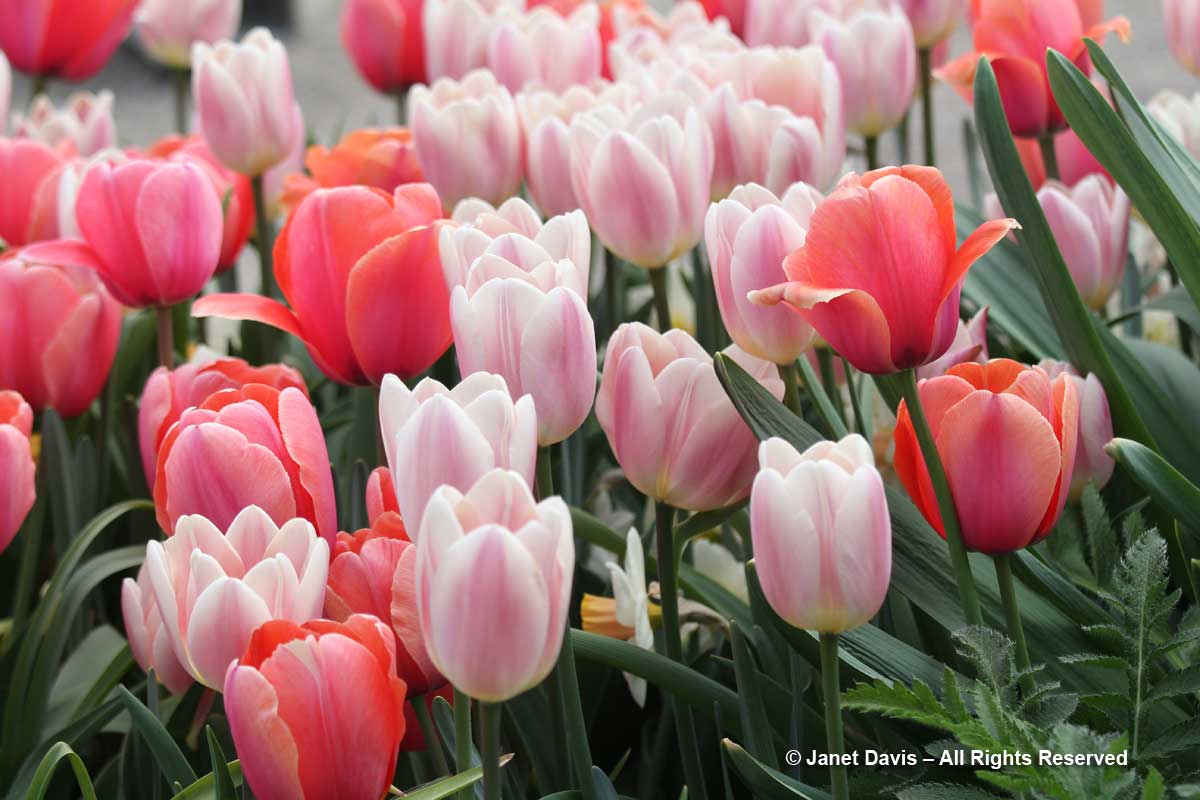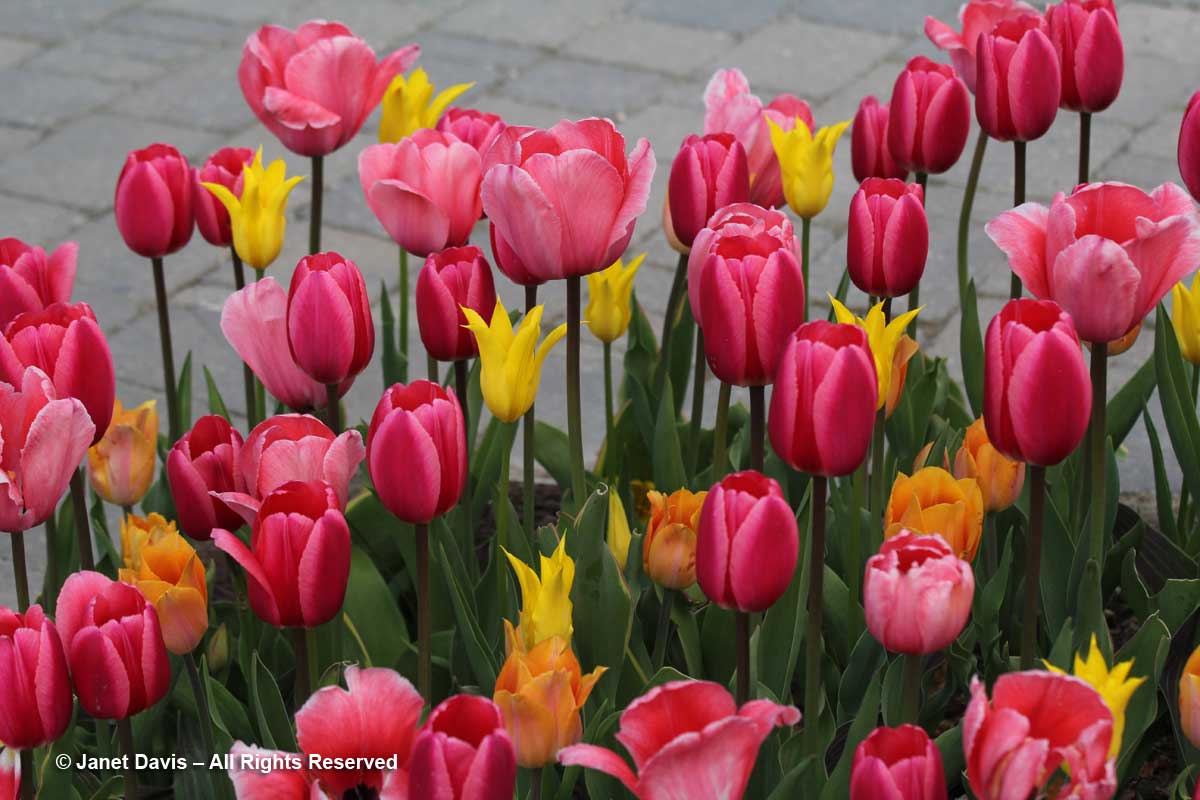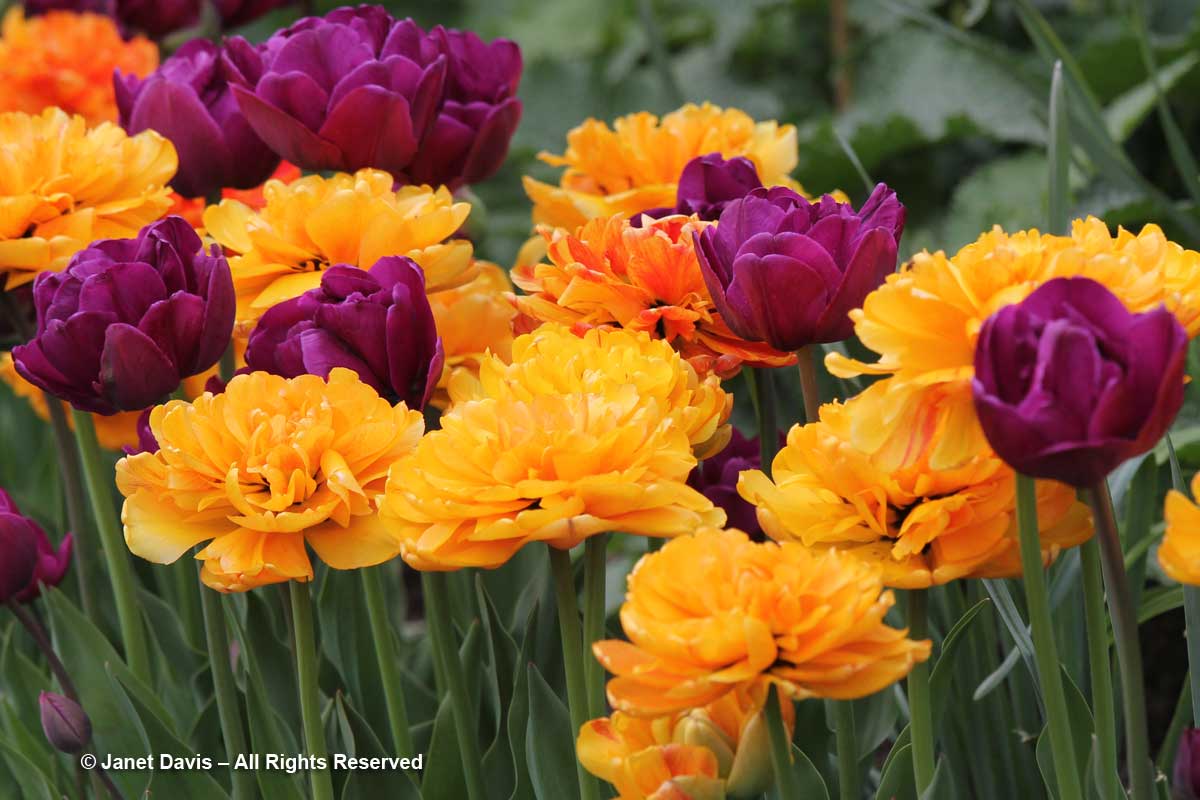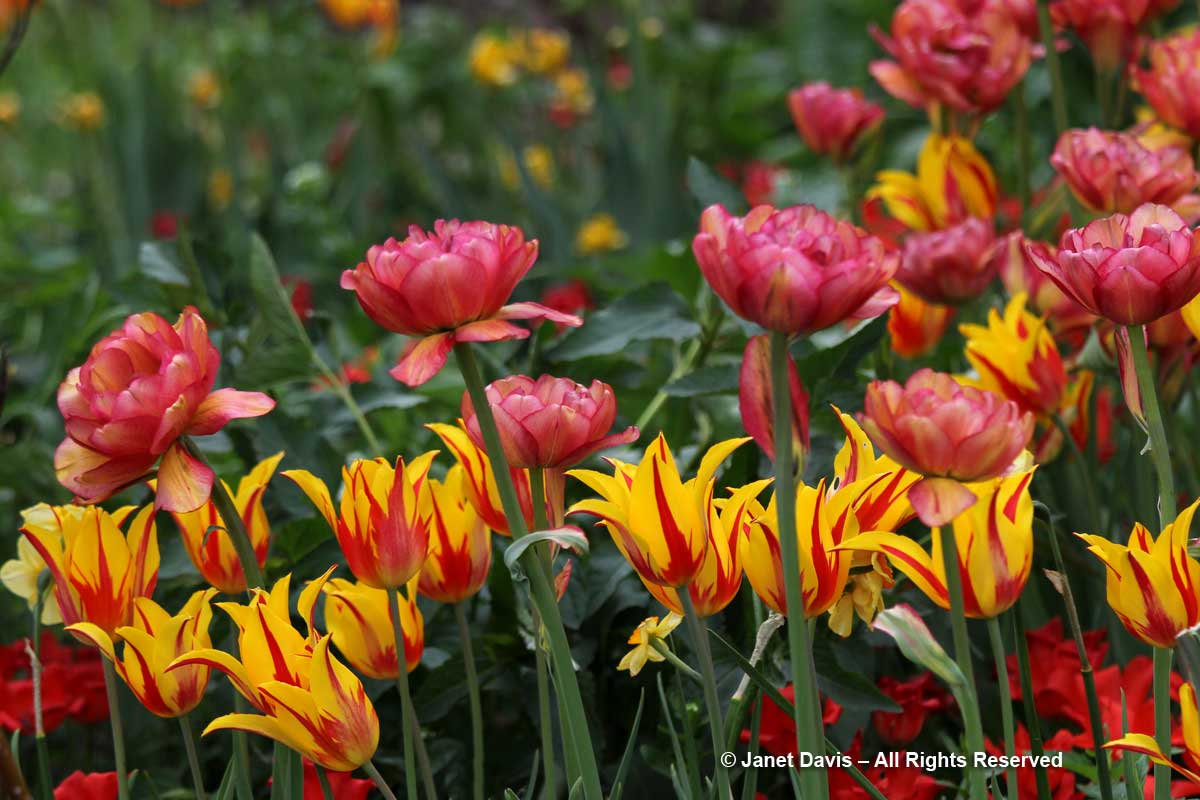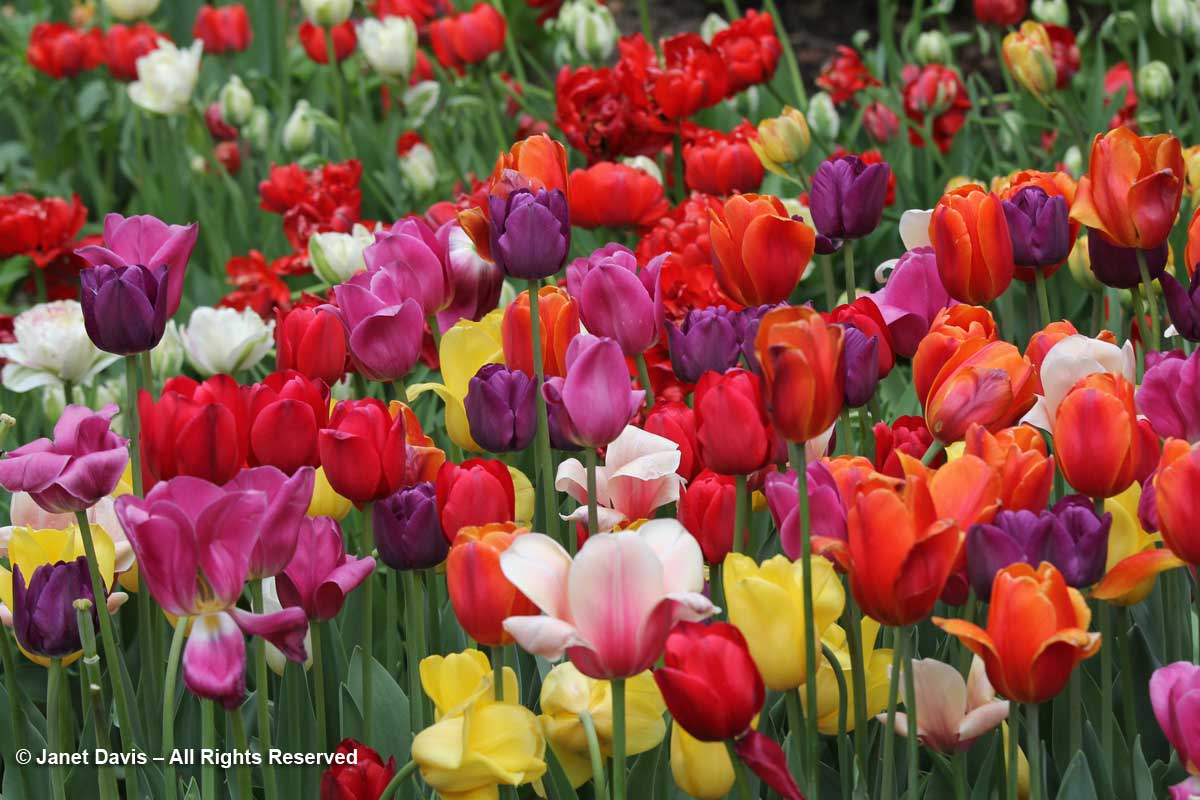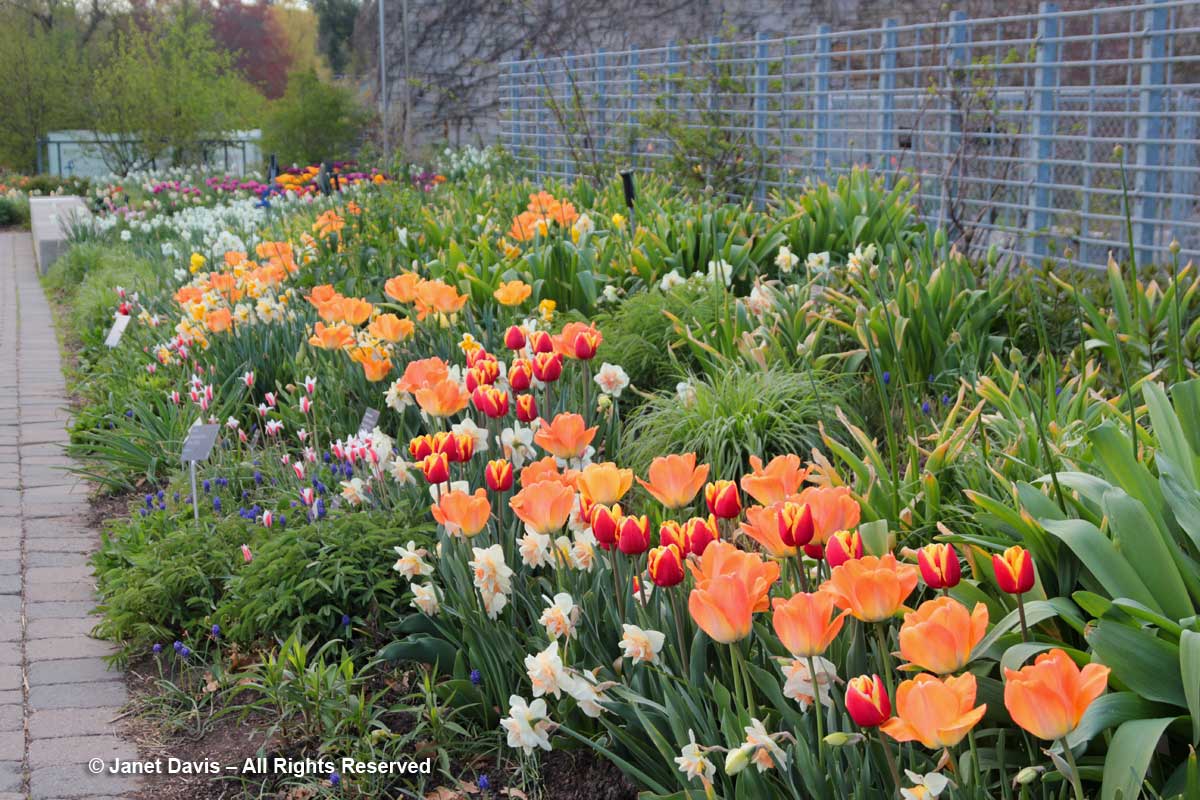In my garden, the month of May brings the familiar song of the cardinal high up in my black walnut tree, the flurry of house sparrows making nests in the cedar hedge and the buzz of queen bumble bees emerging from their winter nests to forage for pollen. Most of the early bulbs have now faded away and it is prima donna season for shimmering white daffodils and tulips in a rainbow of warm hues. My fairy crown for early May is a celebration of mid-spring abundance featuring tulips in peach, pink and lilac; ‘Geranium’, ‘Stainless’ and ‘Thalia’ daffodils; peachy ‘Gipsy Queen’ hyacinth still in flower; blue-and-white grape hyacinths (Muscari aucheri ‘Ocean Magic’); wine-red snakeshead fritillary (Fritillaria meleagris); a truss of magenta ‘PJM’ rhododendron; the delicate red blossoms of my Japanese maple (Acer palmatum); and the first tiny, blue flowers of perennial Siberian bugloss (Brunnera macrophylla).

Now is also the time when I rummage through my cupboards searching out small vases, shot glasses, votive candle holders and favorite mugs to hold these long-awaited blossoms to bring the joy and fragrance of spring indoors.
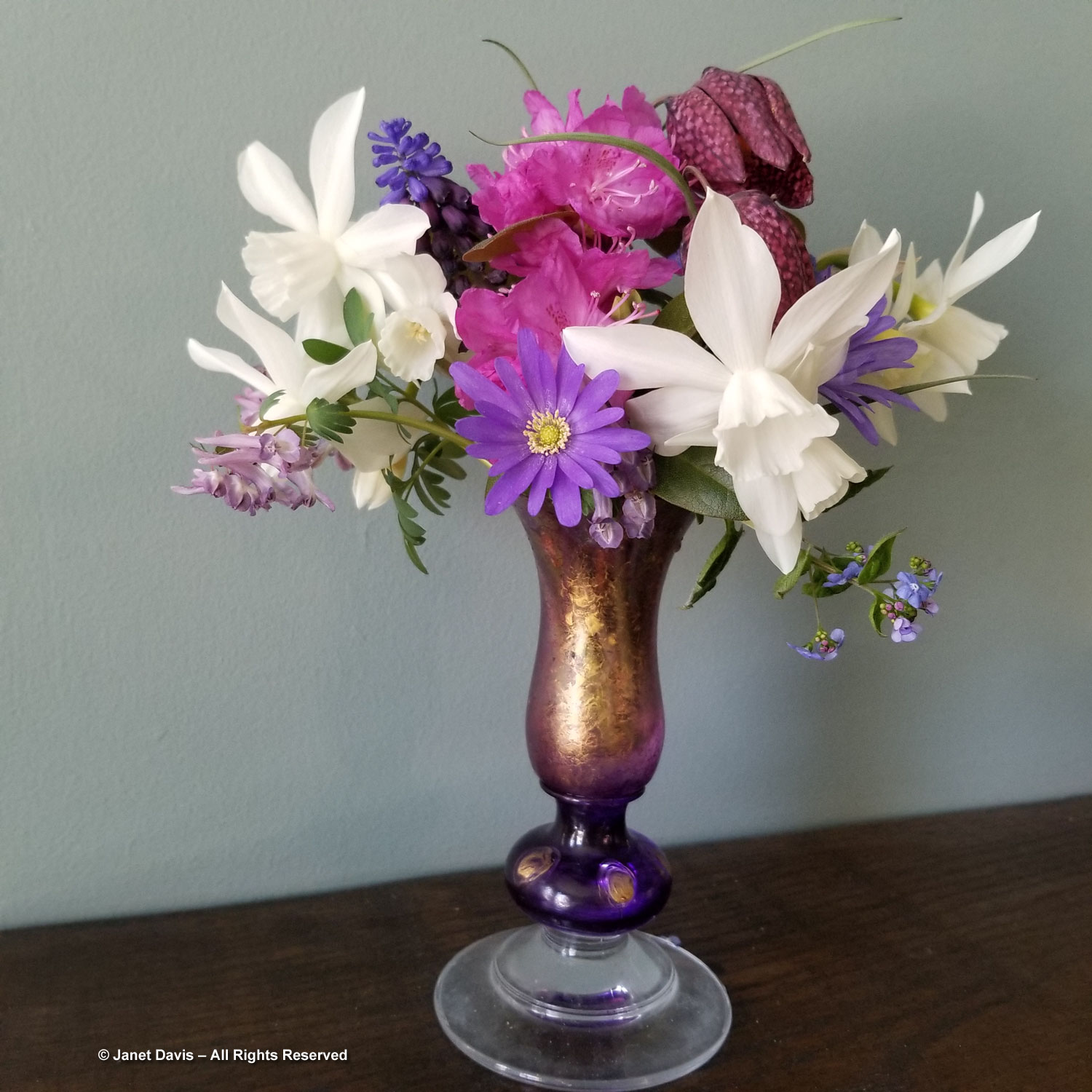
My front garden flanks the city sidewalk – no fence, no obstacles for neighbours and passersby who wish to stop and gaze or capture the flowers with their cell phone. And it’s never more popular than now, when the bulbs bloom in riotous profusion in what will be a towering prairie months later – no single-color blocks for me!
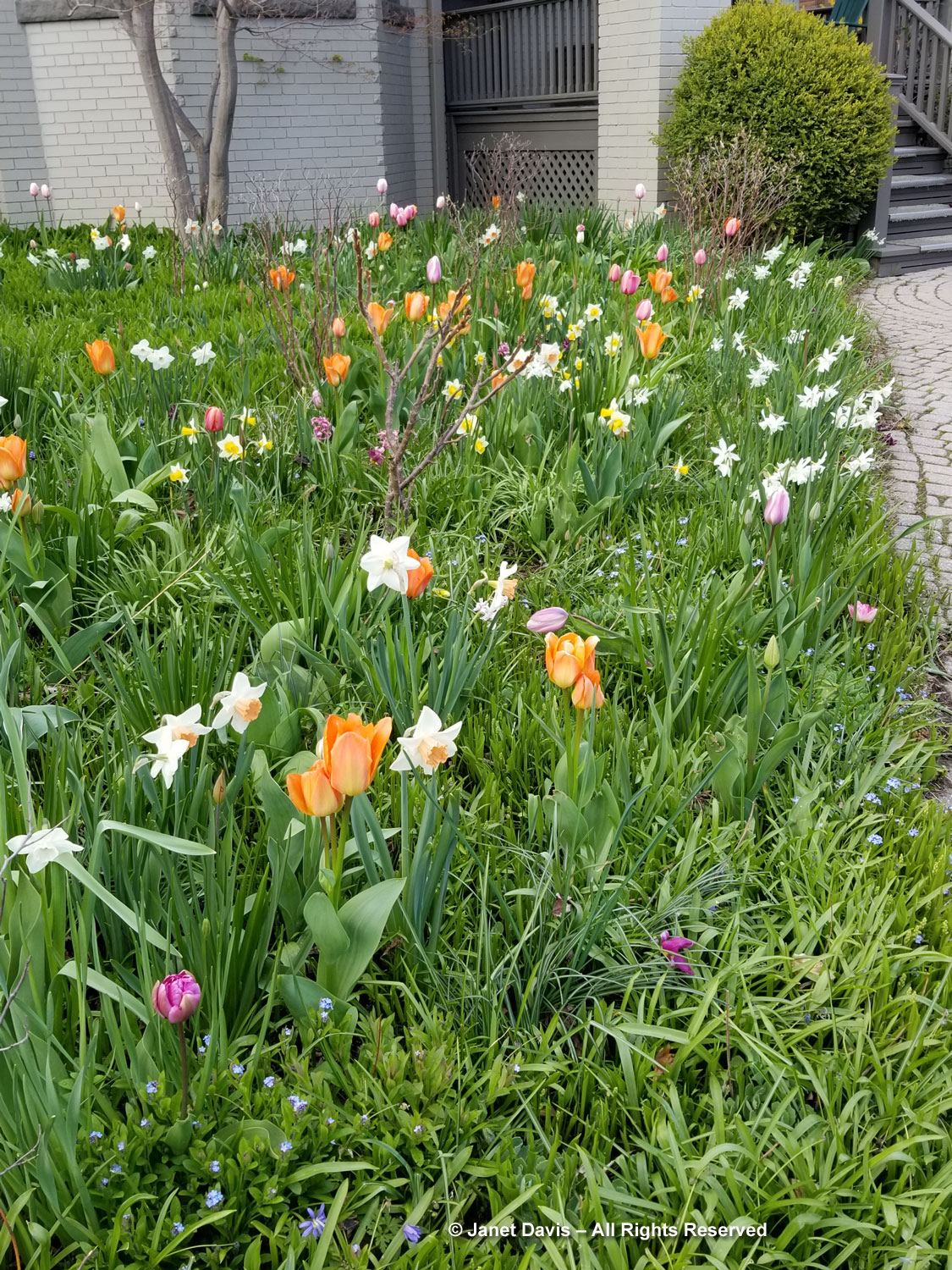
I’ve never understood gardeners who turn down their noses at tulips. Yes, they’re gaudy! Isn’t that the point? We need color after a long winter.
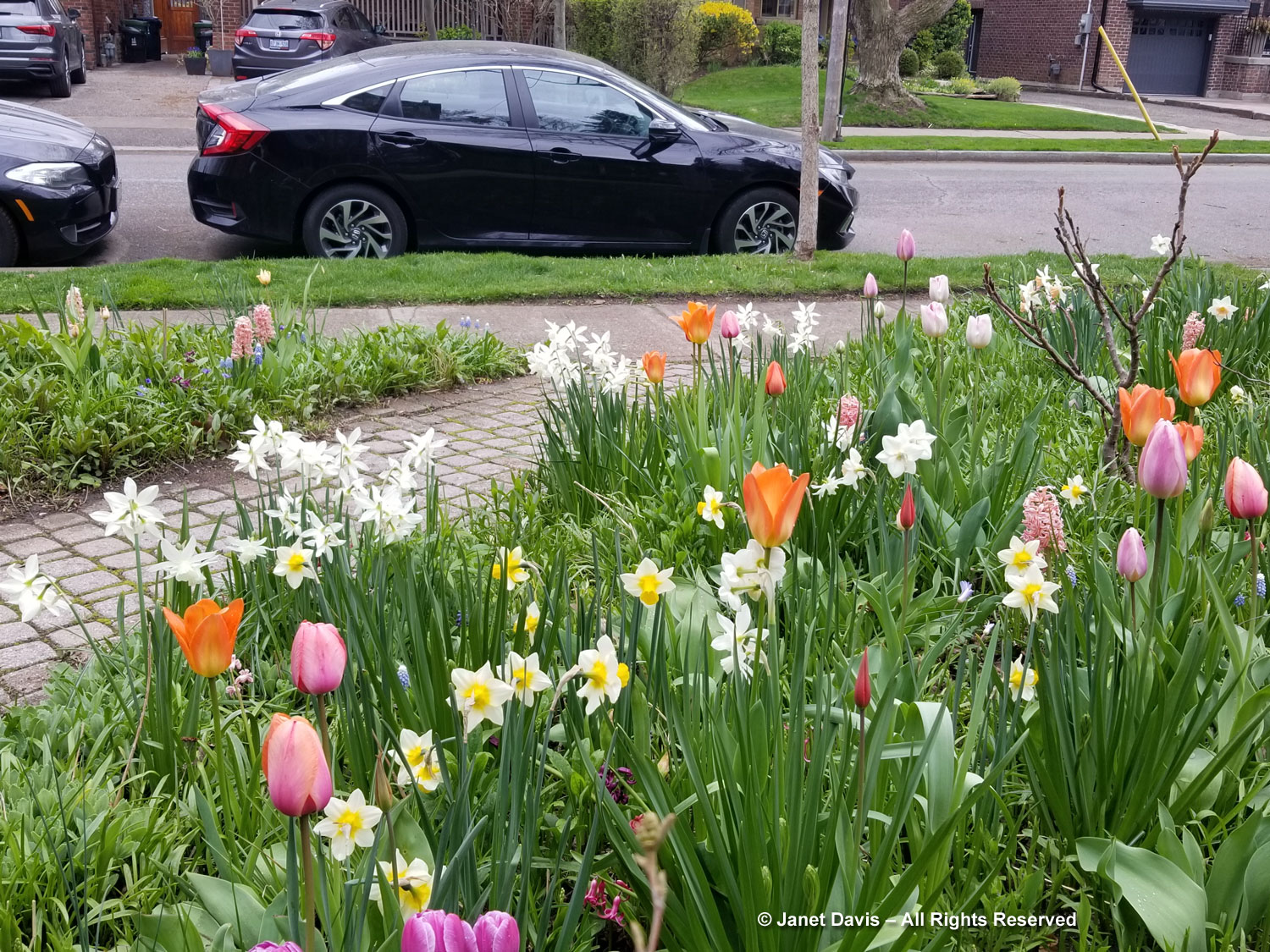
The ‘Shogun’ tulips continue to open while the big Fosteriana tulip ‘Orange Emperor’ starts to flower as well. I mentioned how much I love orange, right?
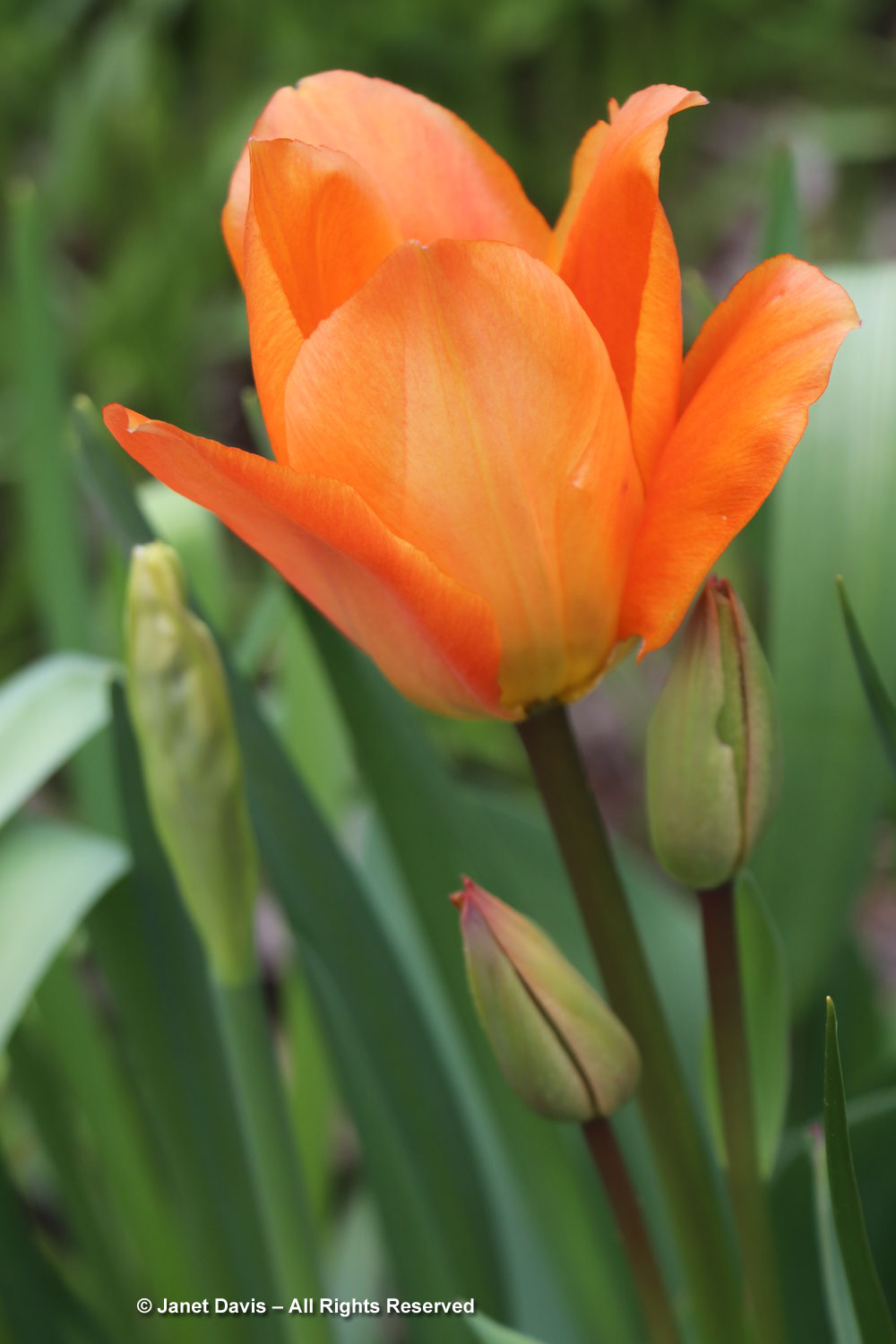
Each autumn, I add to the assortment, but old favourites include the big Darwin Hybrids ‘Pink Impression’….
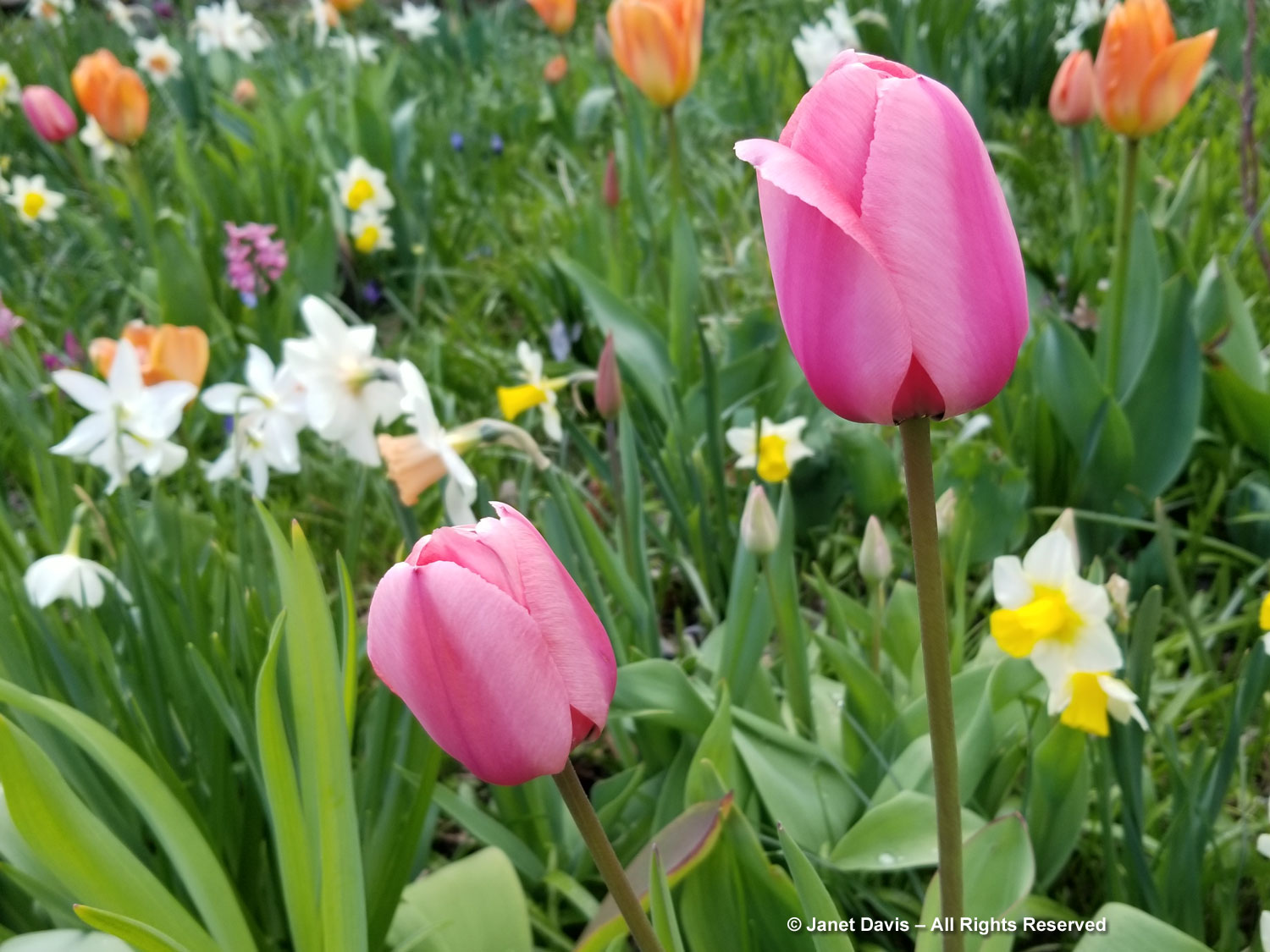
… and ‘Apricot Impression’…
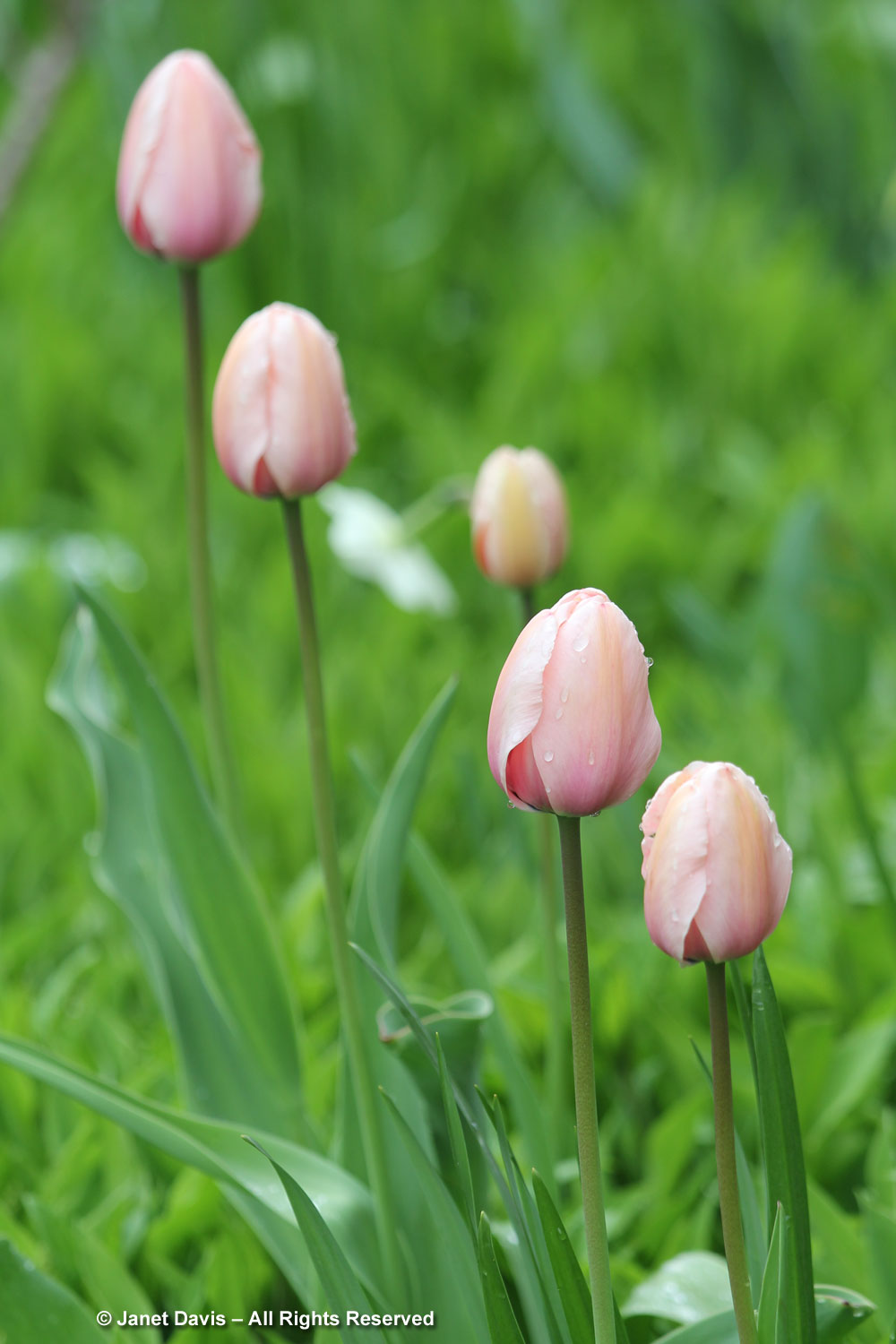
…. and the elegant lily-flowered tulip ‘Ballerina’.
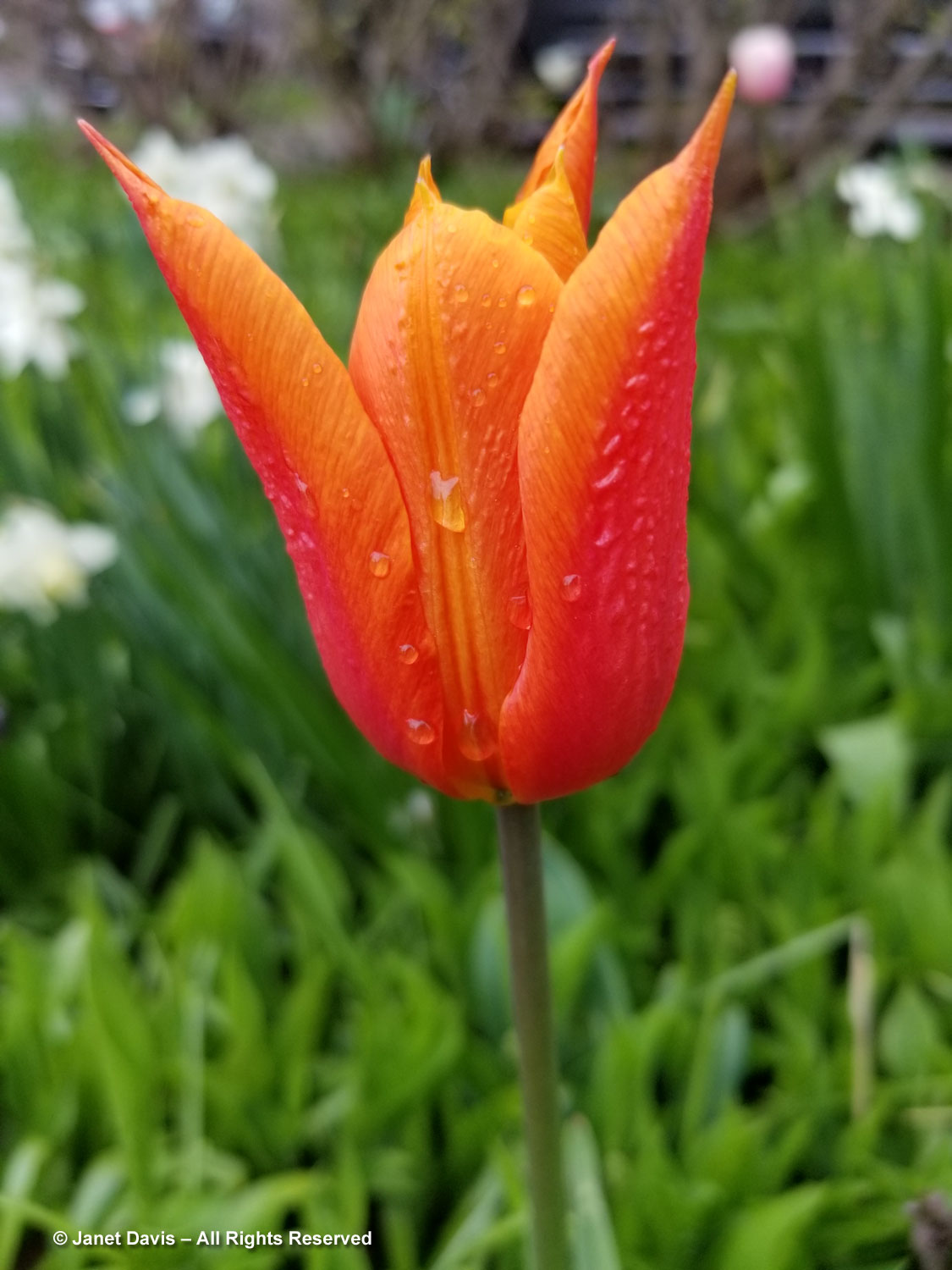
Other tulips in my spring repertoire that have hung around for more than a few seasons are the luscious double ‘Lilac Perfection’….
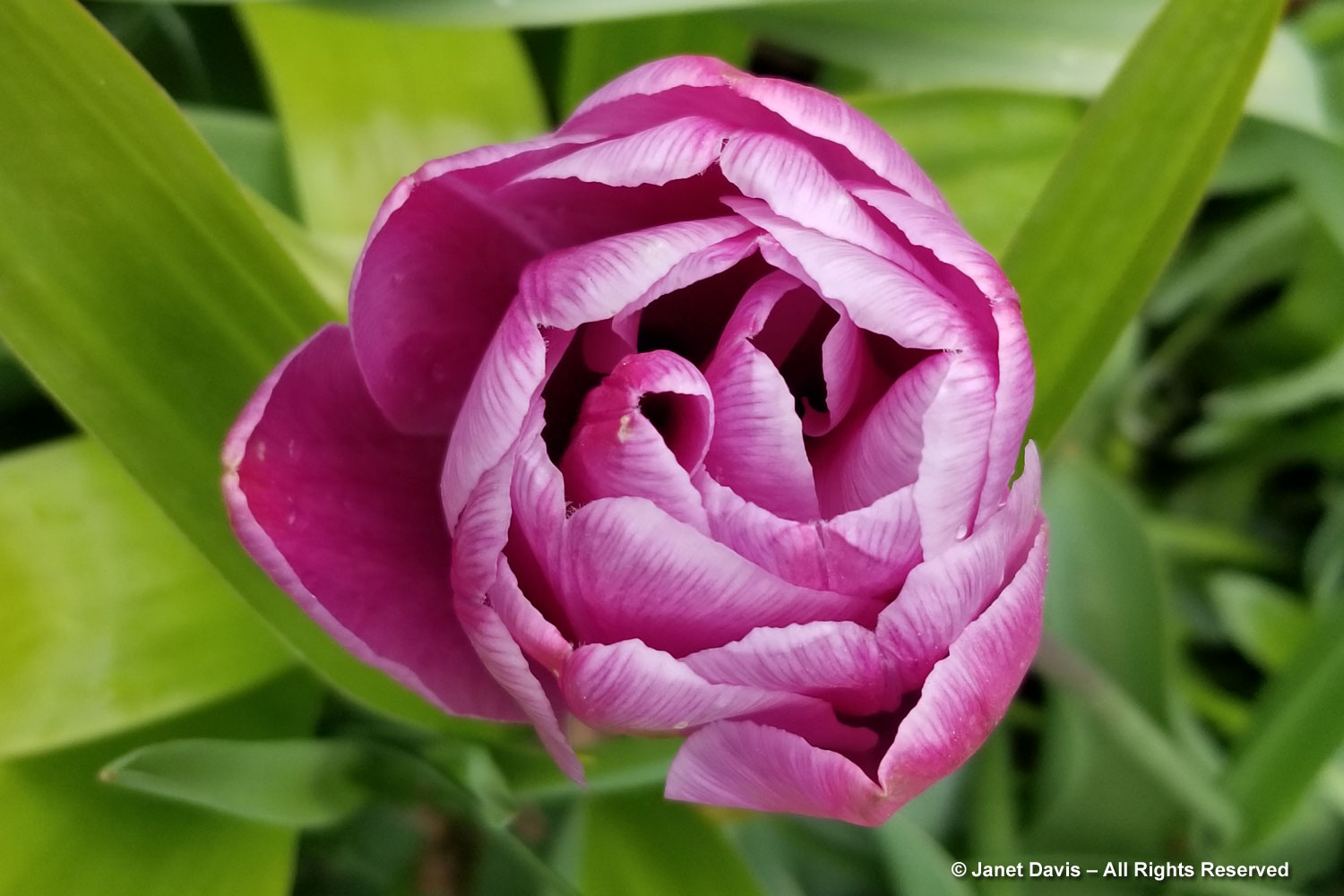
…. and the double fringed tulip ‘Crispion Sweet’.
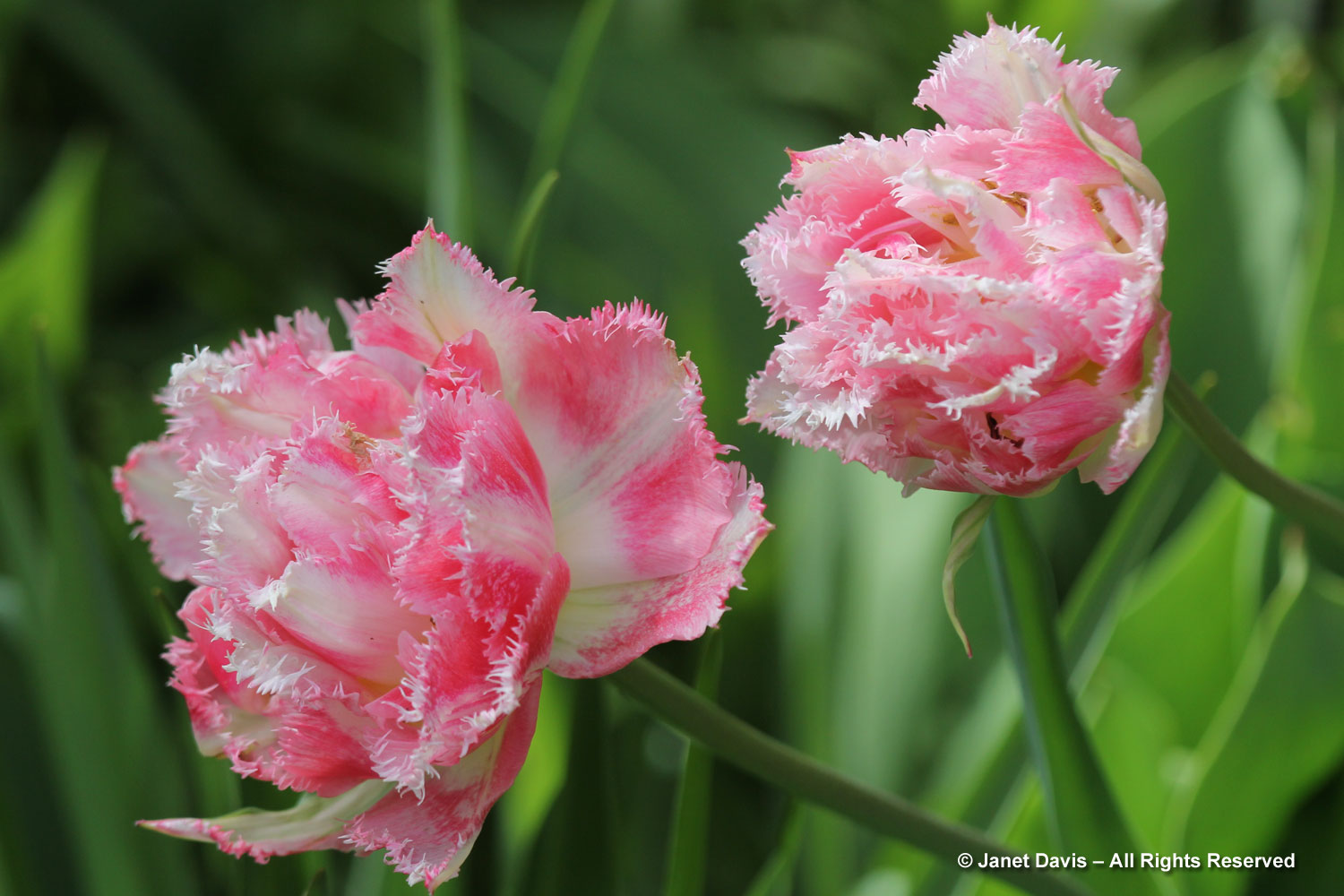
Fragrance in daffodils is important to me, as are longevity and a tendency to multiply. I love the spicy scent of the old Tazetta cultivar ‘Geranium’, with its clustered, shimmering-white flowers with orange cups, like a hardy paperwhite.
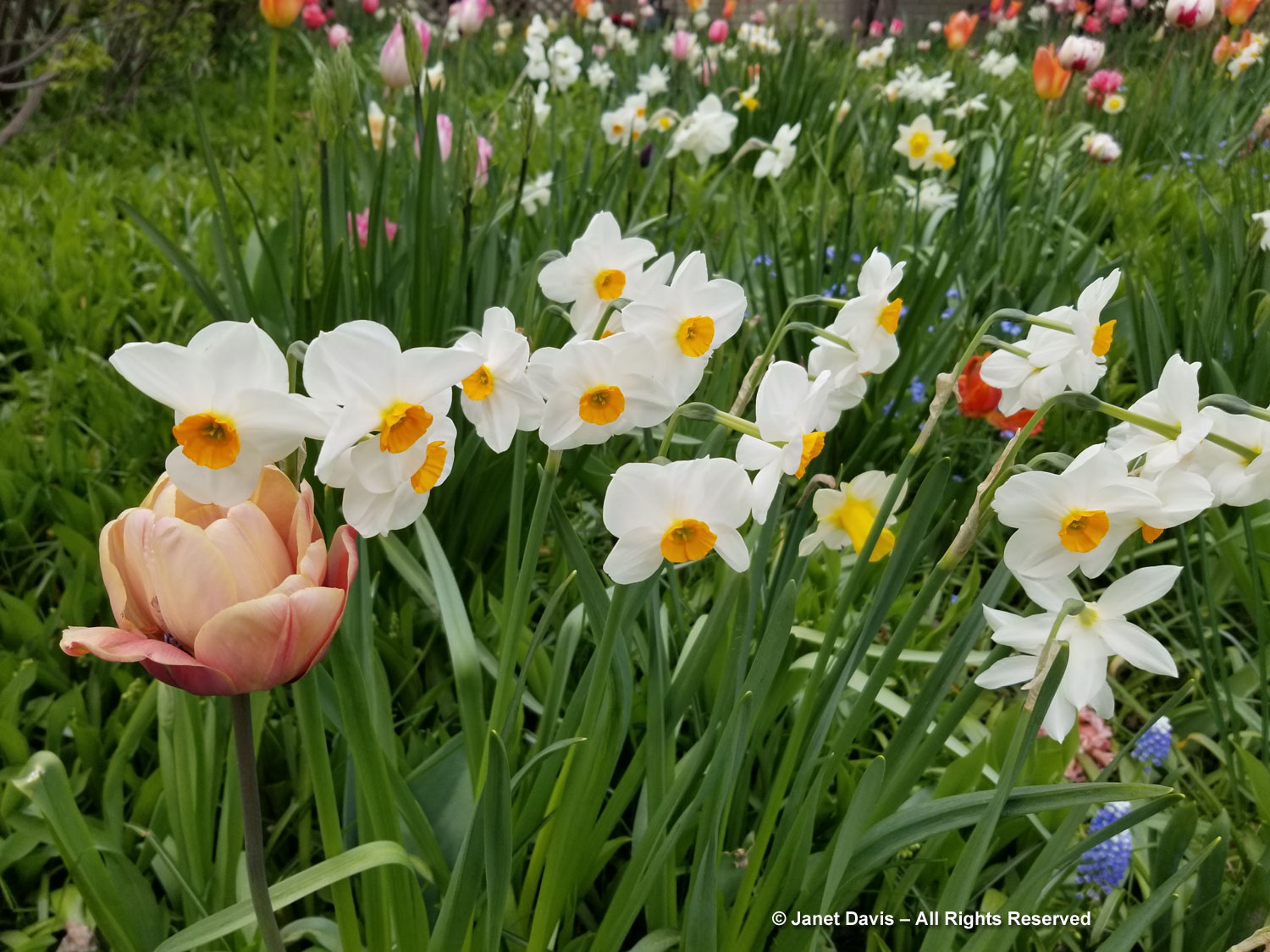
And the Triandus hybrid daffodil ‘Thalia’ – sometimes called the orchid narcissus – is another winner. Its dainty, white flowers with their reflexed petals are lovely in spring nosegays, especially with blue grape hyacinths.
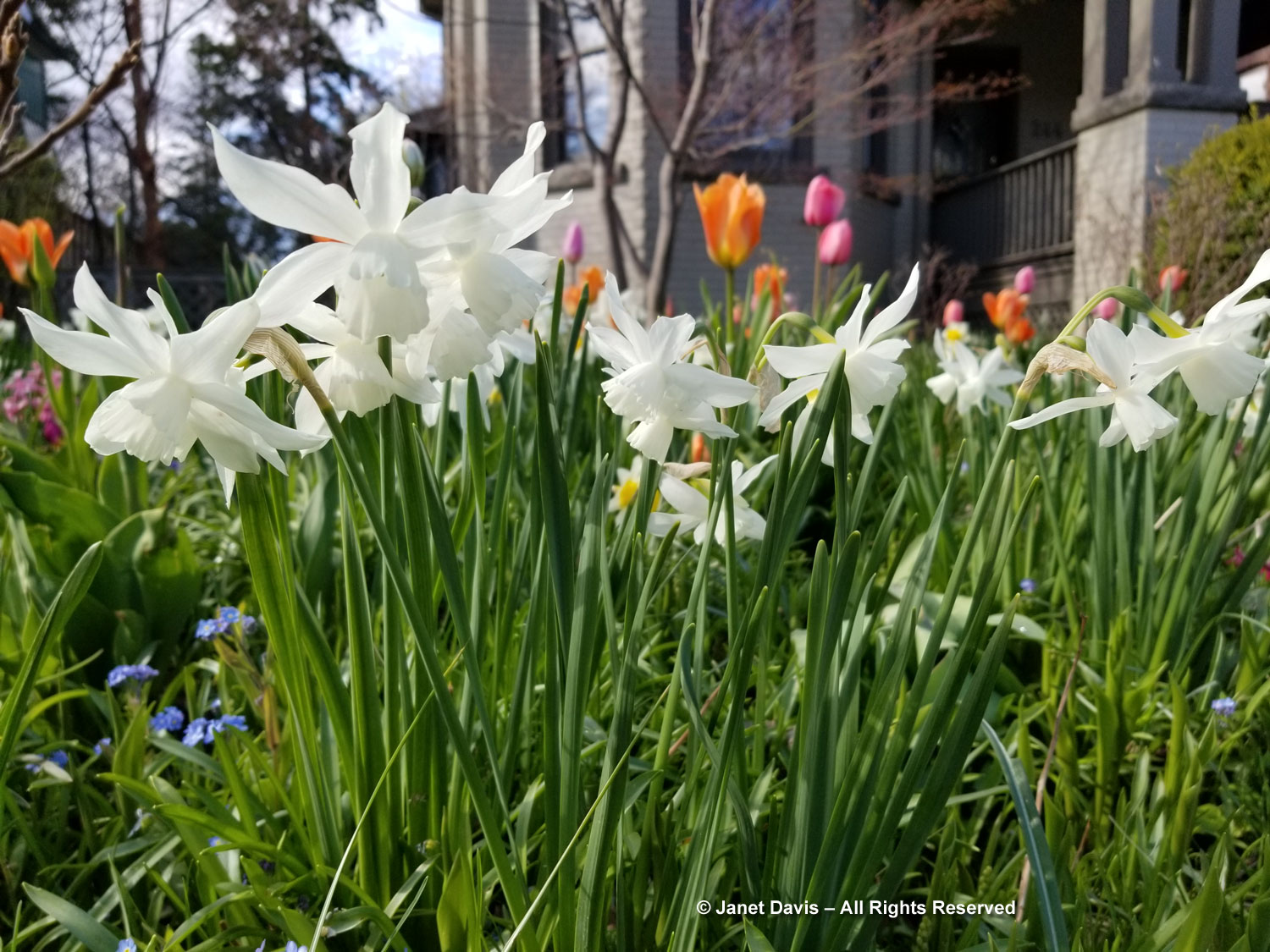
Here is ‘Thalia’ in the garden; you can see how it multiplies. And you can also see my favourite little Narcissus ‘Golden Echo’ still in bloom behind.
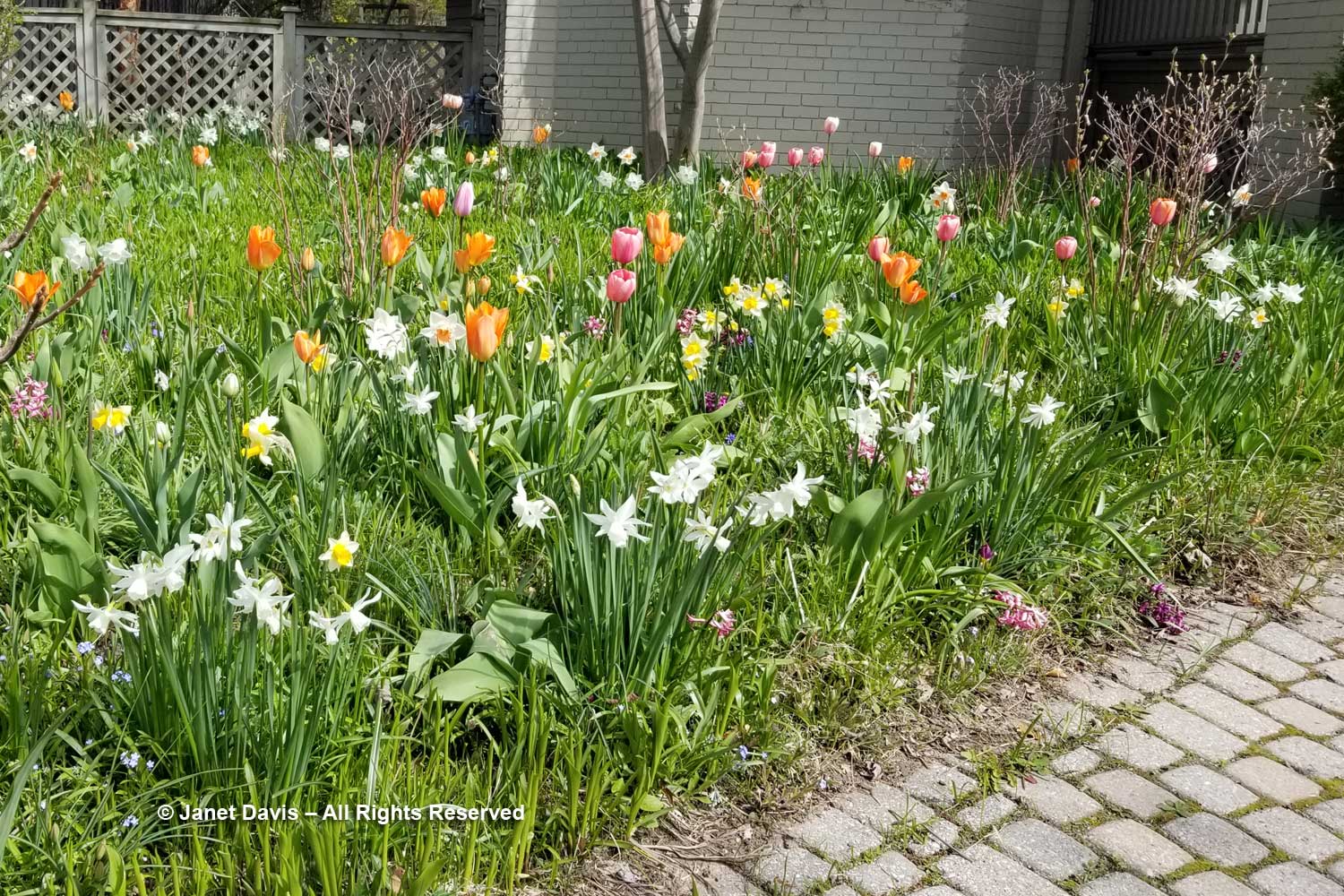
I do have a fondness for white daffodils (as well as ‘Golden Echo’), and I love those with salmon-pink trumpets, like ‘Pink Charm’, below.
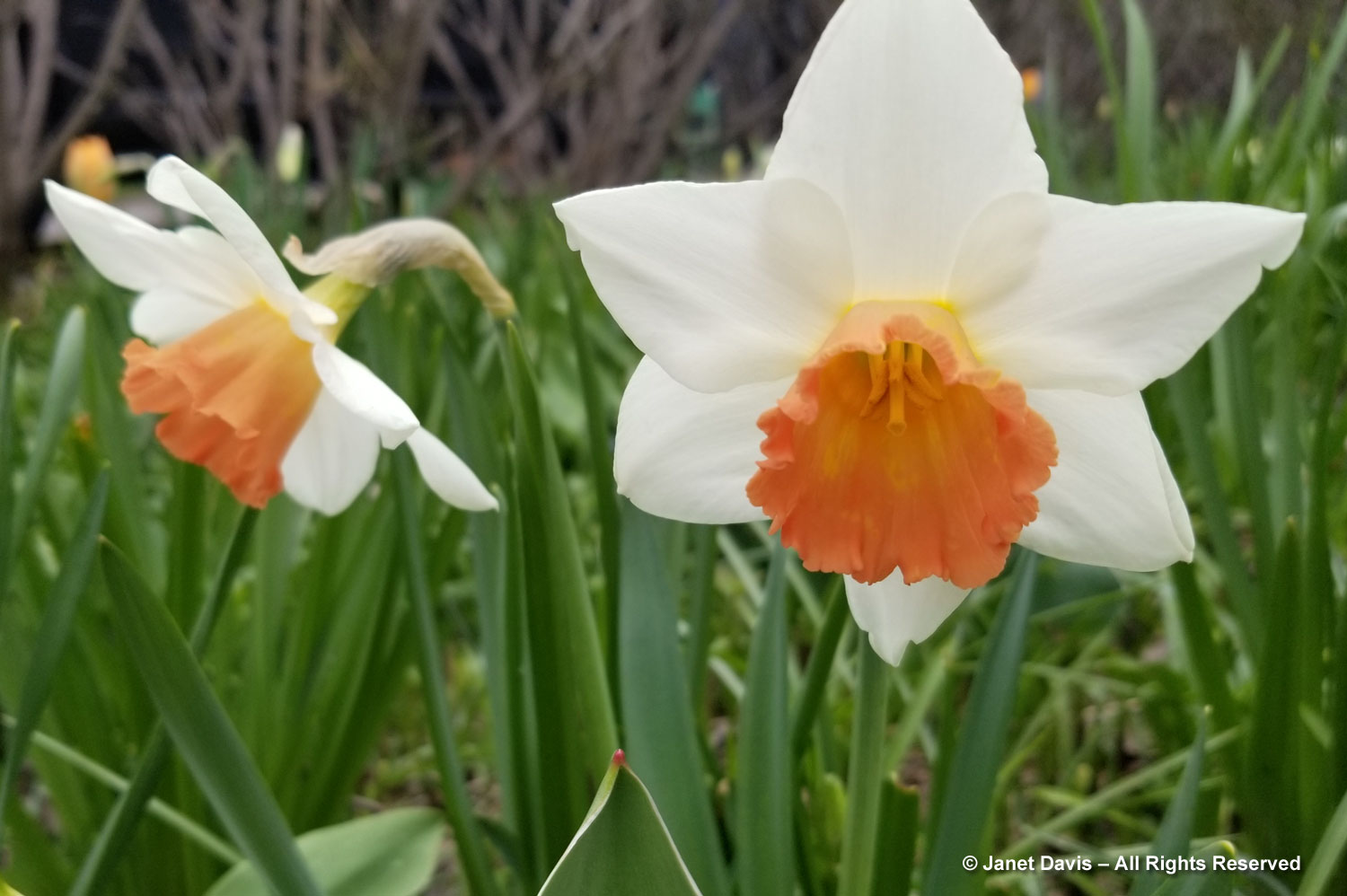
Finally, there’s the Large Cup daffodil ‘Stainless’ with pure white flowers, on the left below.
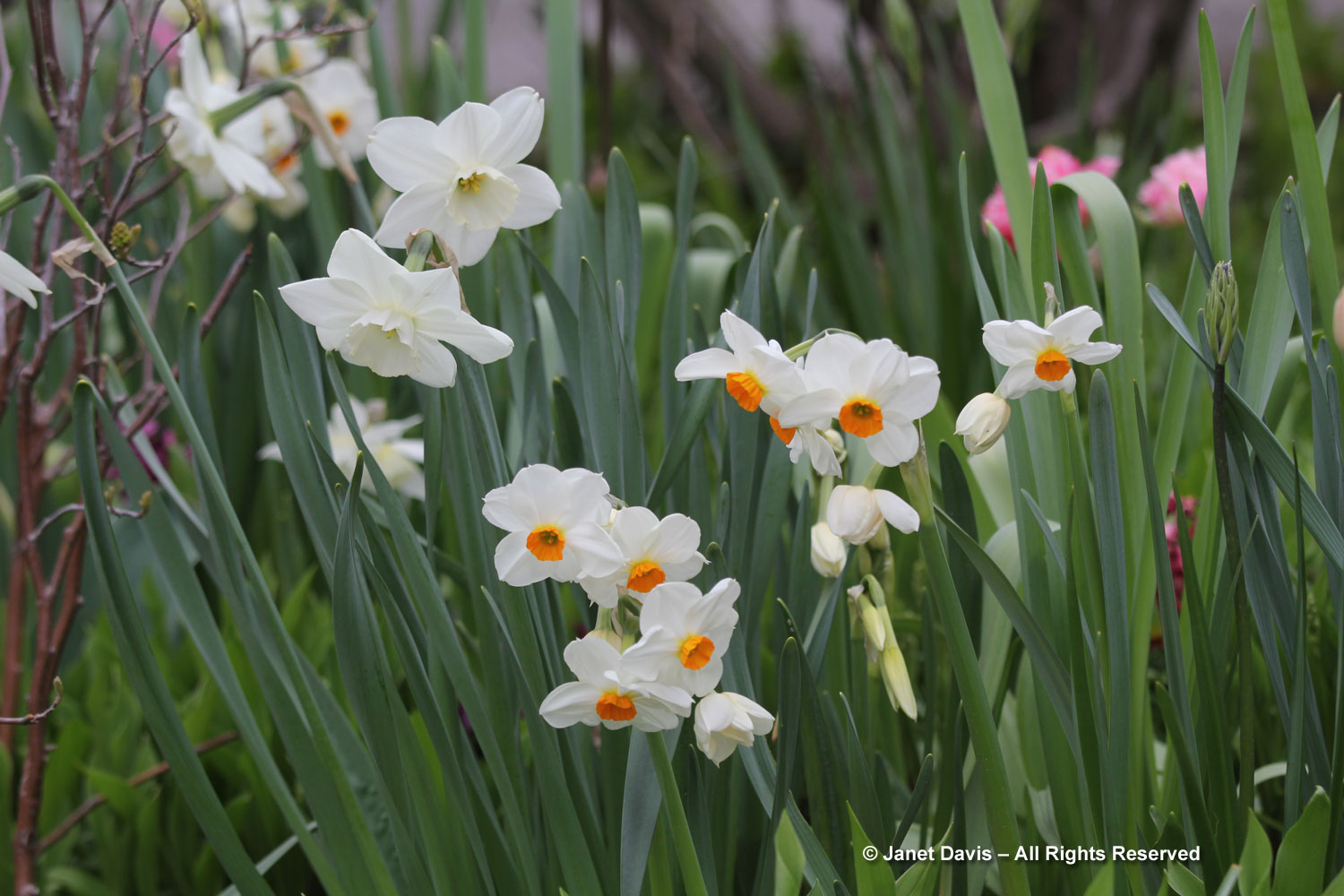
The hyacinths from my last fairy crown fade in colour but stay in flower for a long period. Because I love plant combinations of blue and orange, I mix the bulbs of peach-orange ‘Gipsy Queen’ hyacinth and blue-and-white grape hyacinth Muscari aucheri ‘Ocean Magic’ together with delightful results!
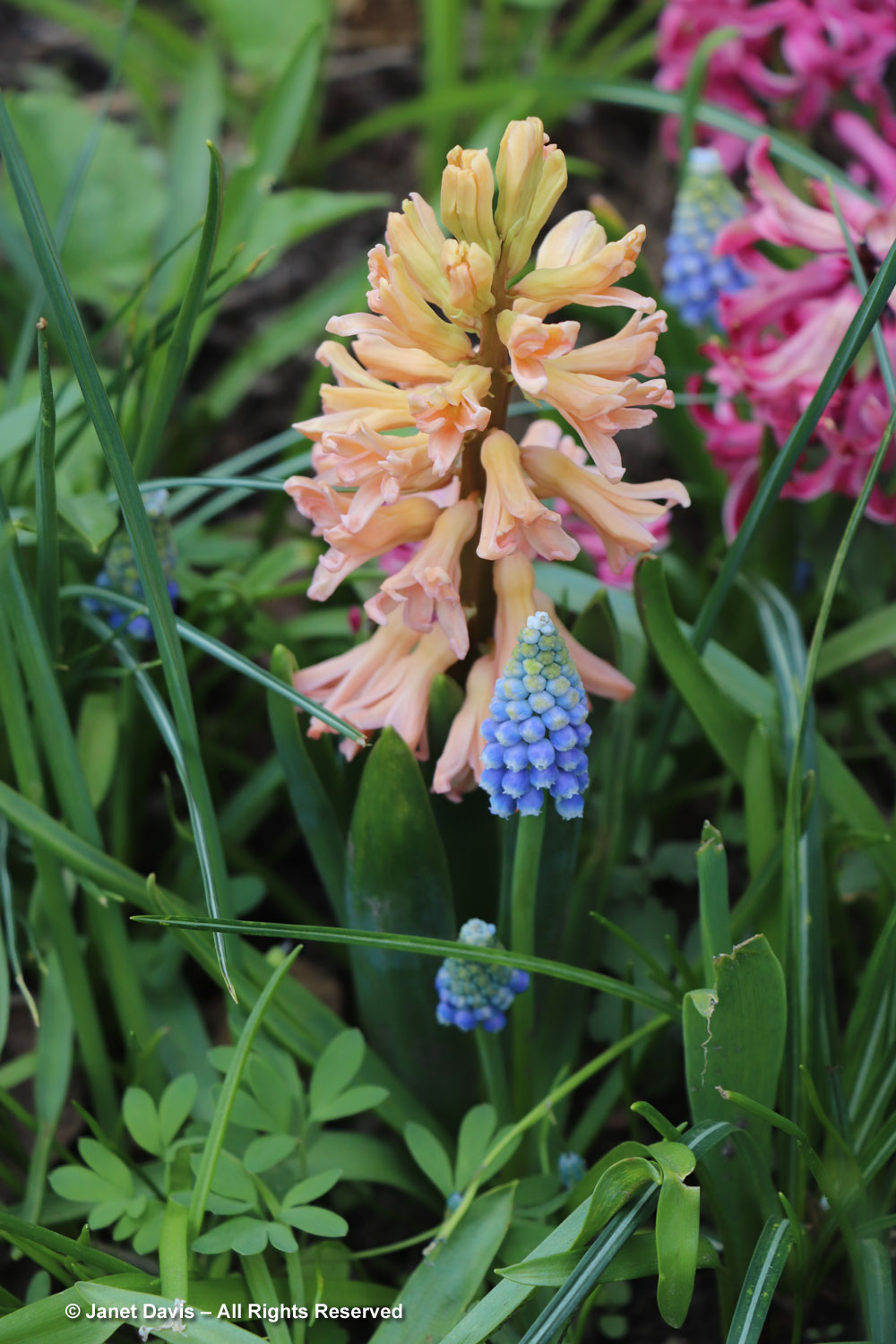
That little grape hyacinth is a stunner in tiny bouquets, too. Here it is with Narcissus ‘Thalia’, Muscari latifolium and Anemone blanda ‘Blue Shades’.
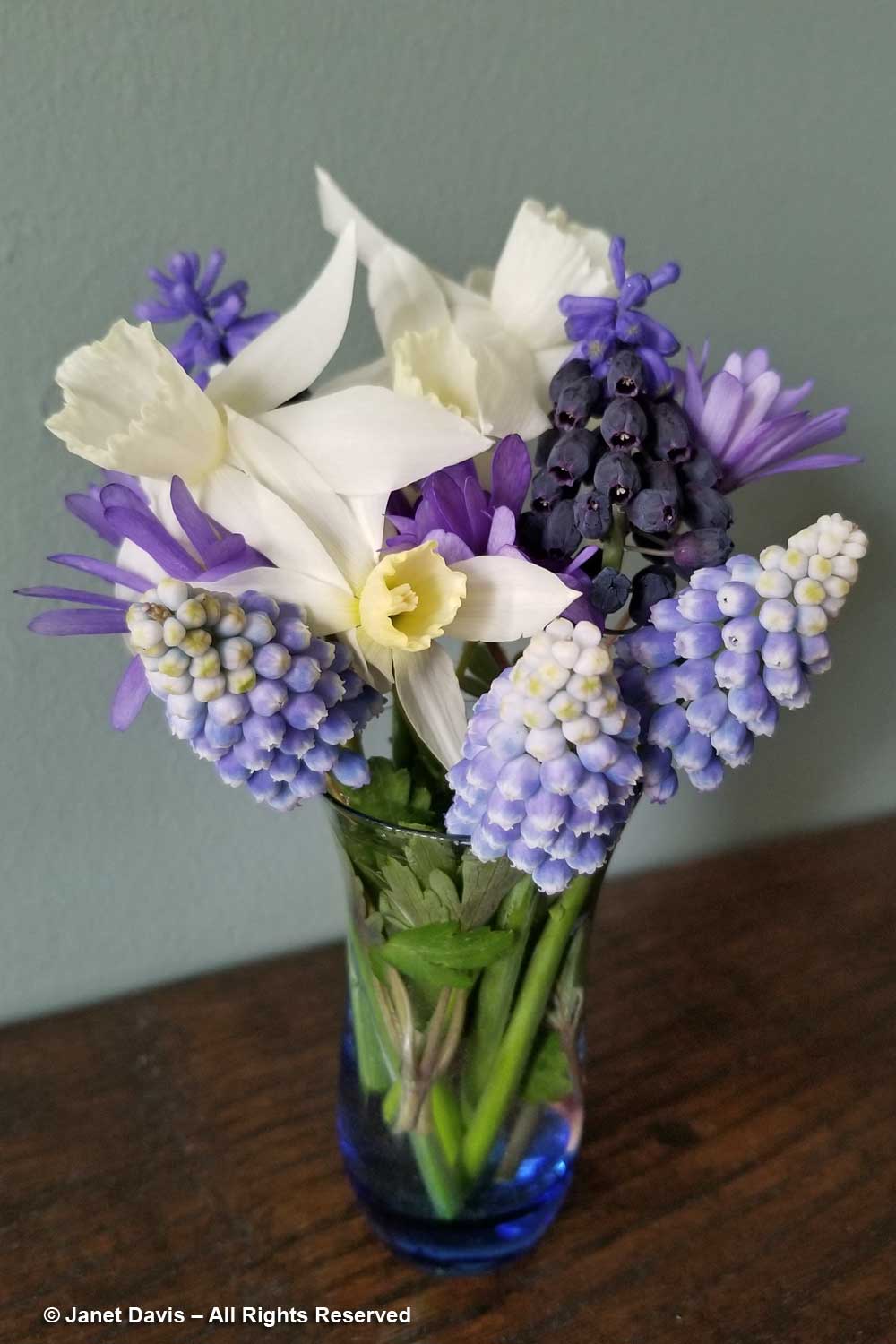
Snake’s head fritillary (Fritillaria meleagaris) is an elegant dark horse in the mid-spring garden with its pendulous, checkered, wine-red flowers. The specific ephithet meleagris means “spotted like a guinea fowl” so another common name is the guinea hen flower.
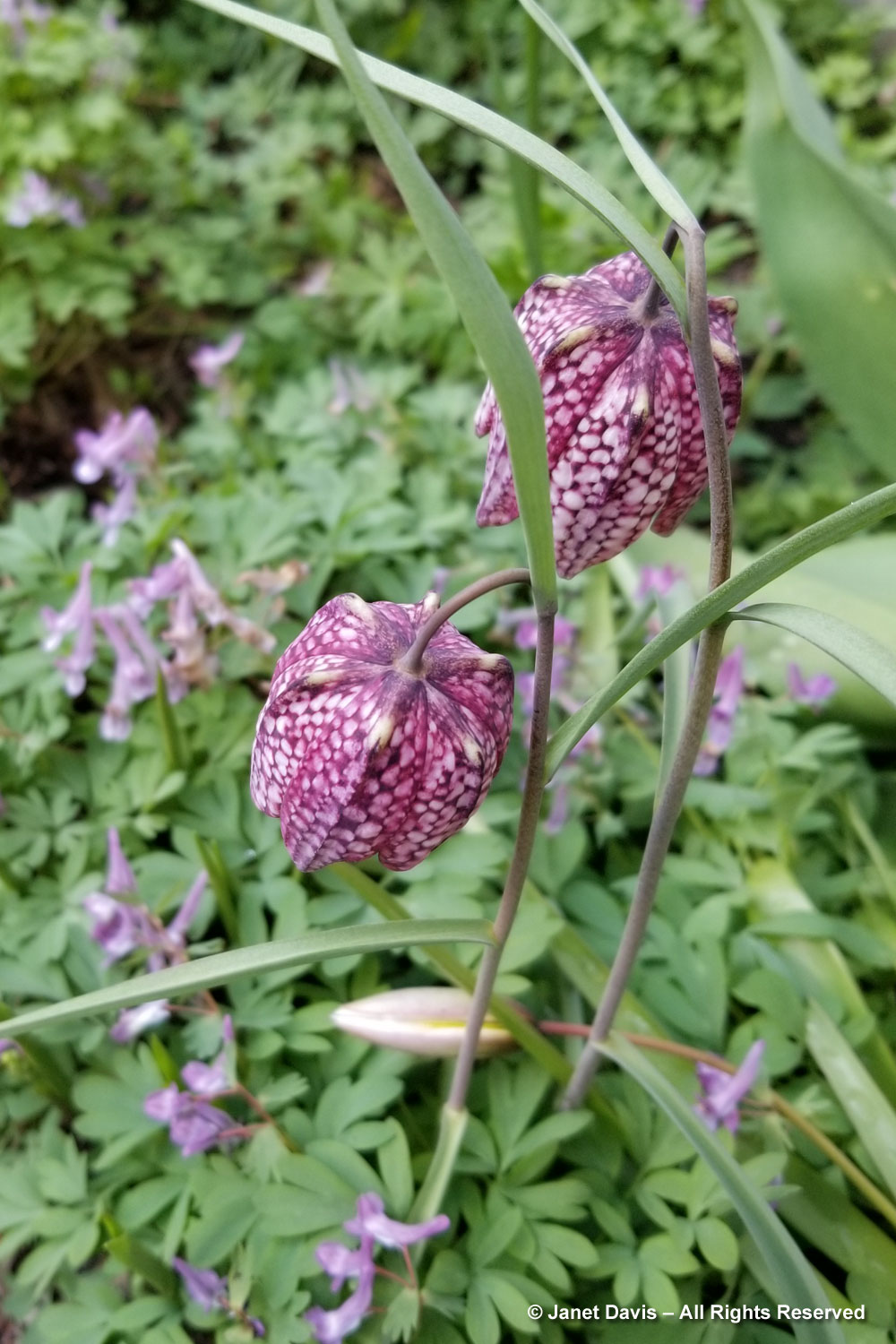
Though it’s not featured in my crown, another bulb blooming in my garden at this time is summer snowflake, Leucojum aestivum ‘Gravetye Giant’ (which, despite its name, is a spring-bloomer). I don’t have nearly enough of these elegant flowers.
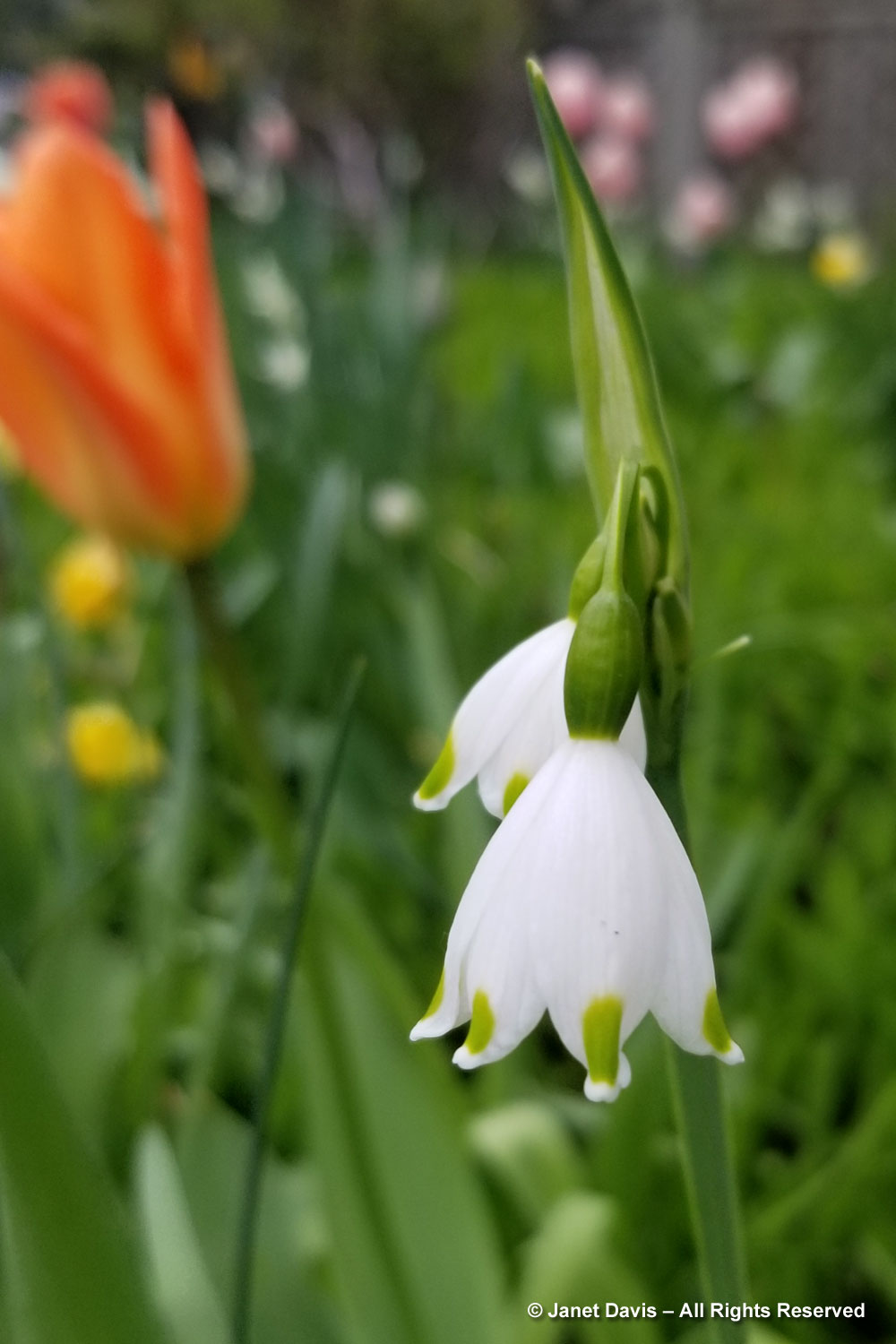
We often think of Japanese maples (Acer palmatum) primarily as specimen trees, but stand near one in flower on a sunny day in spring….
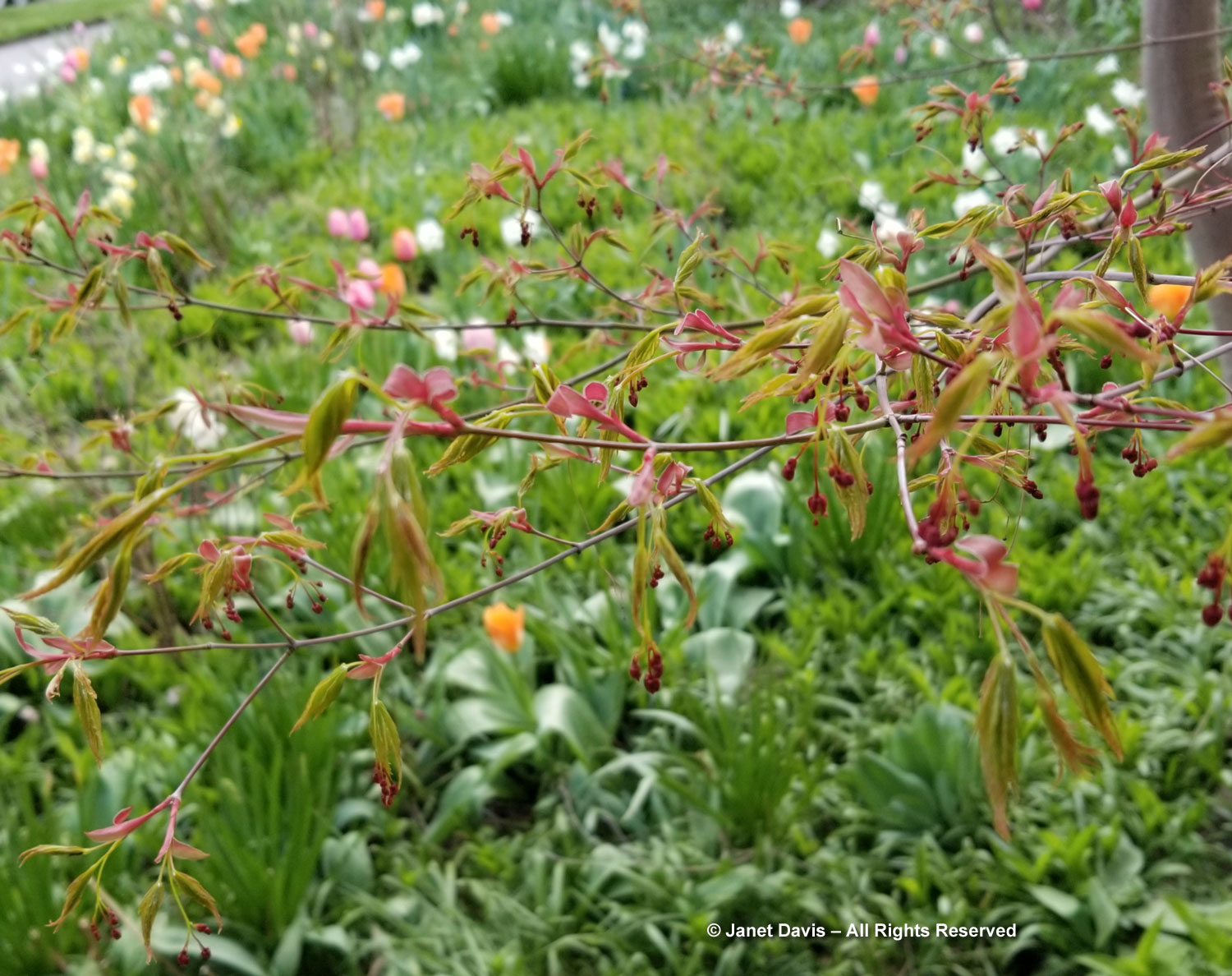
…. and try to count the native bees buzzing around the tiny, pendulous, red blossoms, like this spring-active Andrena bee. That’s the little dangling red jewel over my right eye in the fairy crown.
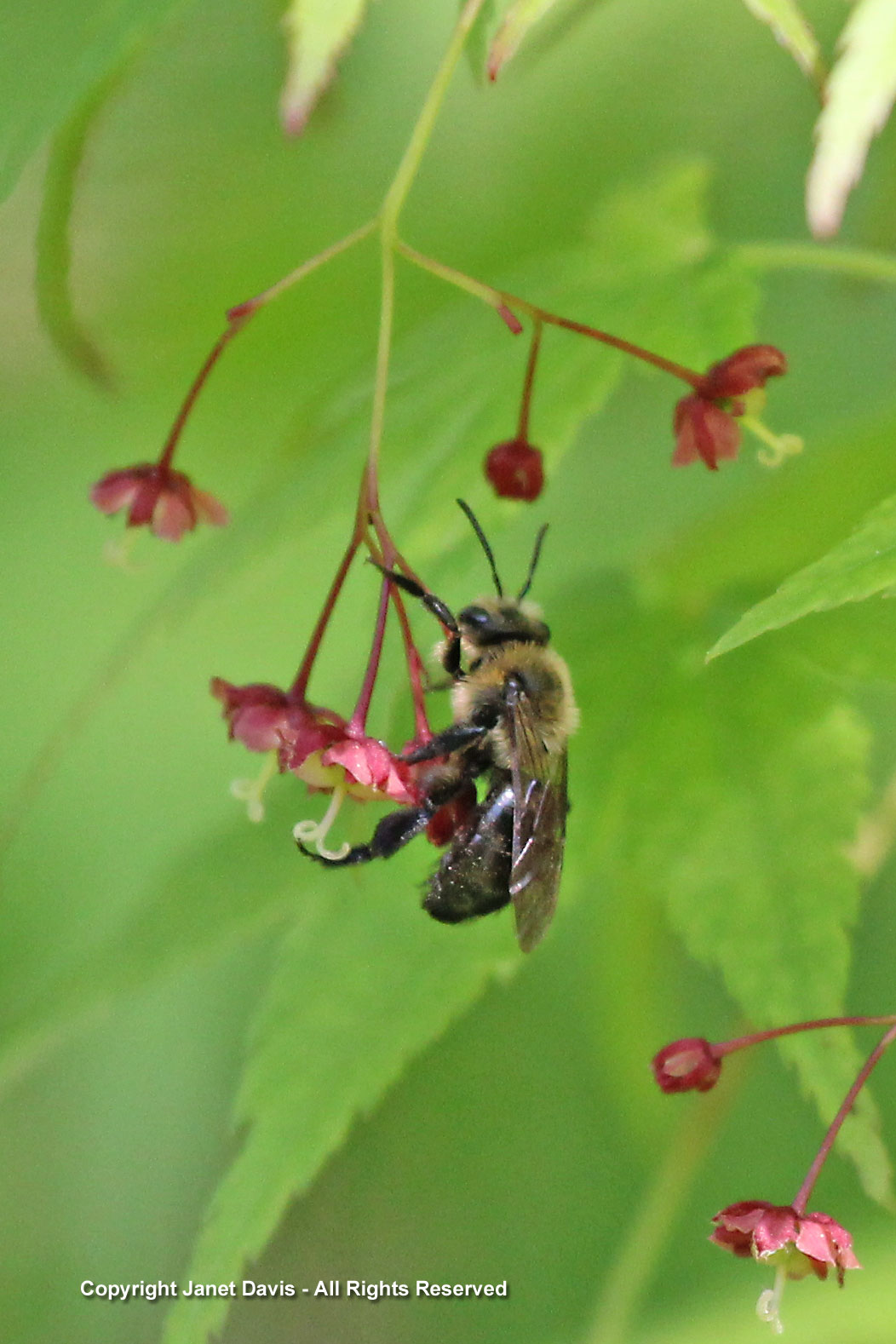
My old tree is planted in a south-facing site in front of our living room windows where it is protected from the cold, north wind – and serves as my leafy curtain from May through November. Here it is outside my 2nd-floor window (and that’s my husband strolling out in a spring shower.)
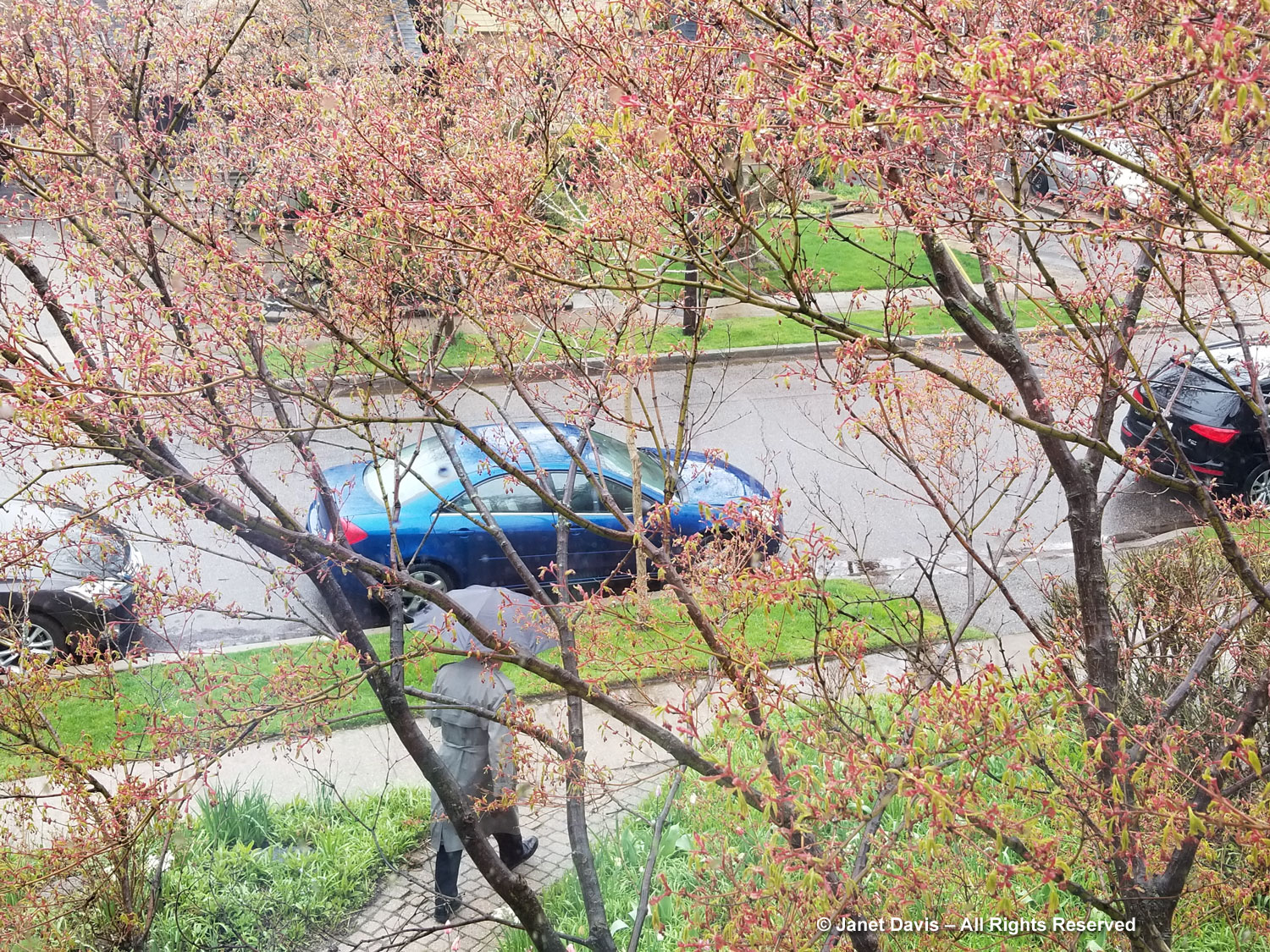
Heading into my back garden, we find the tiny blue flowers of Siberian bugloss (Brunnera macrophylla), a frothy groundcover perennial under spring bulbs. It thrives in part shade and is low-maintenance, ultra-hardy, long-flowering and unbothered by pests or disease. There are many variegated-leaf cultivars, but I am partial to the regular species with its lush green leaves. Here it is growing with rhubarb and European wild ginger (Asarum europaeum).
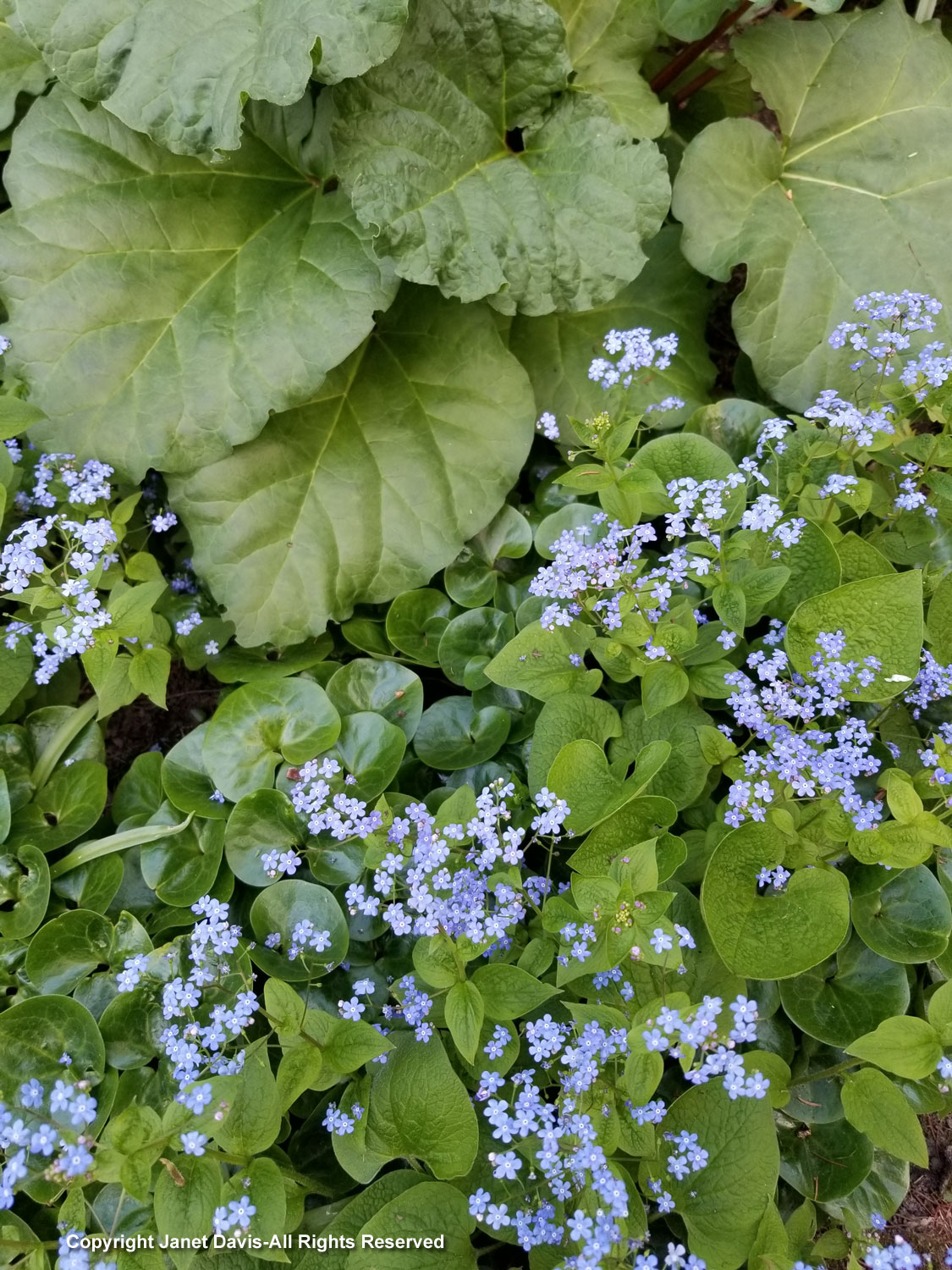
My back garden has a thriving population of ostrich ferns, which is a nice way of saying they’re very successful invaders. Growing amidst them are lots of mid-season tulips whose names I’ve long forgotten, but I believe the magenta-pink one is ‘Don Quichotte’. Aren’t they pretty?
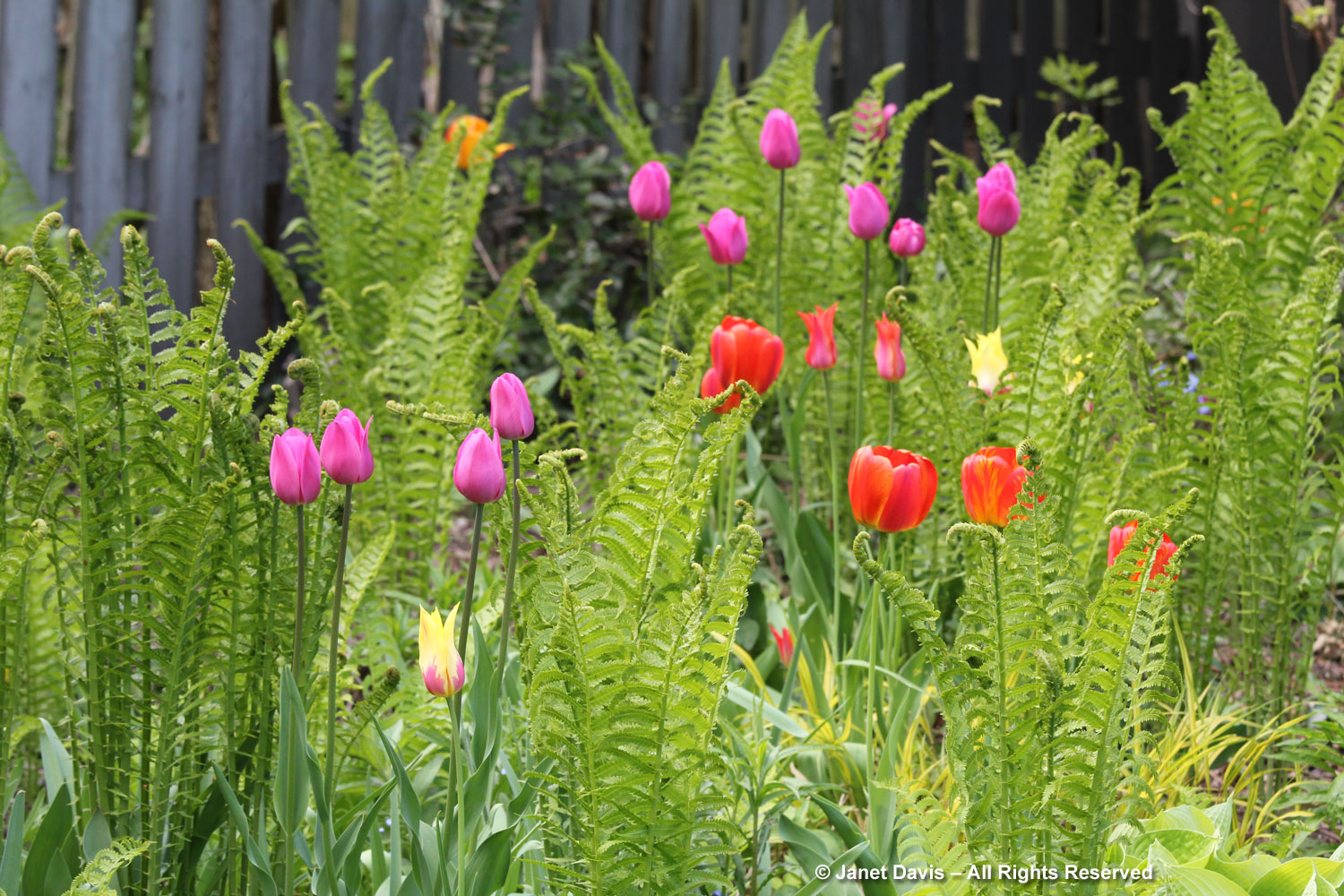
Not all plants in a garden last indefinitely. Some barely hang on, others fight disease, some struggle with winter temperatures – and that’s the case with my Mezitt-hybrid Rhododendron ‘PJM’. At one time, I had three of these hardy, small-flowered shrubs near my lily pond, but over the years they declined, leaving just one to greet spring with its clusters of outrageously brilliant magenta flowers – and a place of honor in my fairy crown.
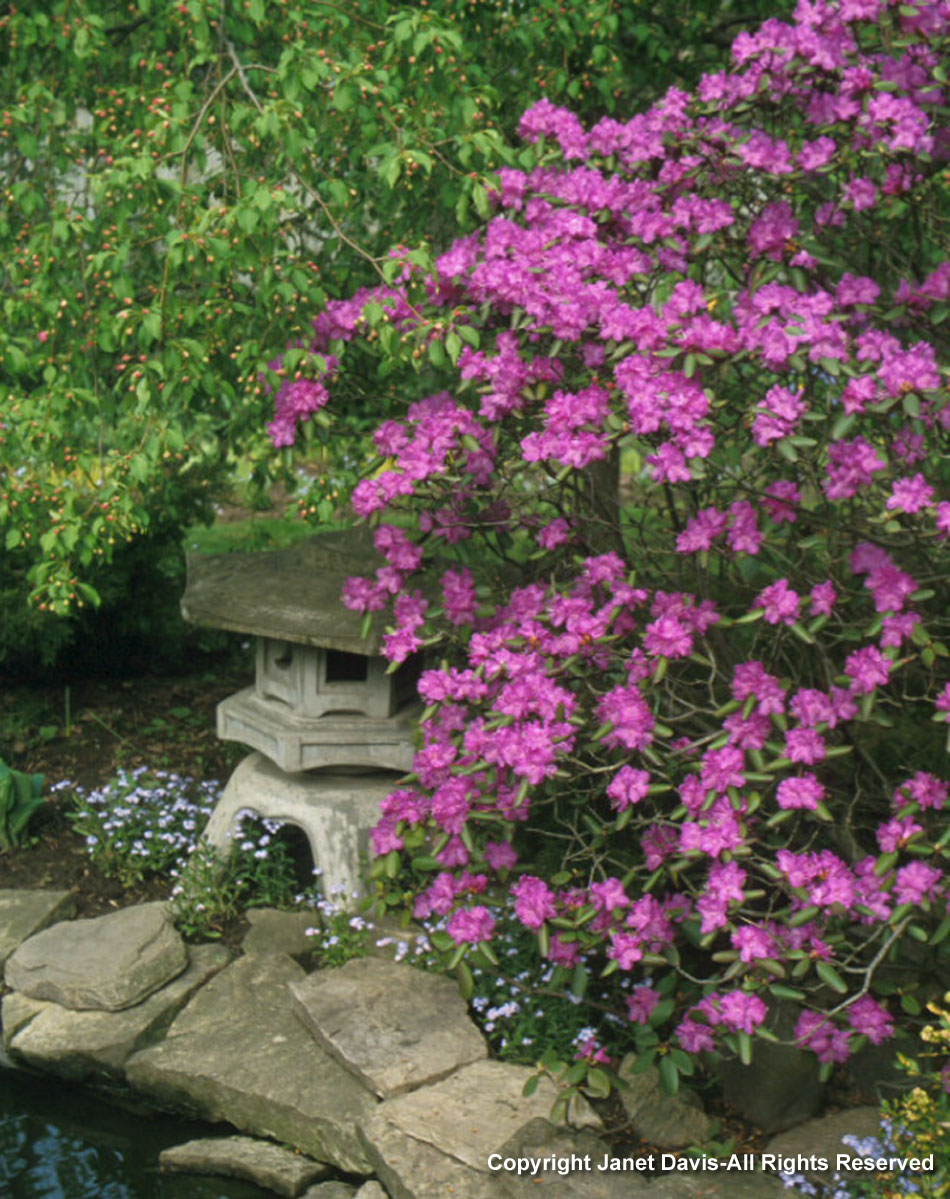
Speaking of my crown, I’ll leave with a little bouquet of my deconstructed Fairy Crown #4. What could be prettier than these lovely May flowers?
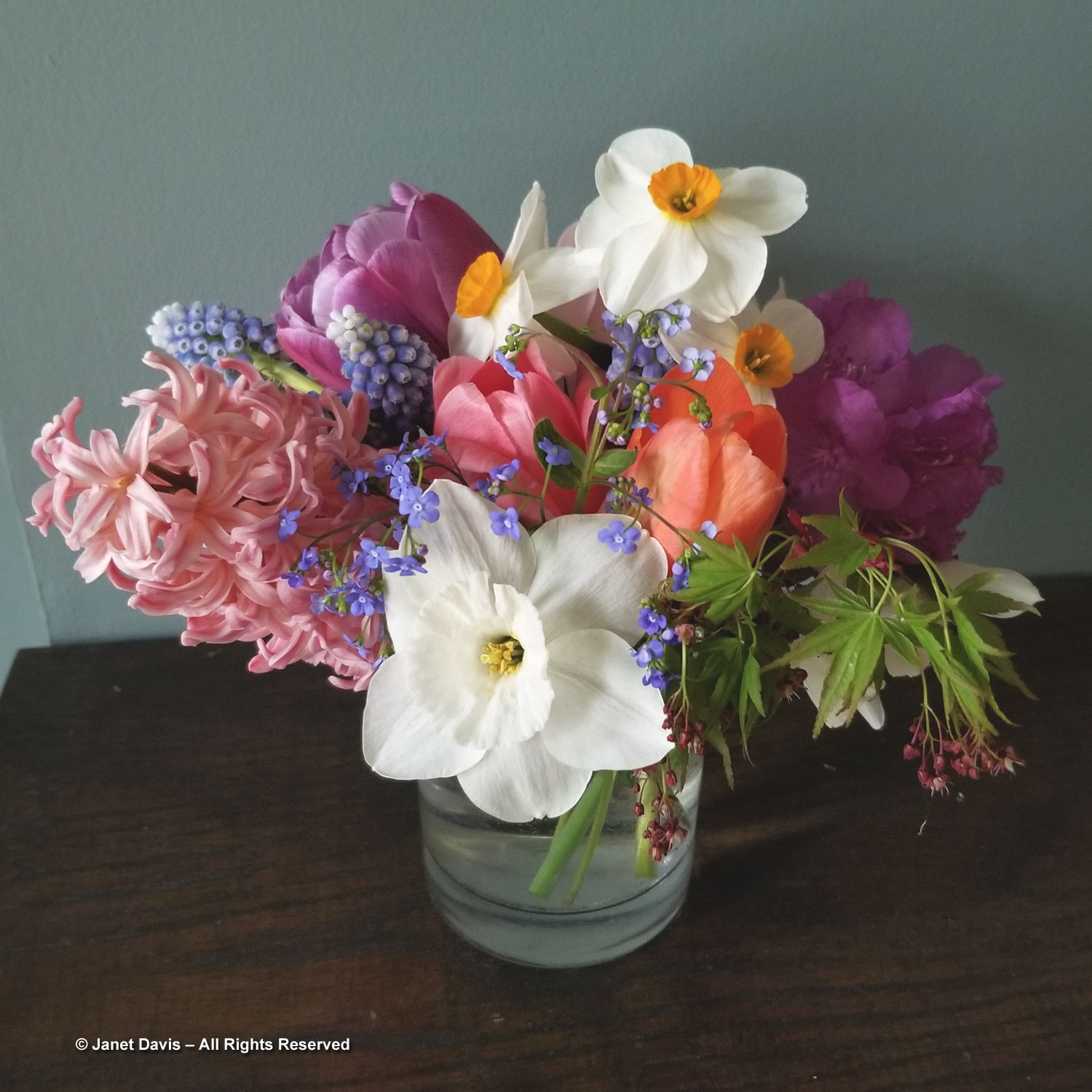
********
Want to see more of my Fairy Crowns?

